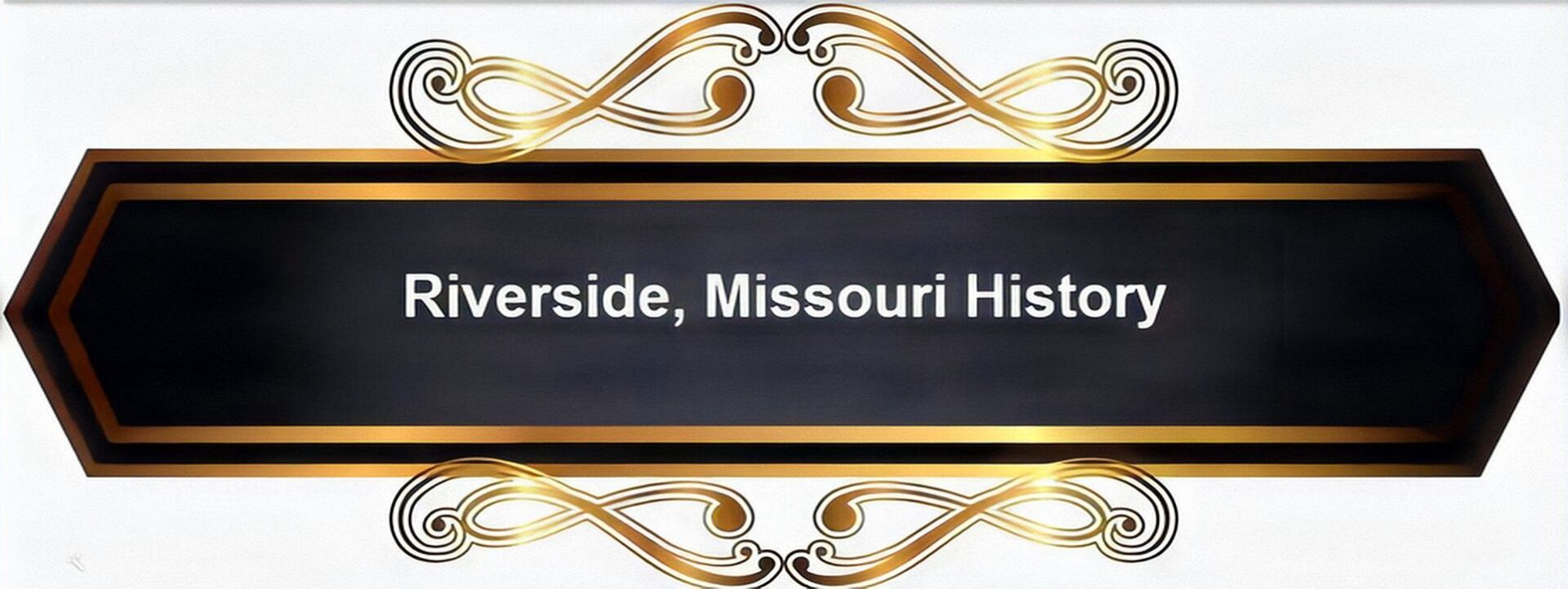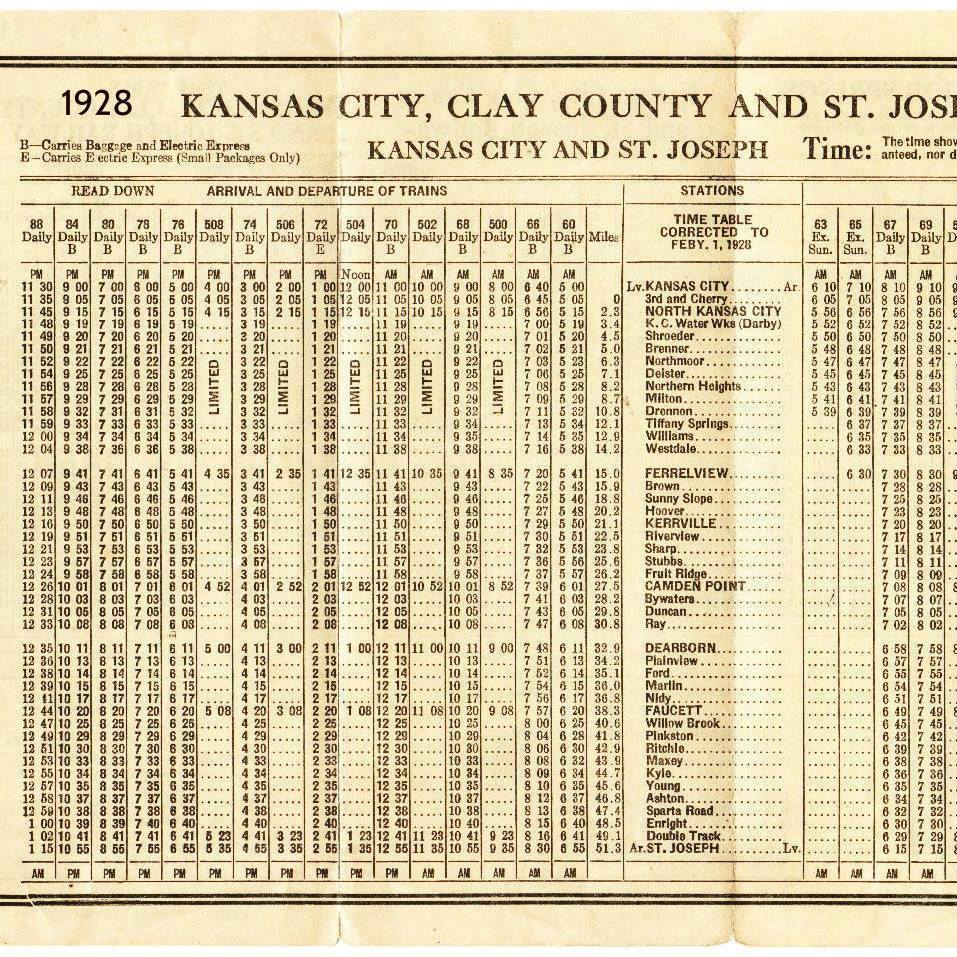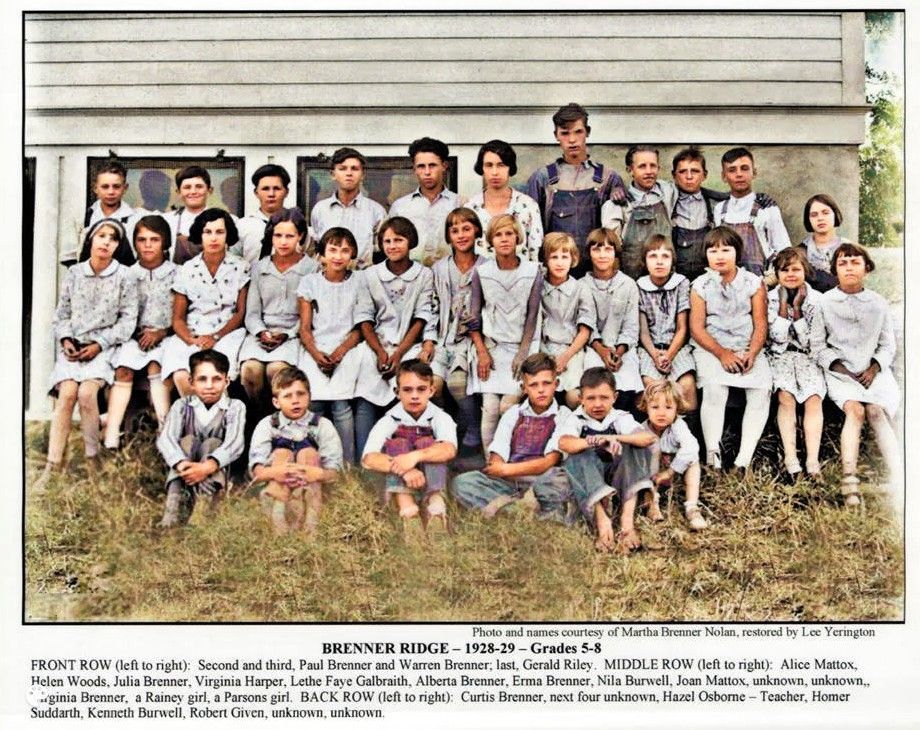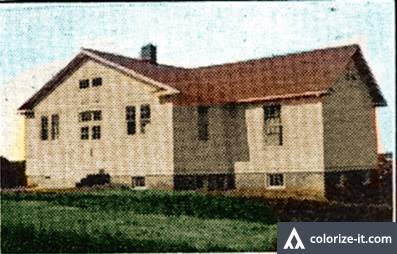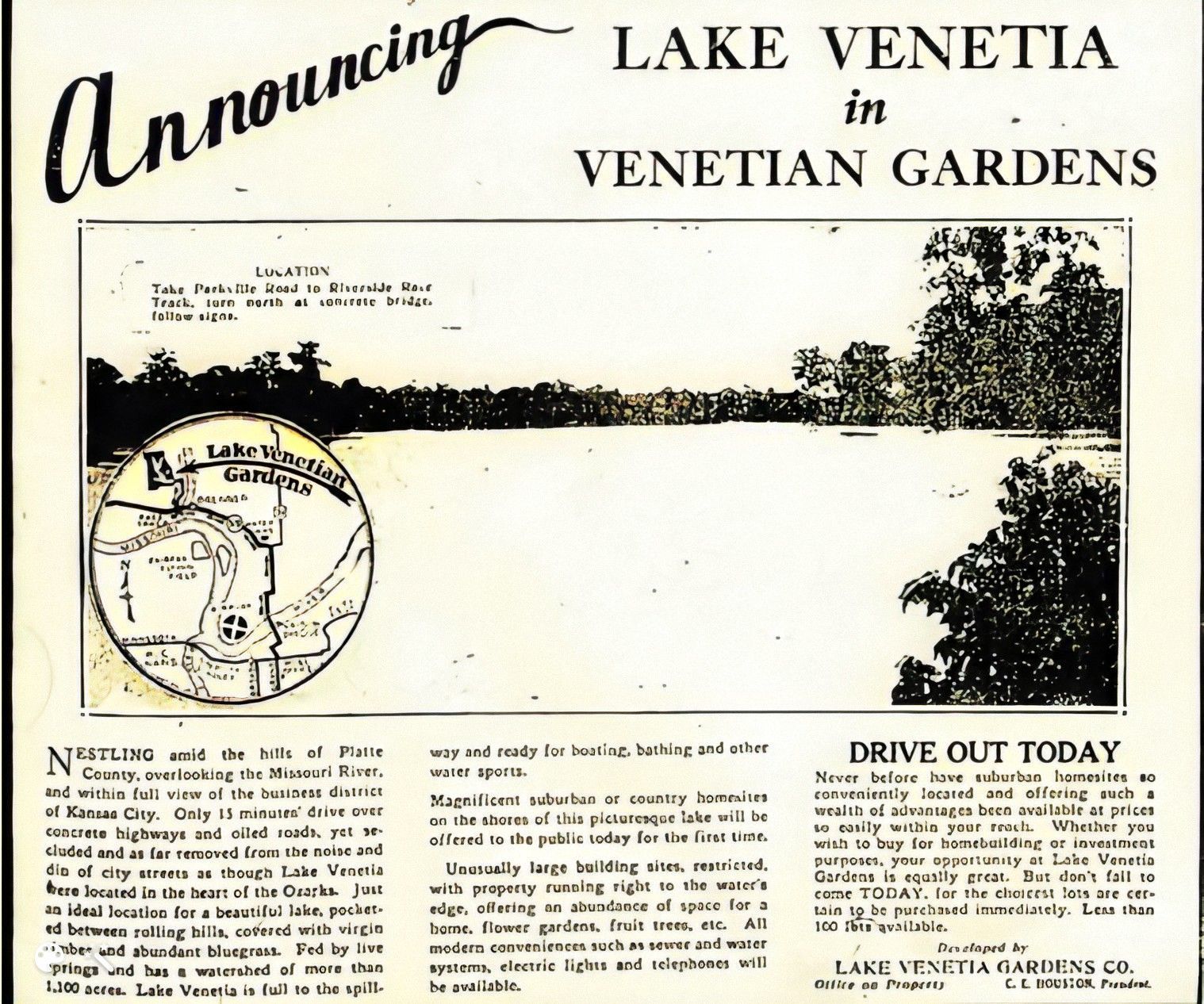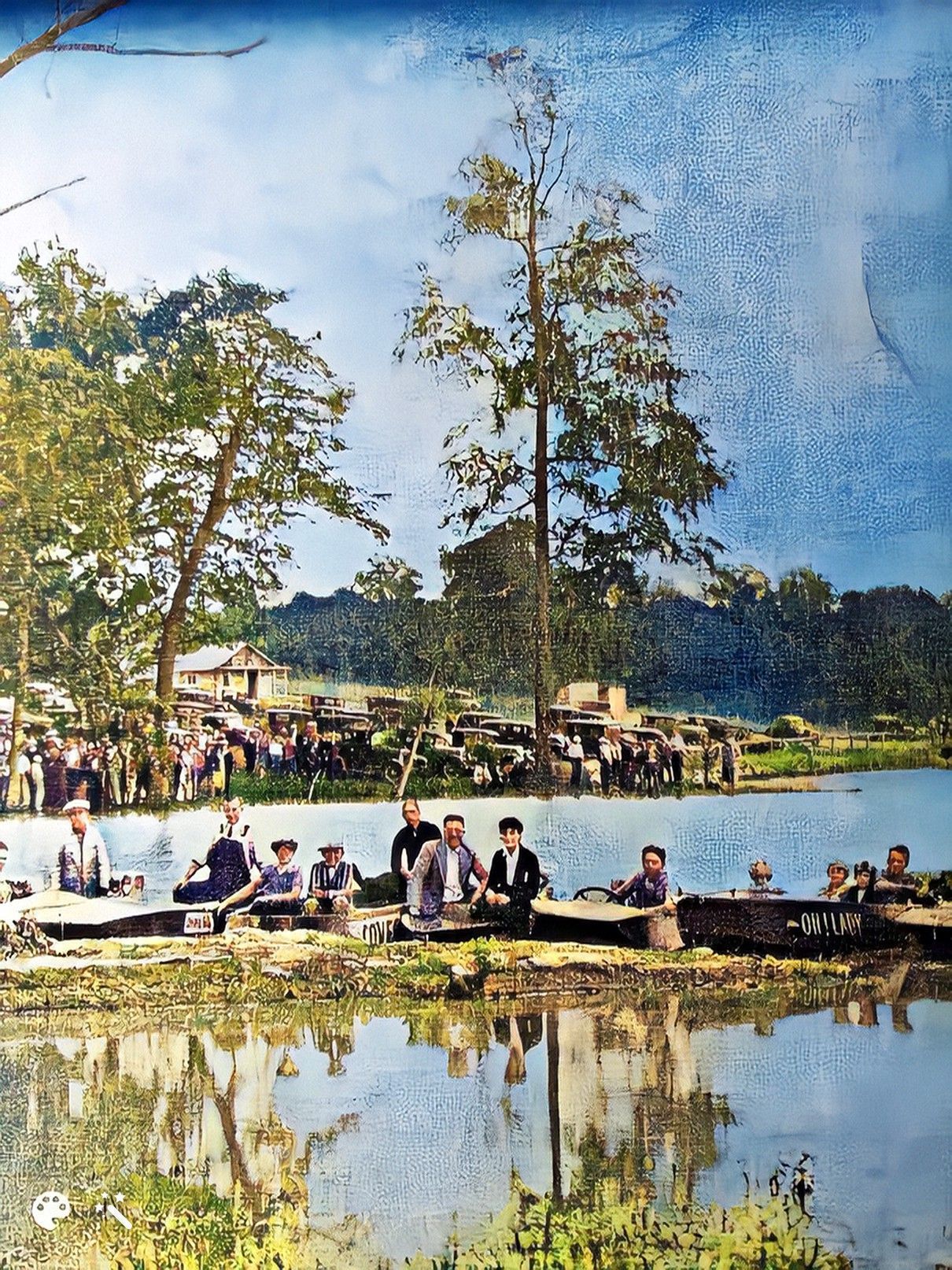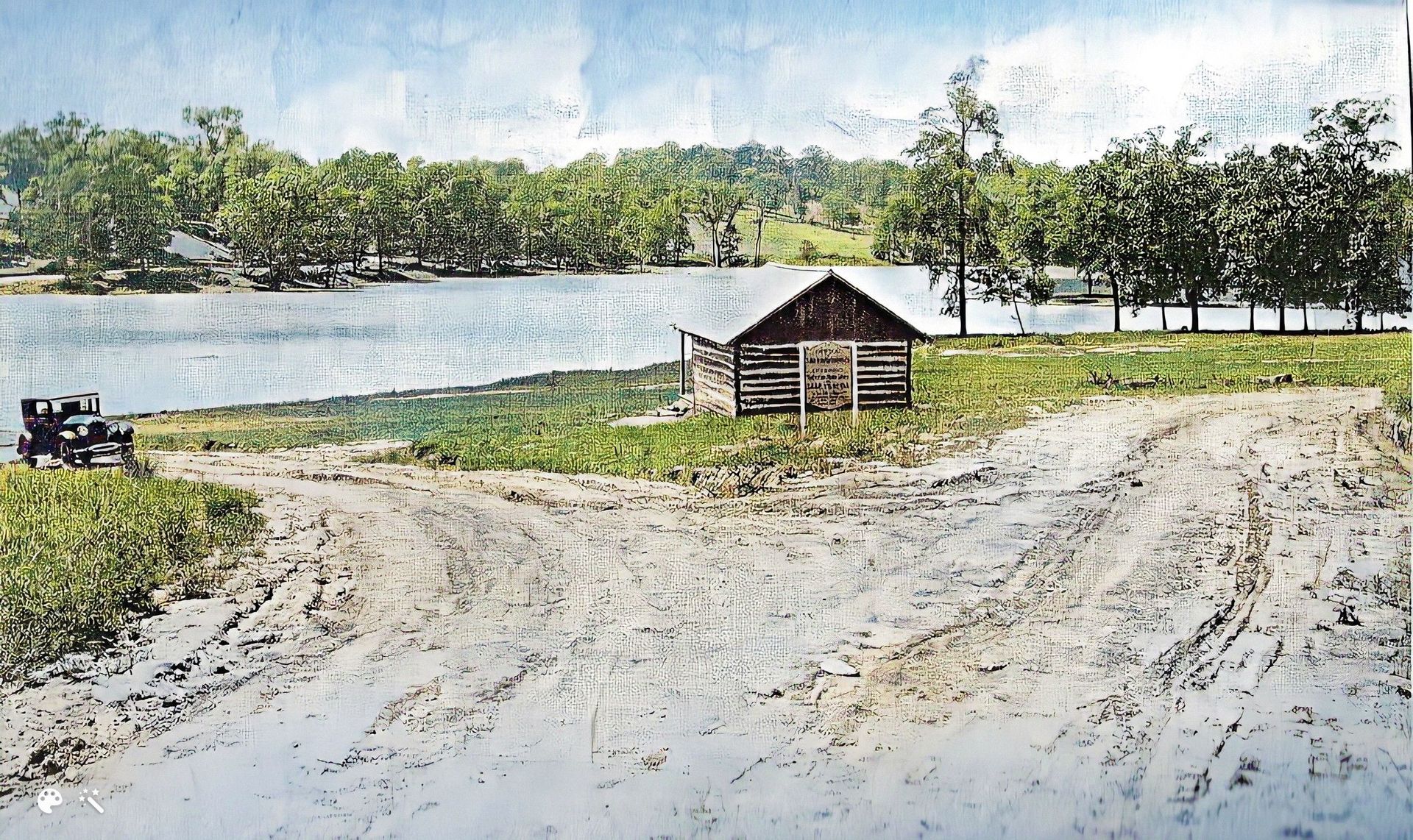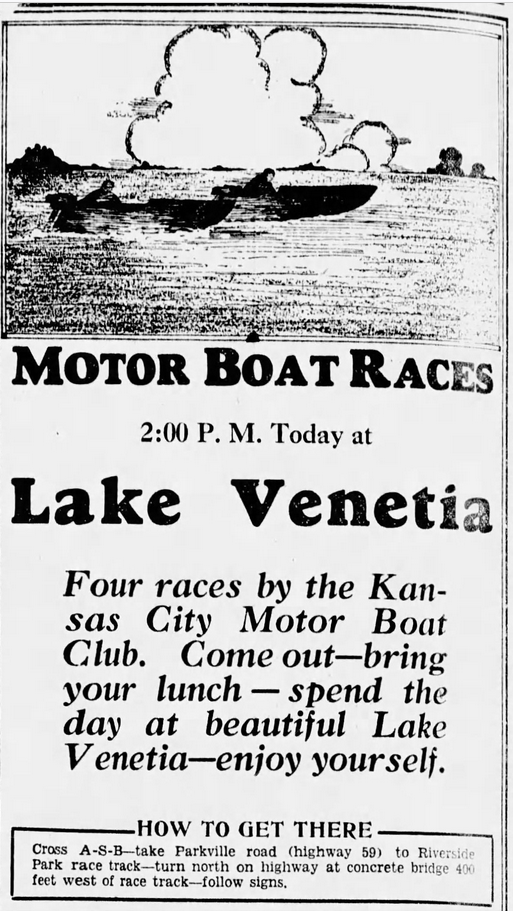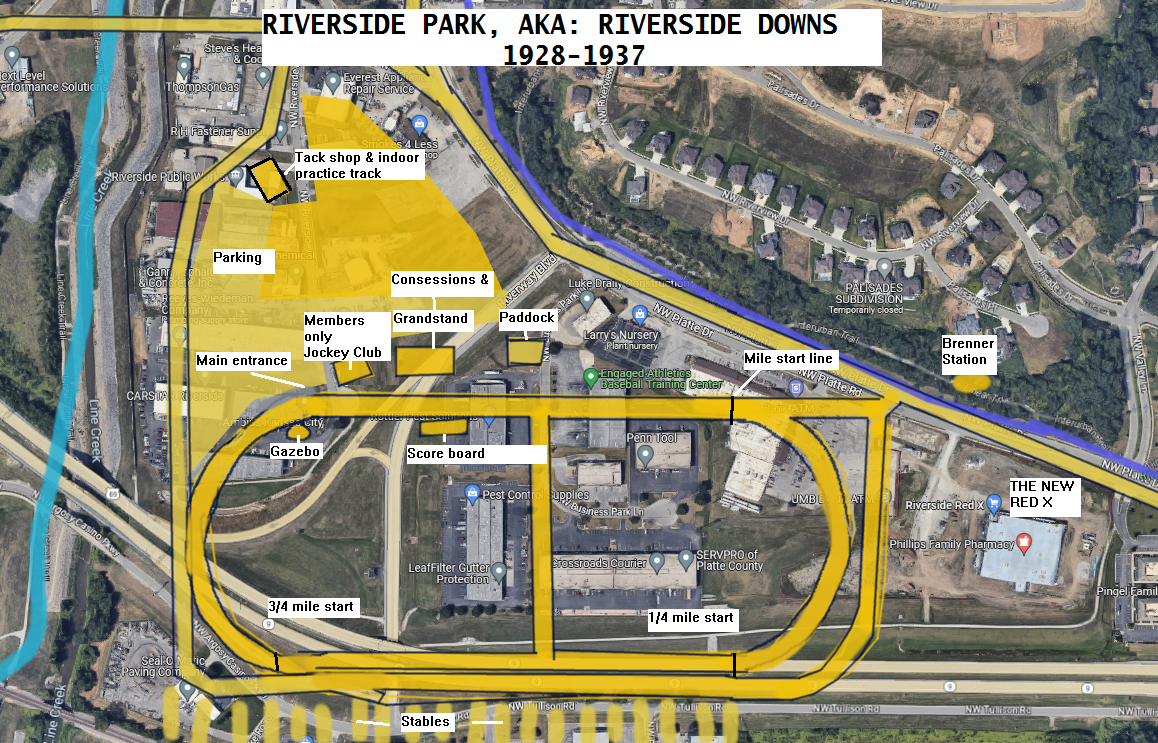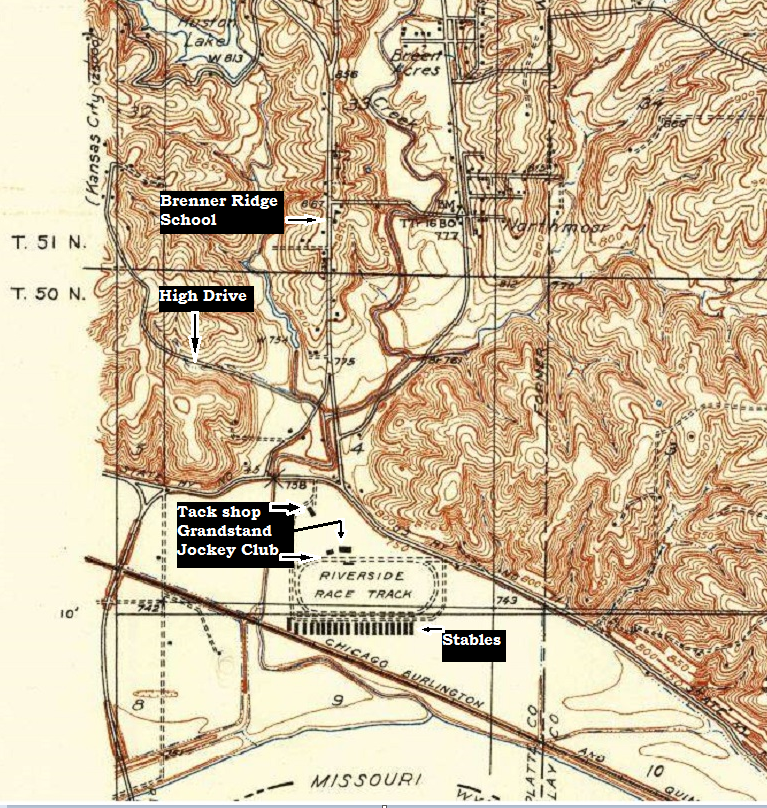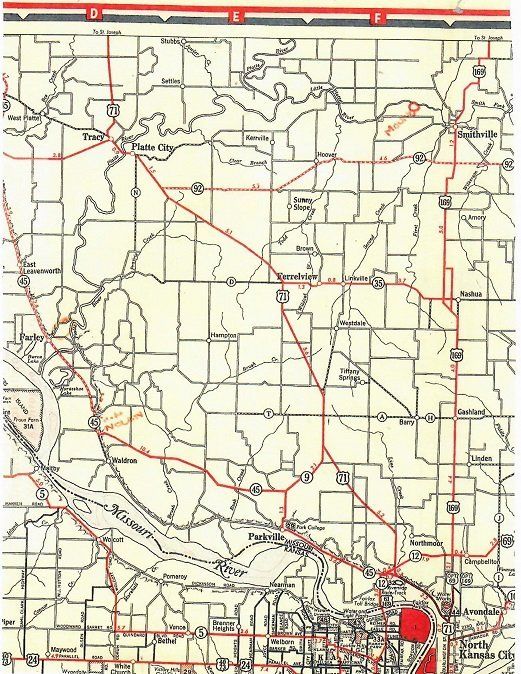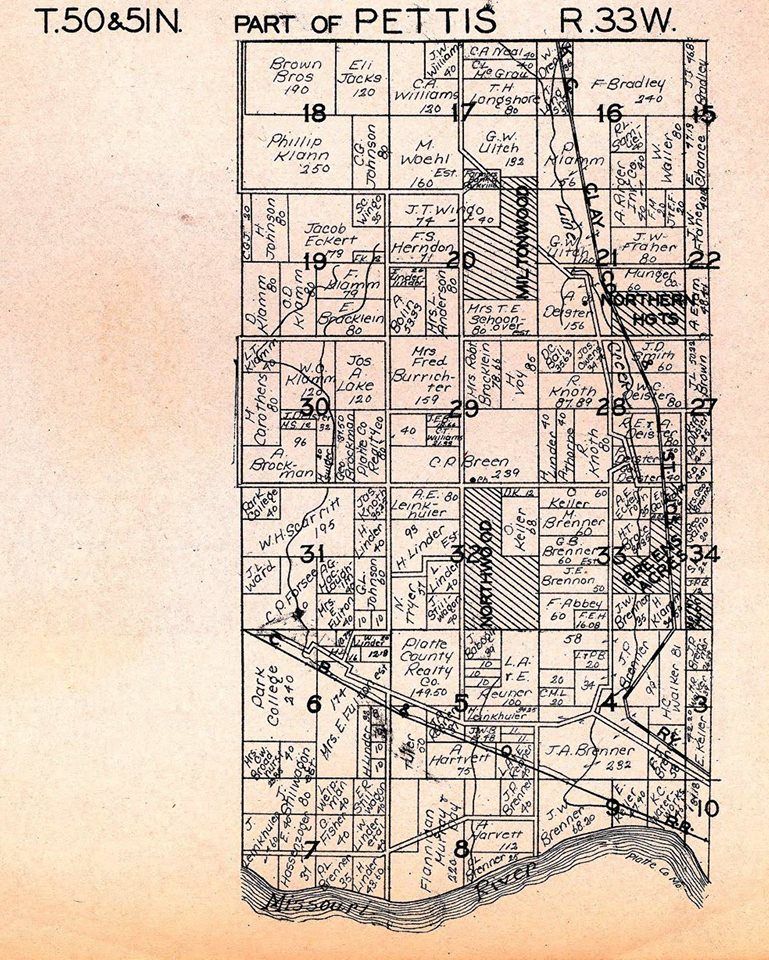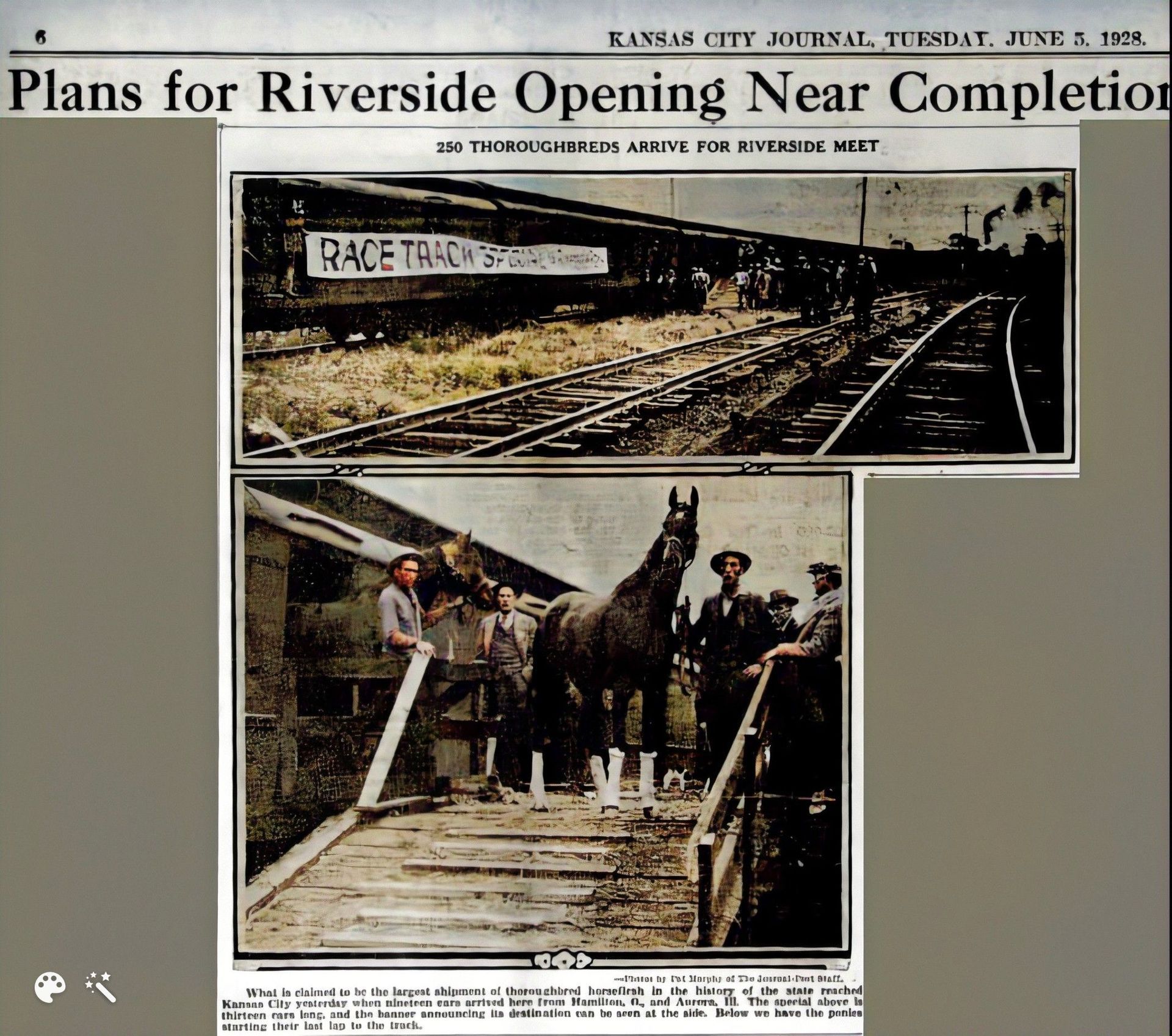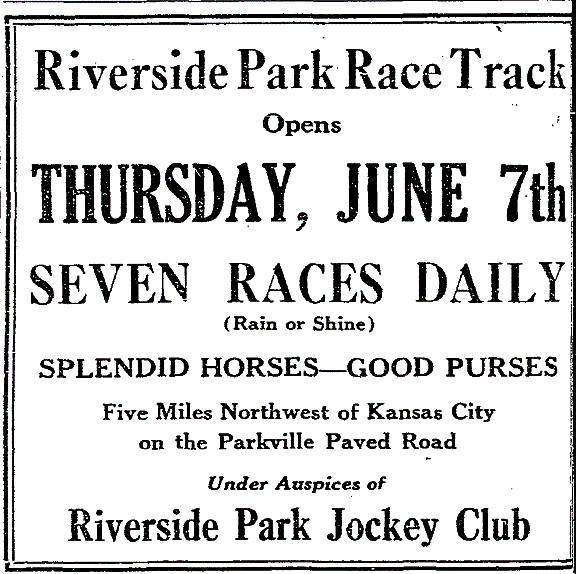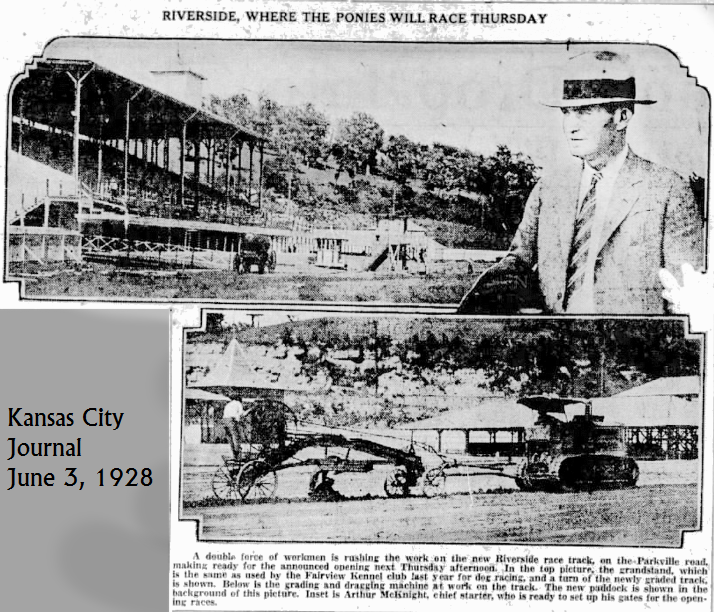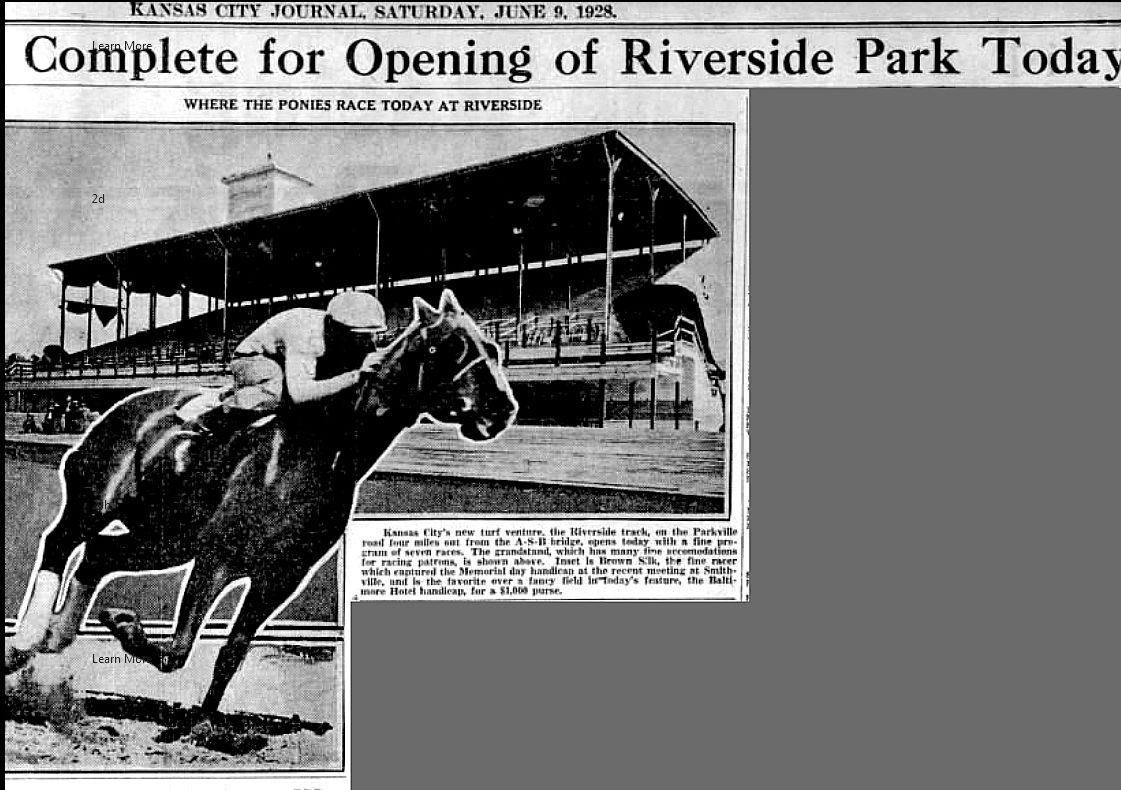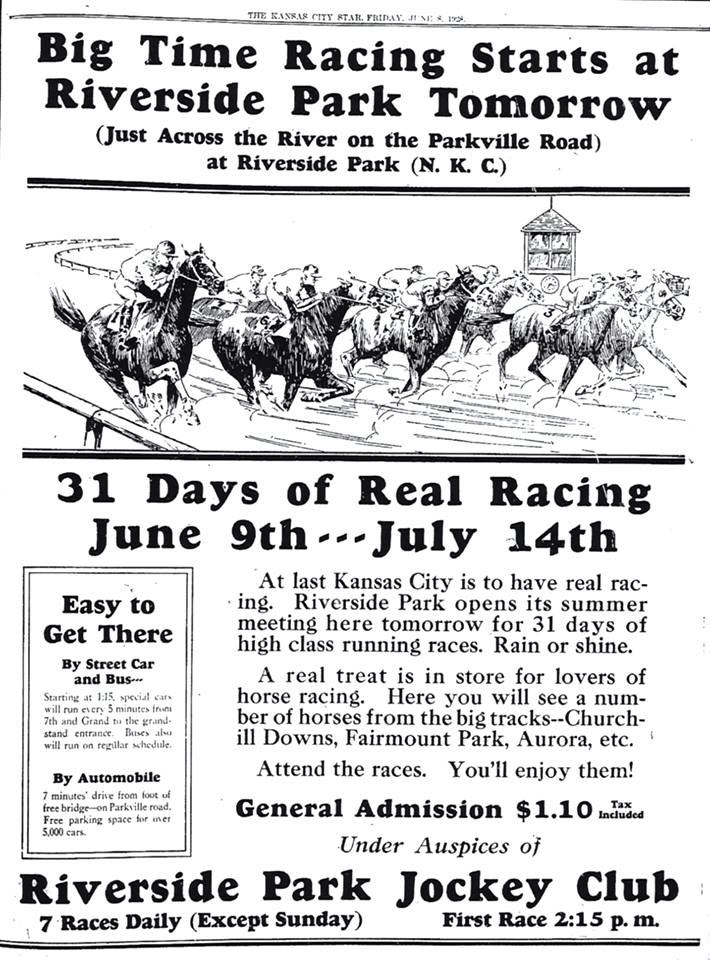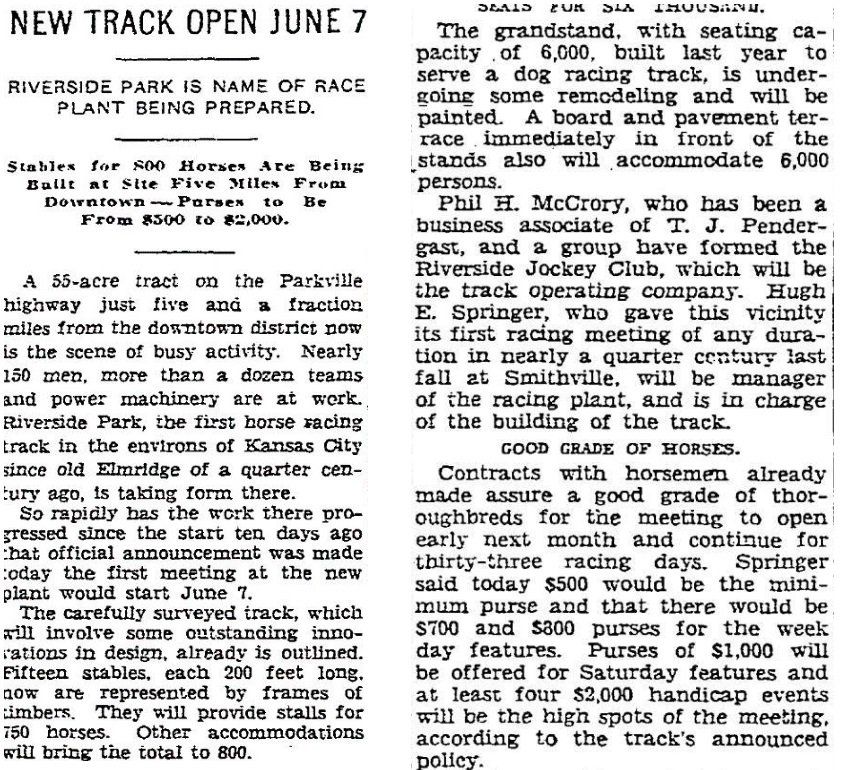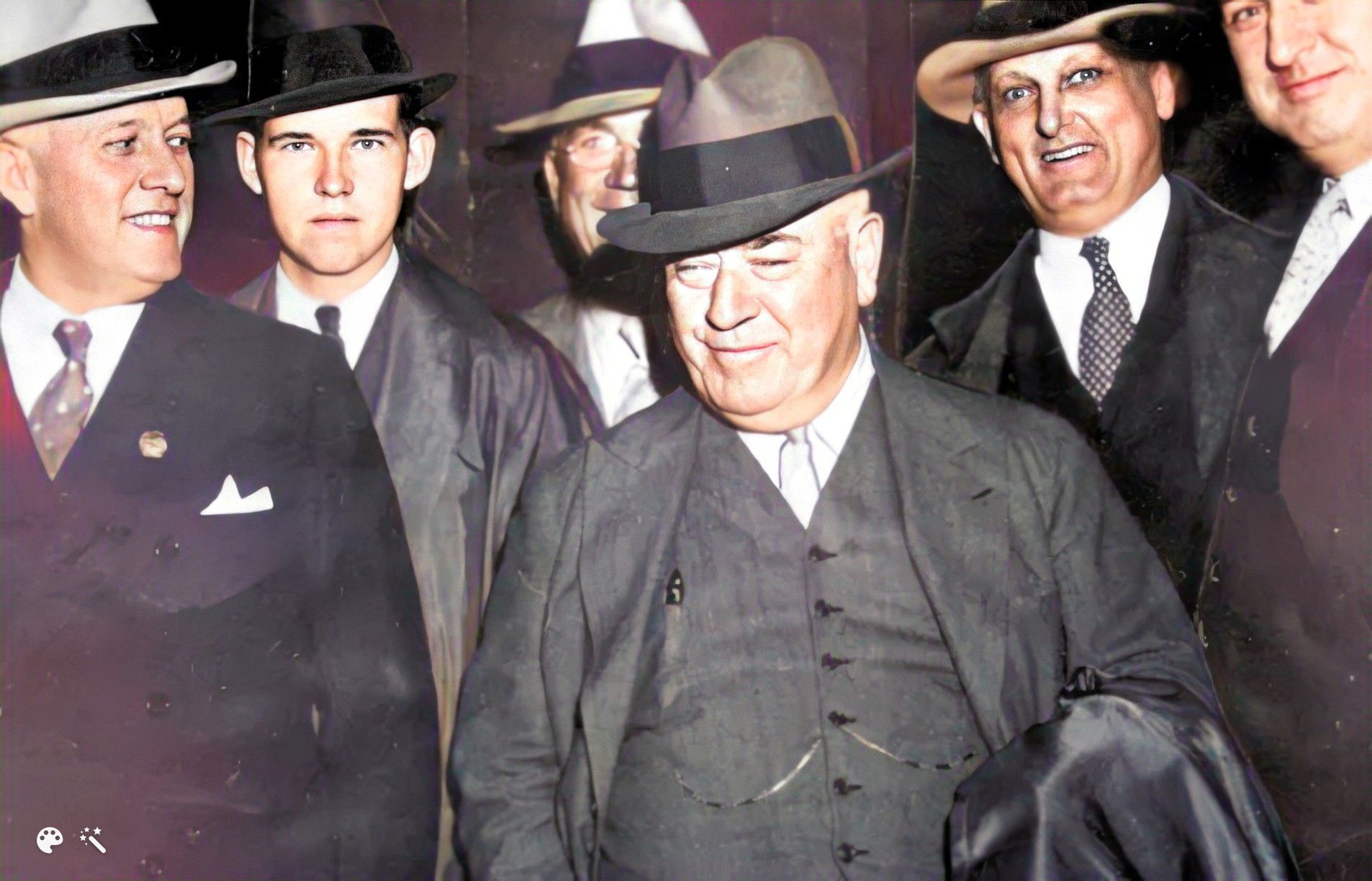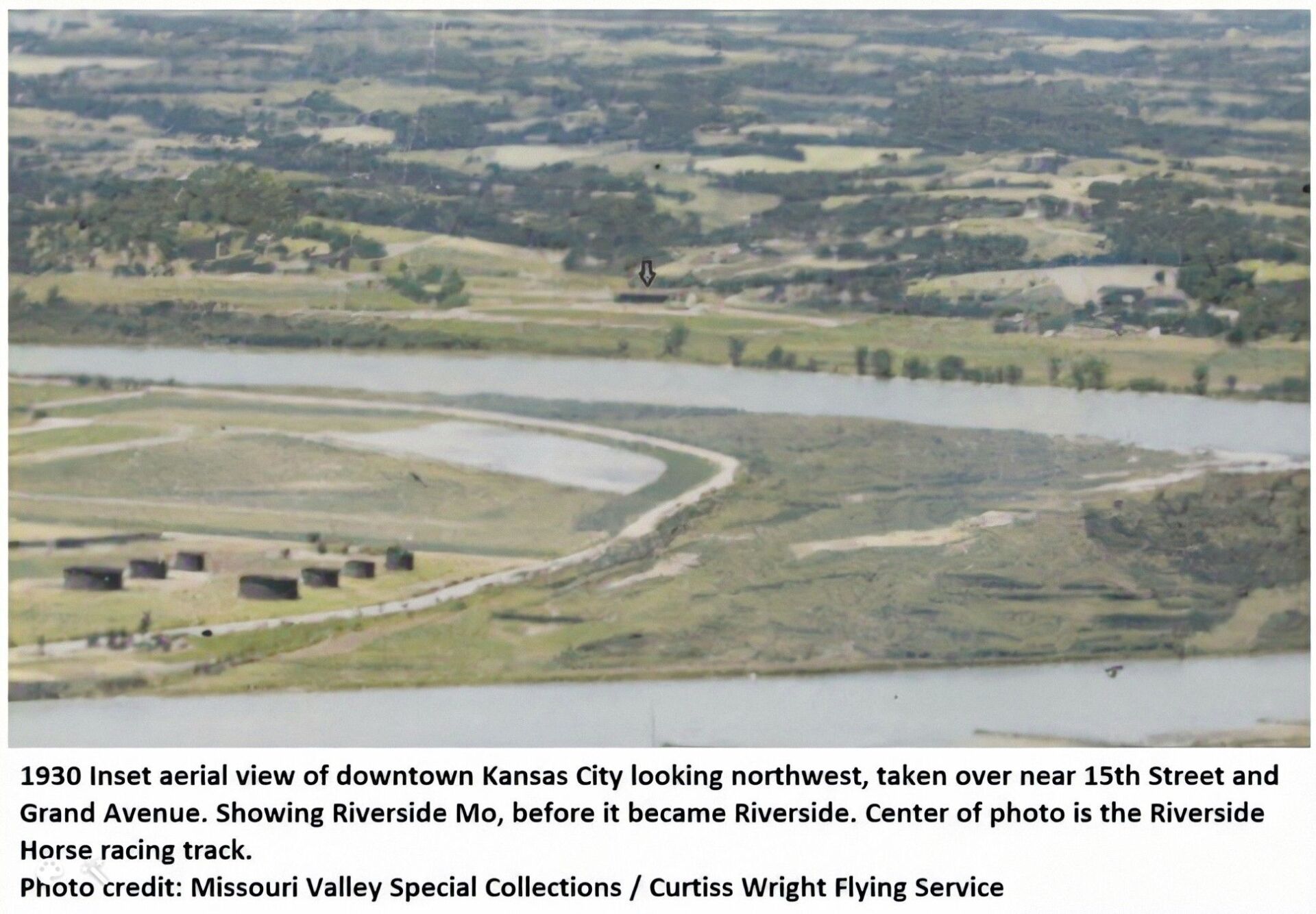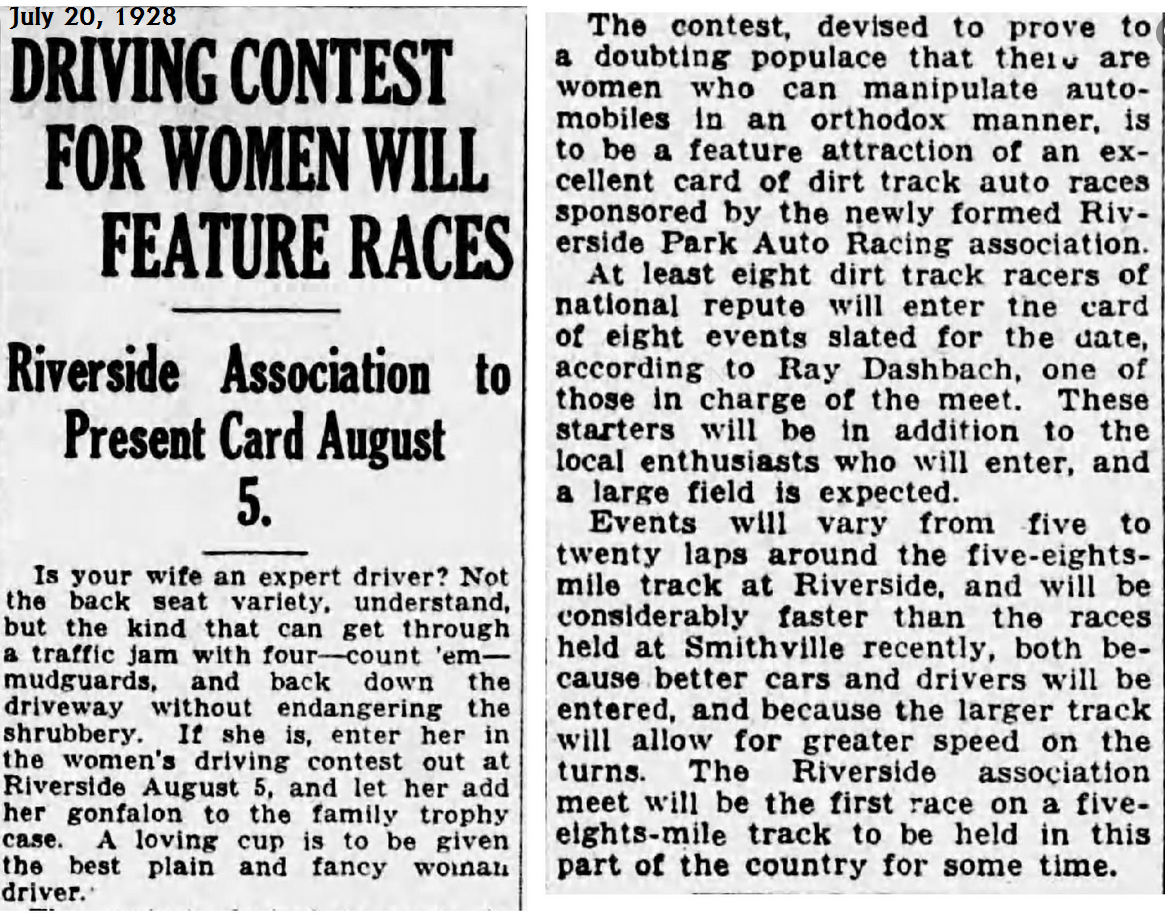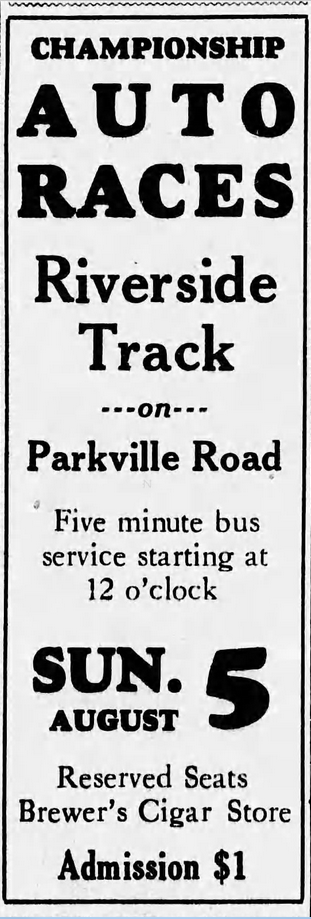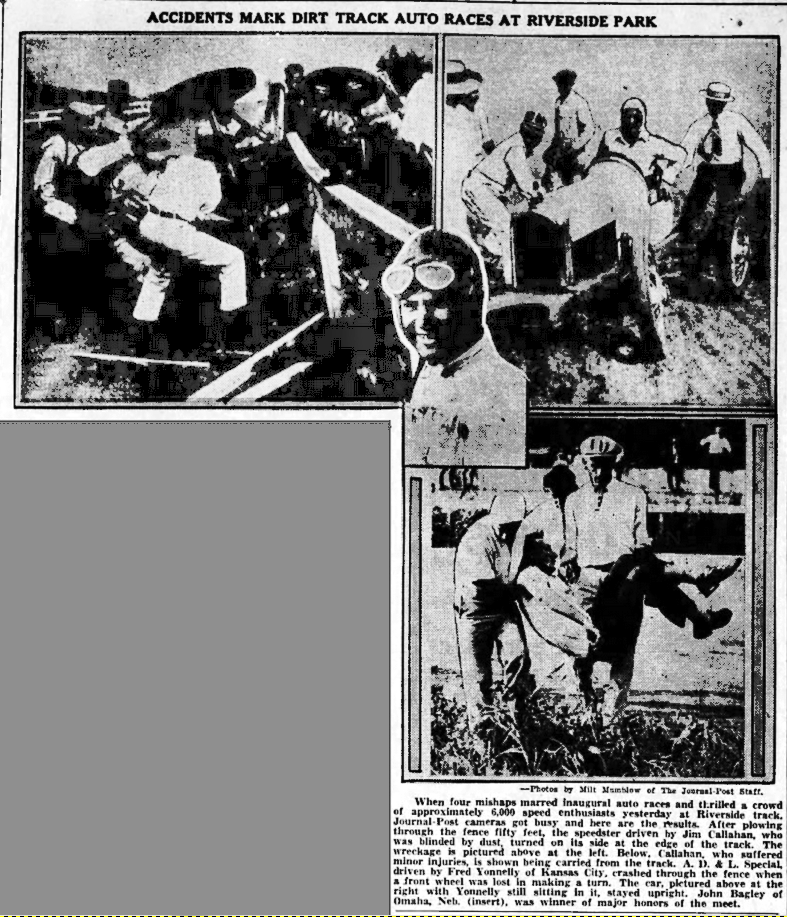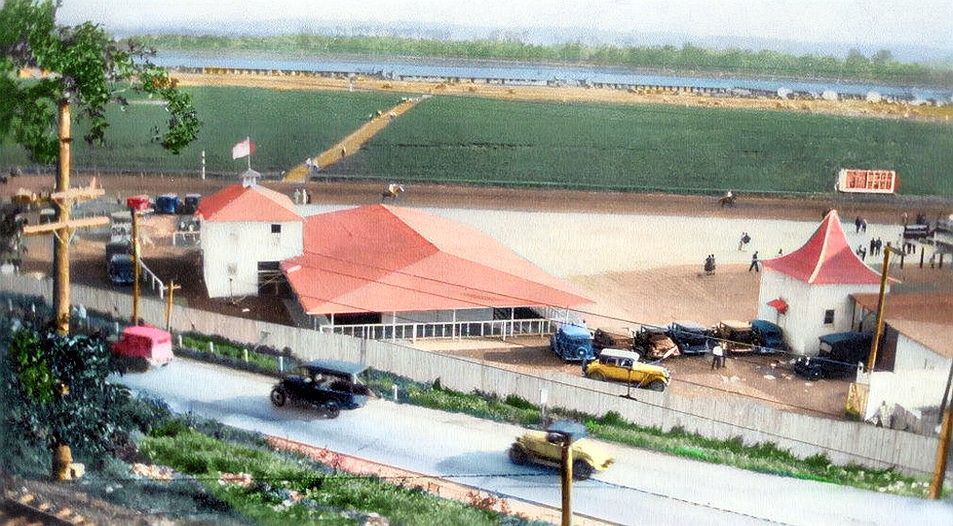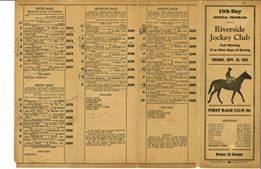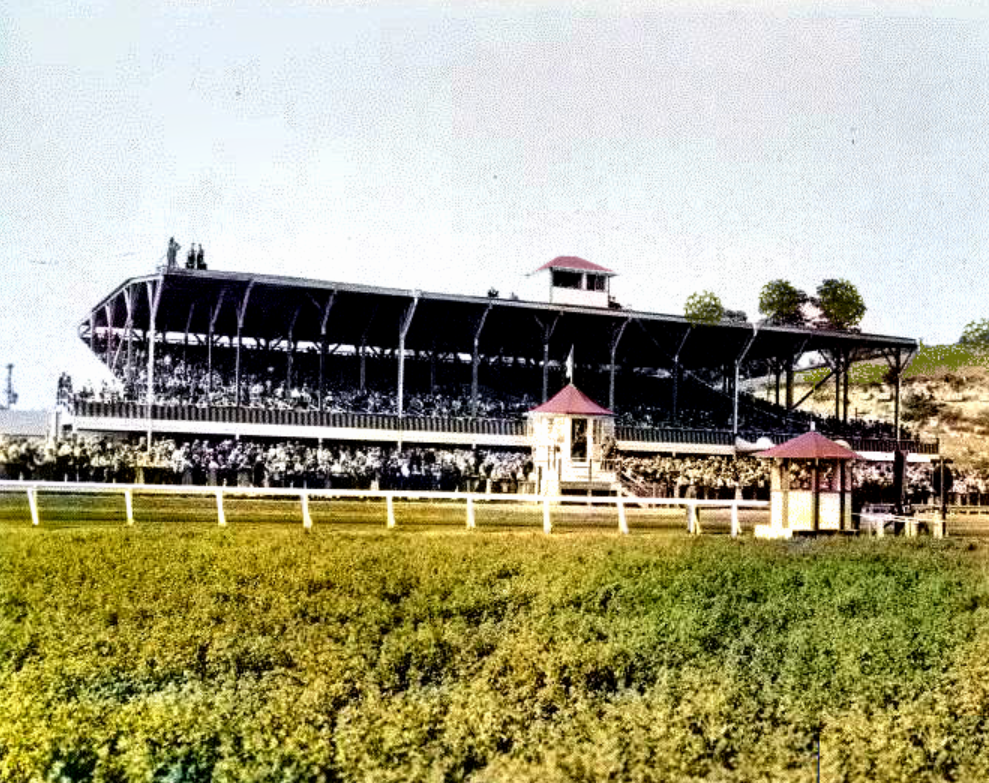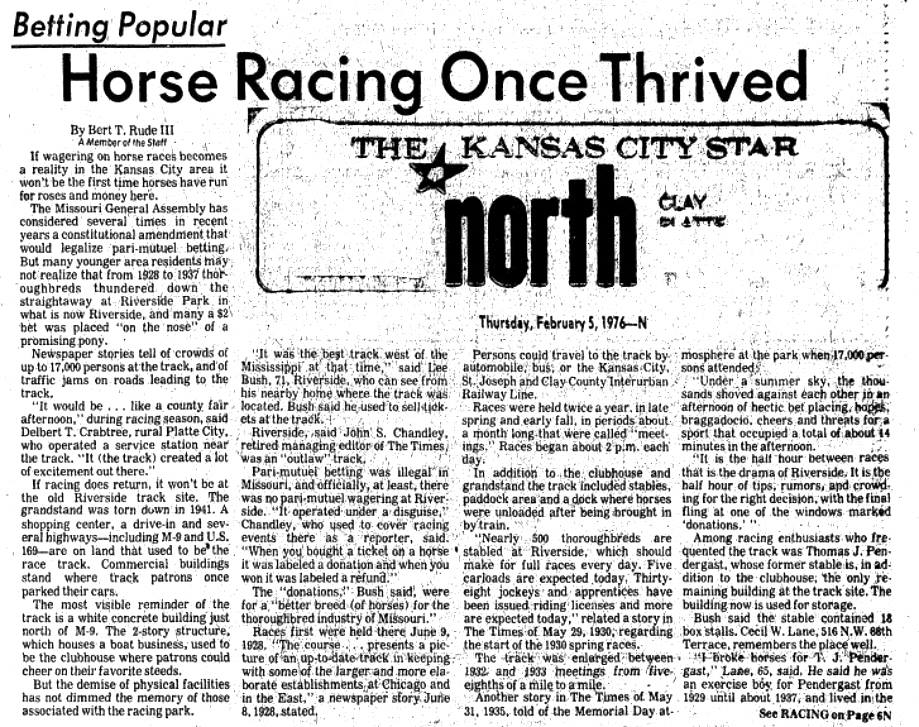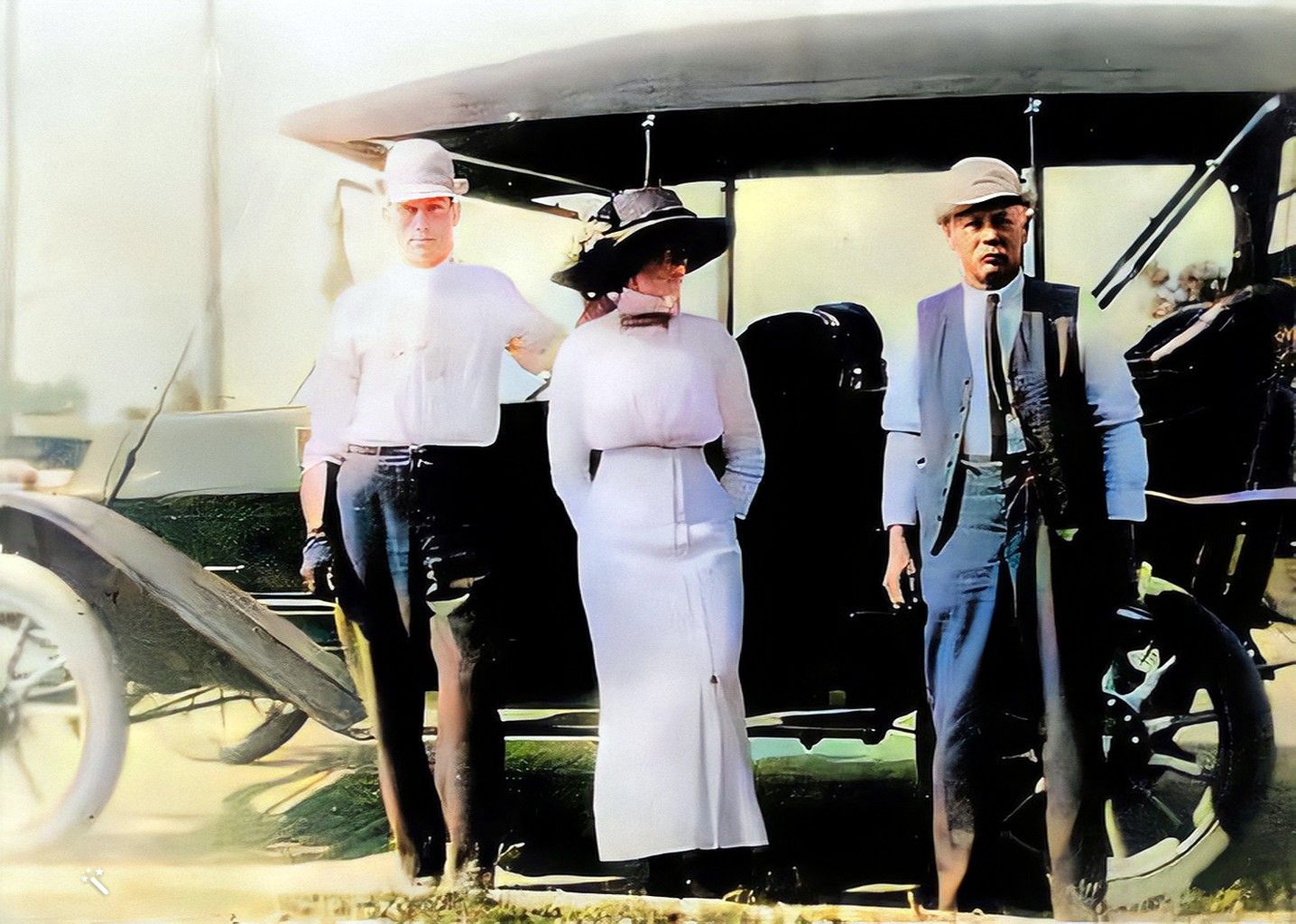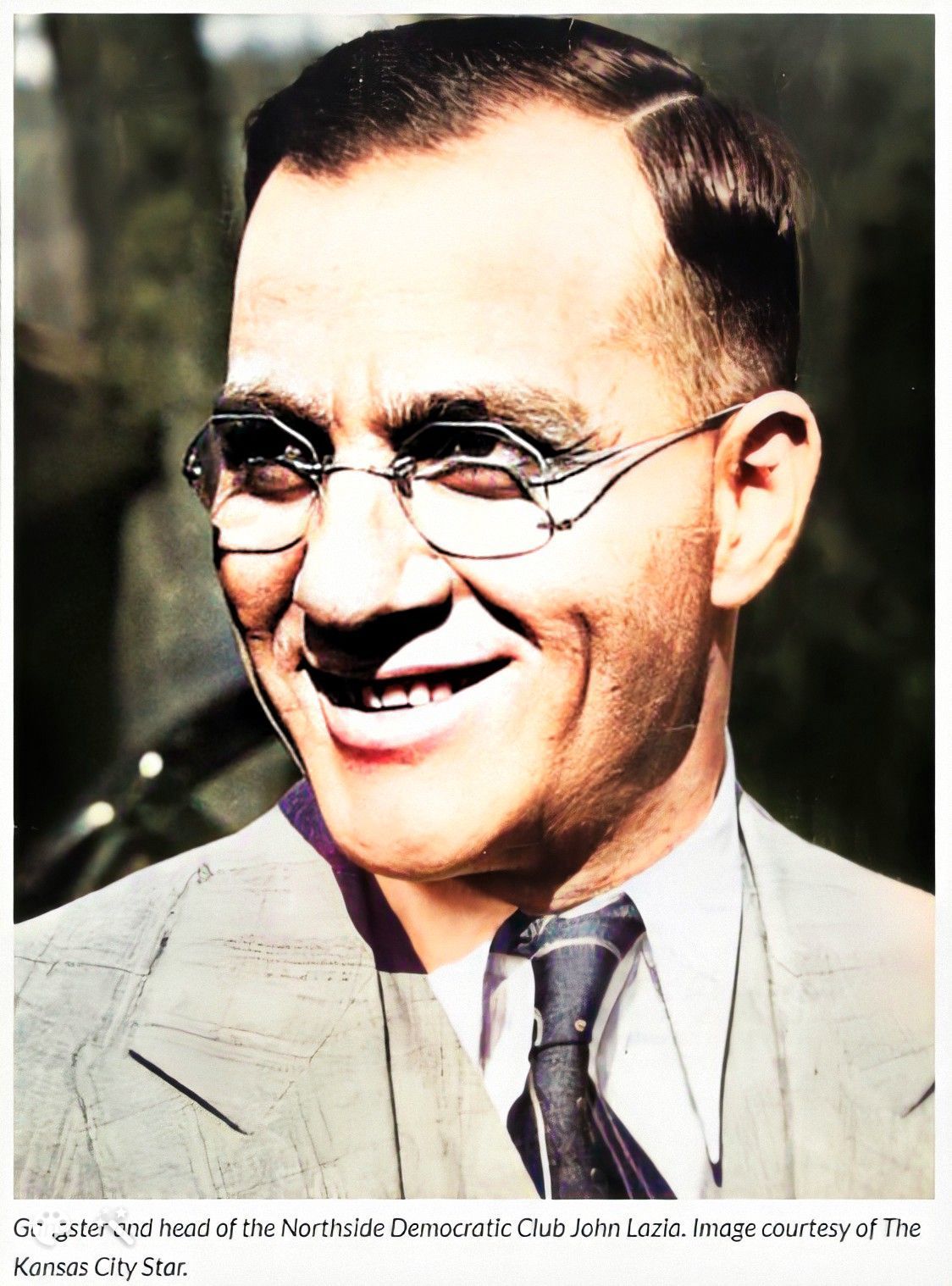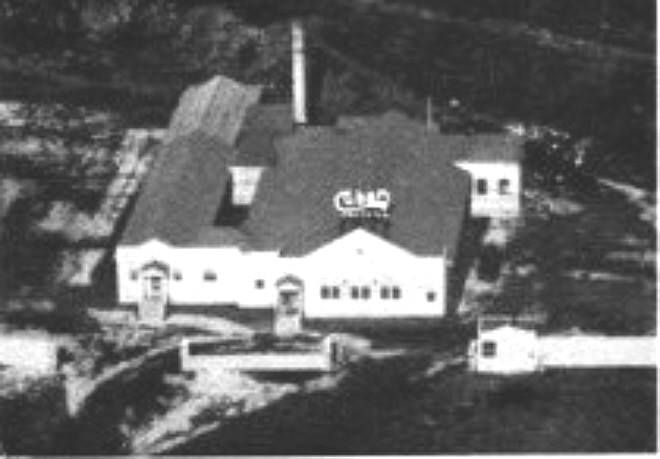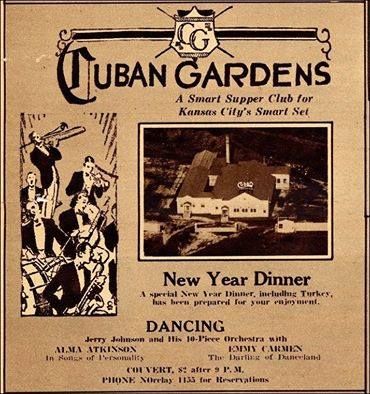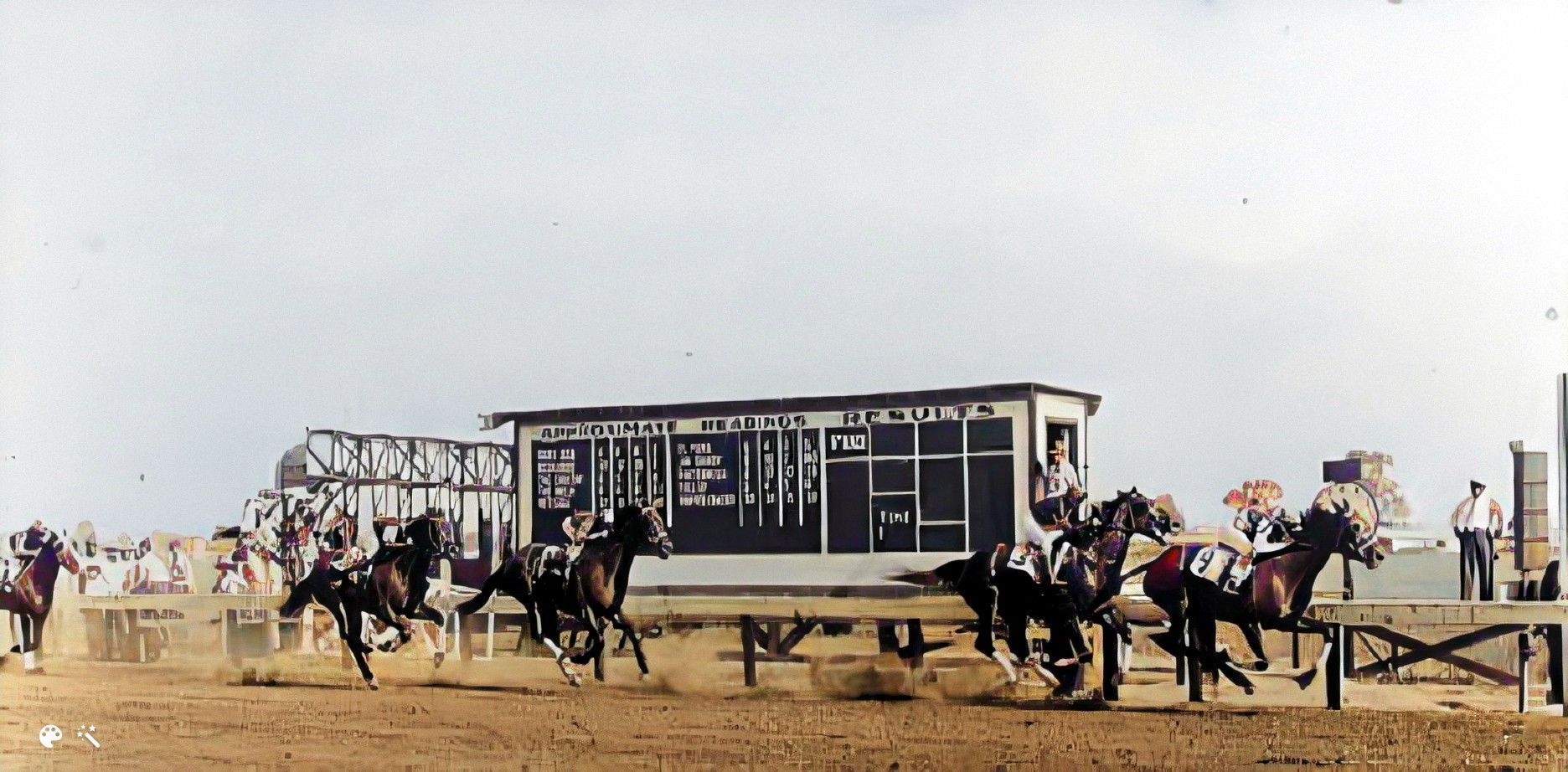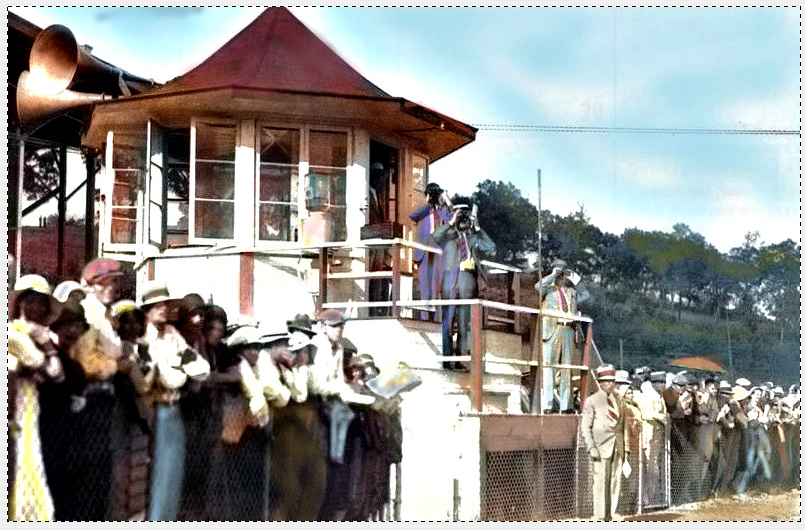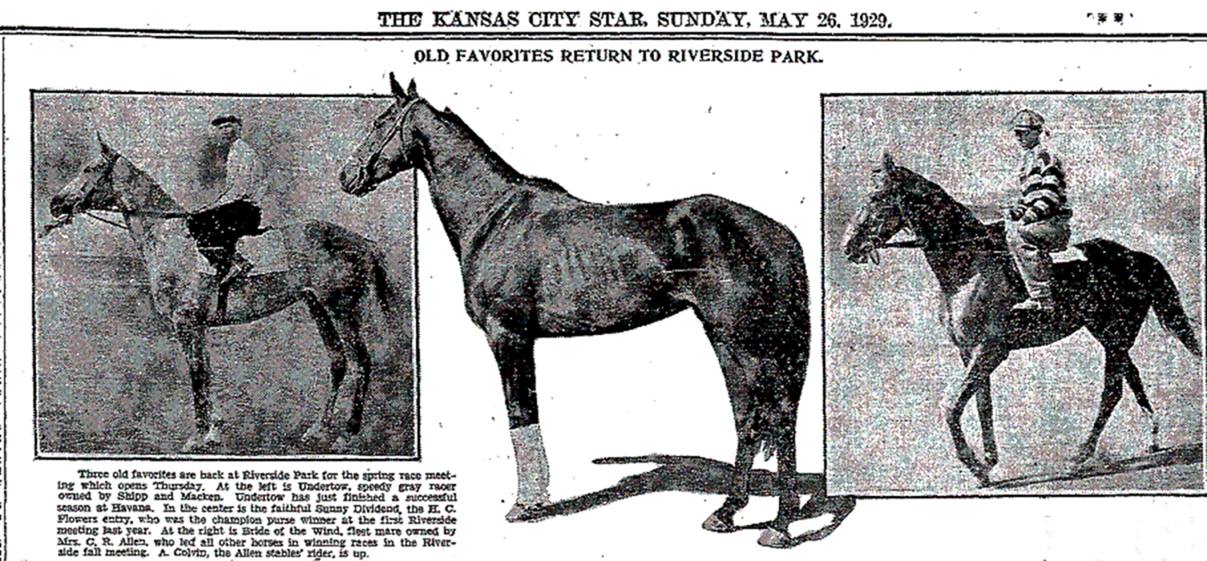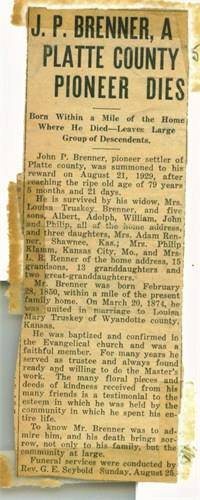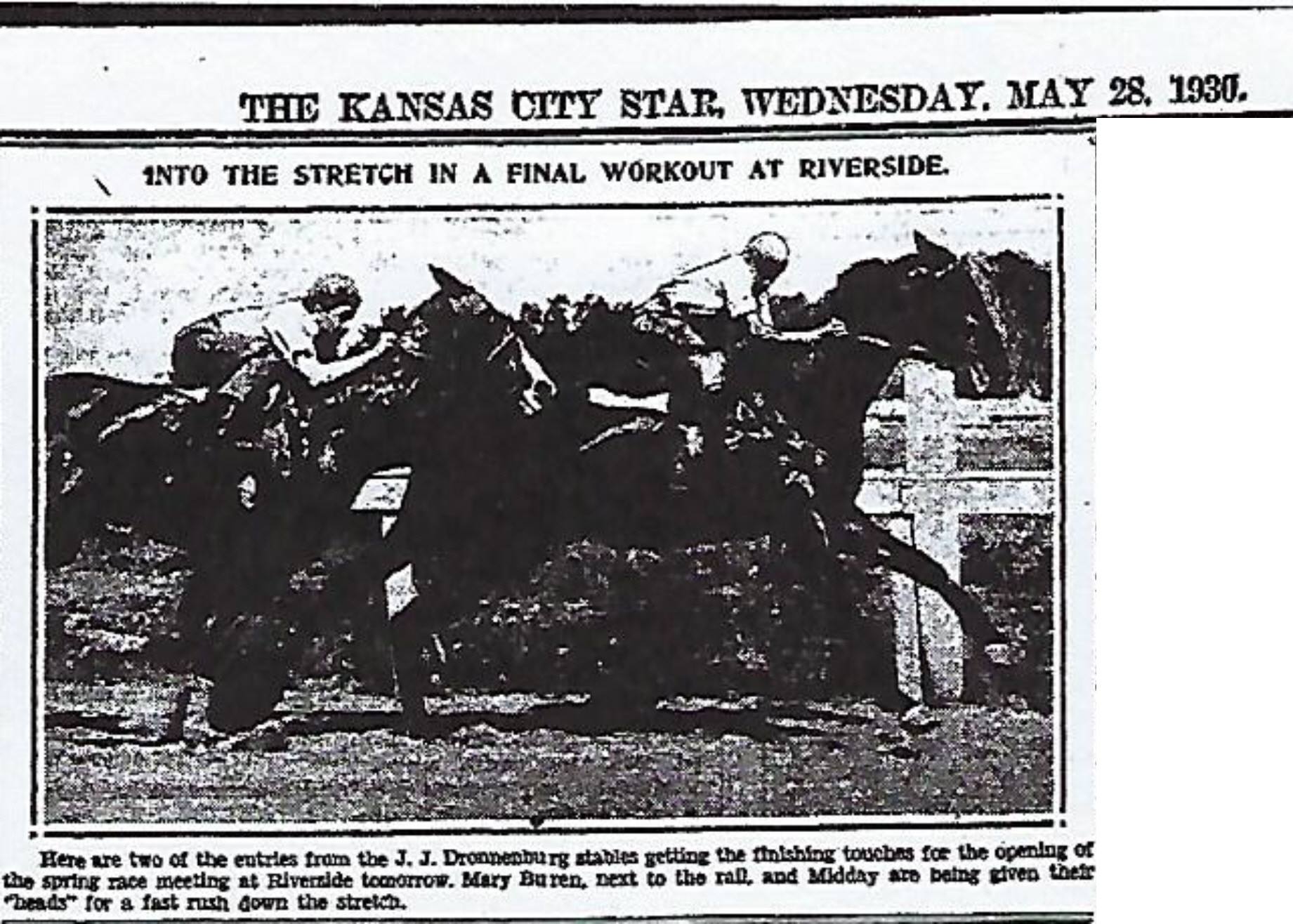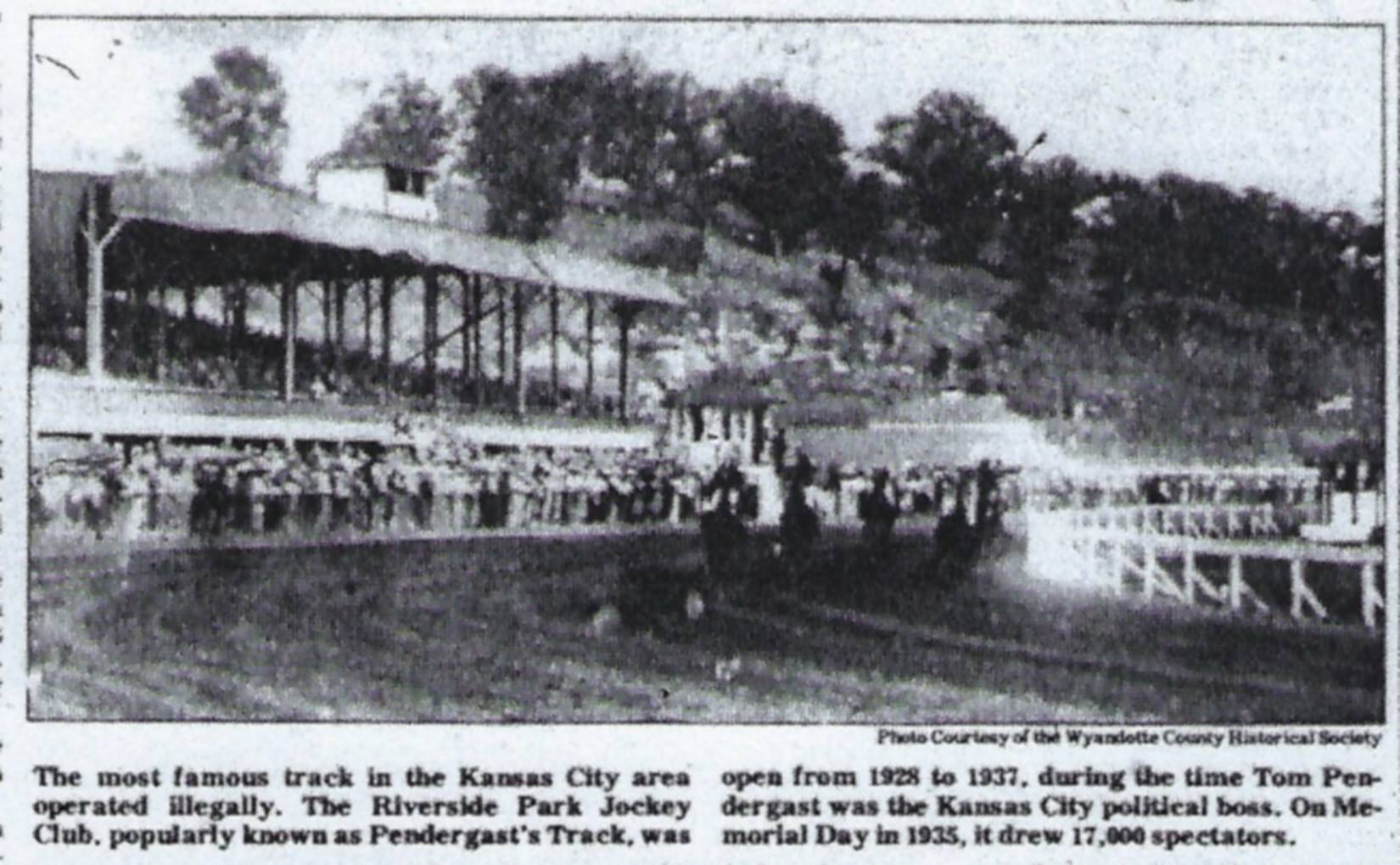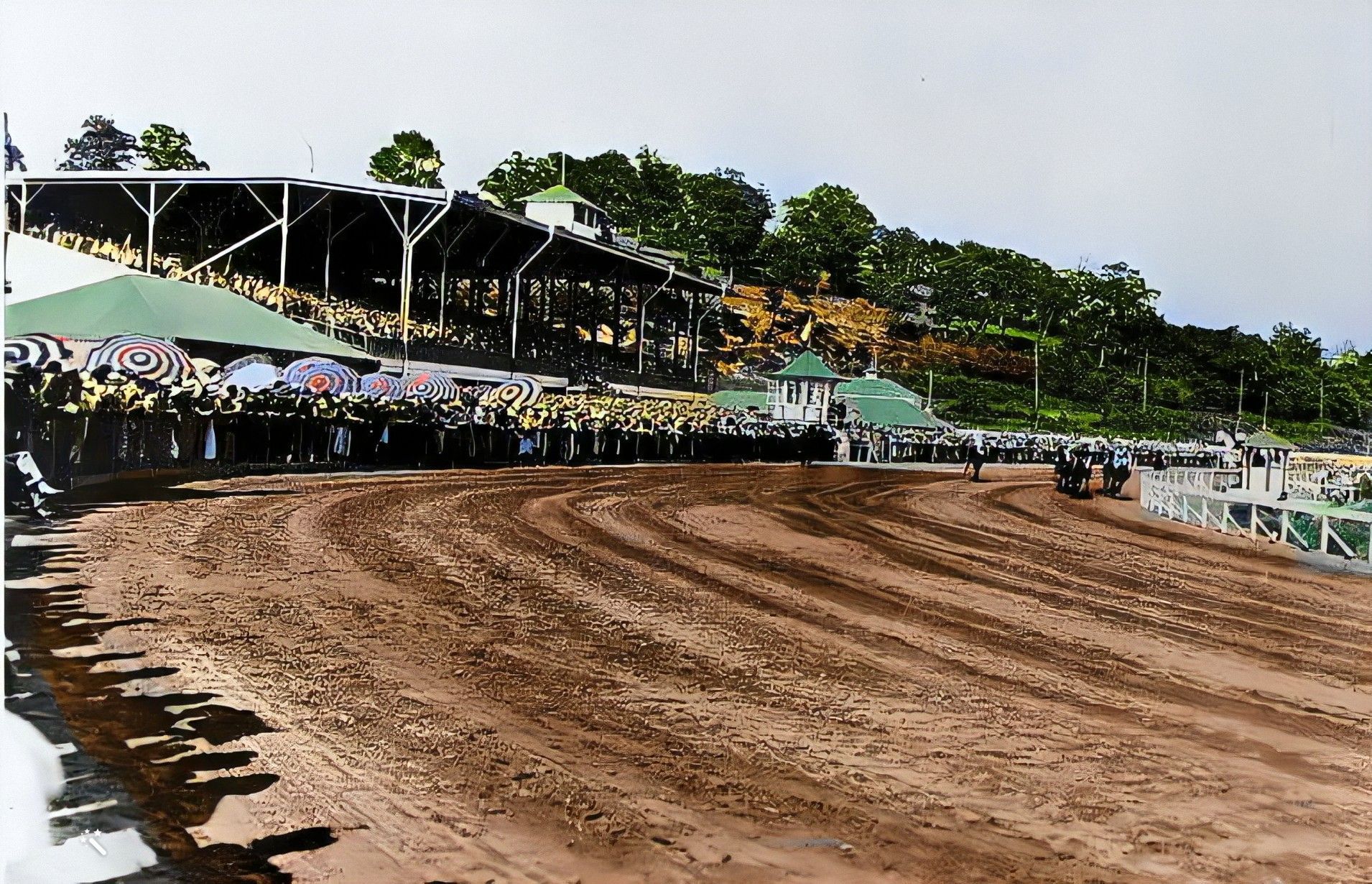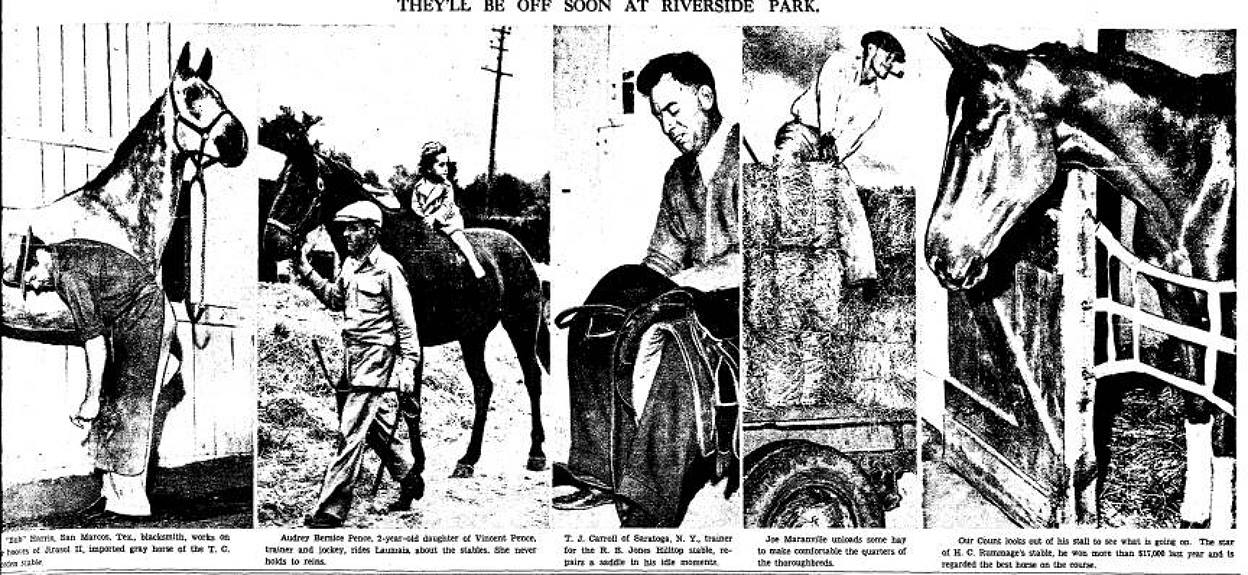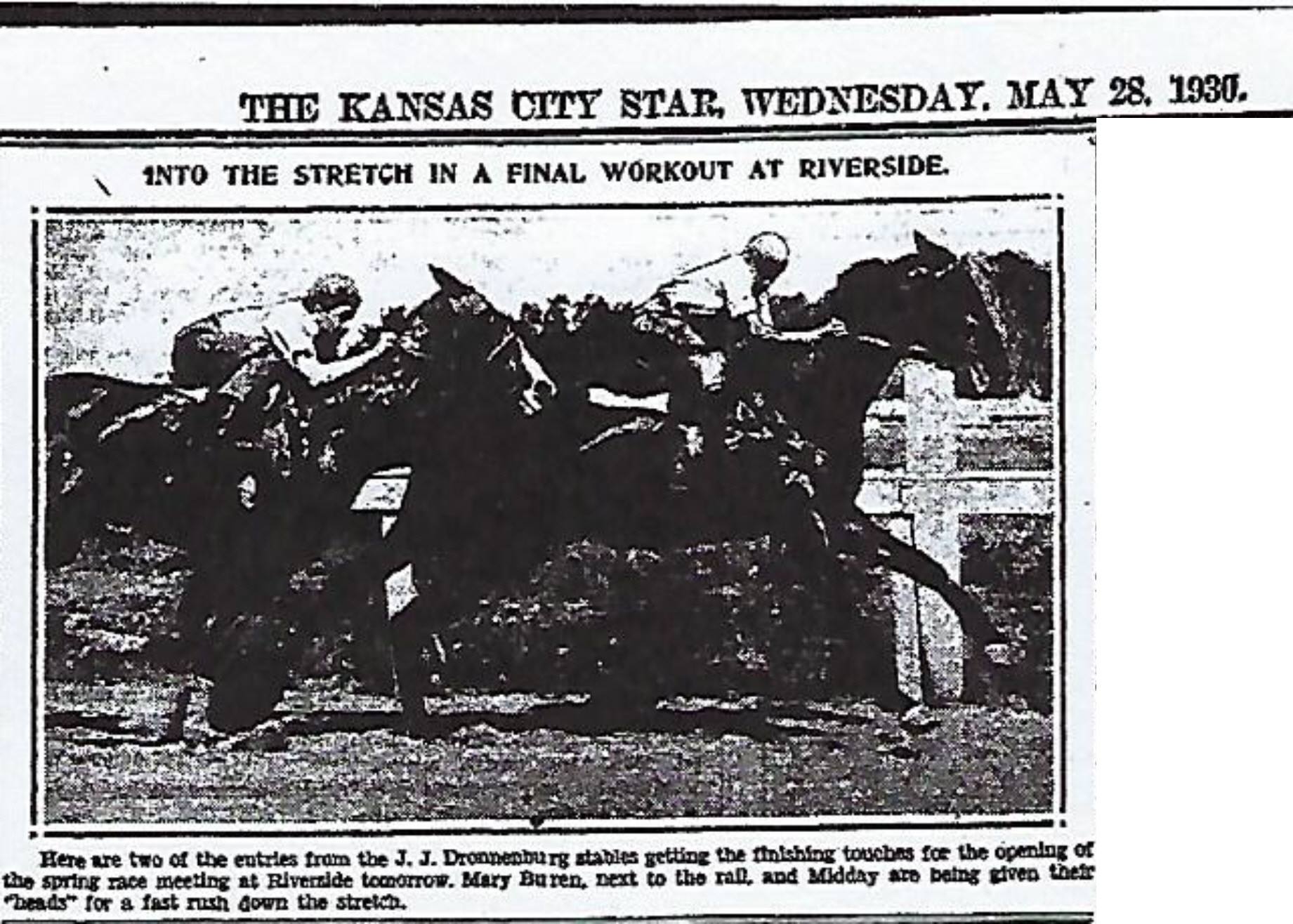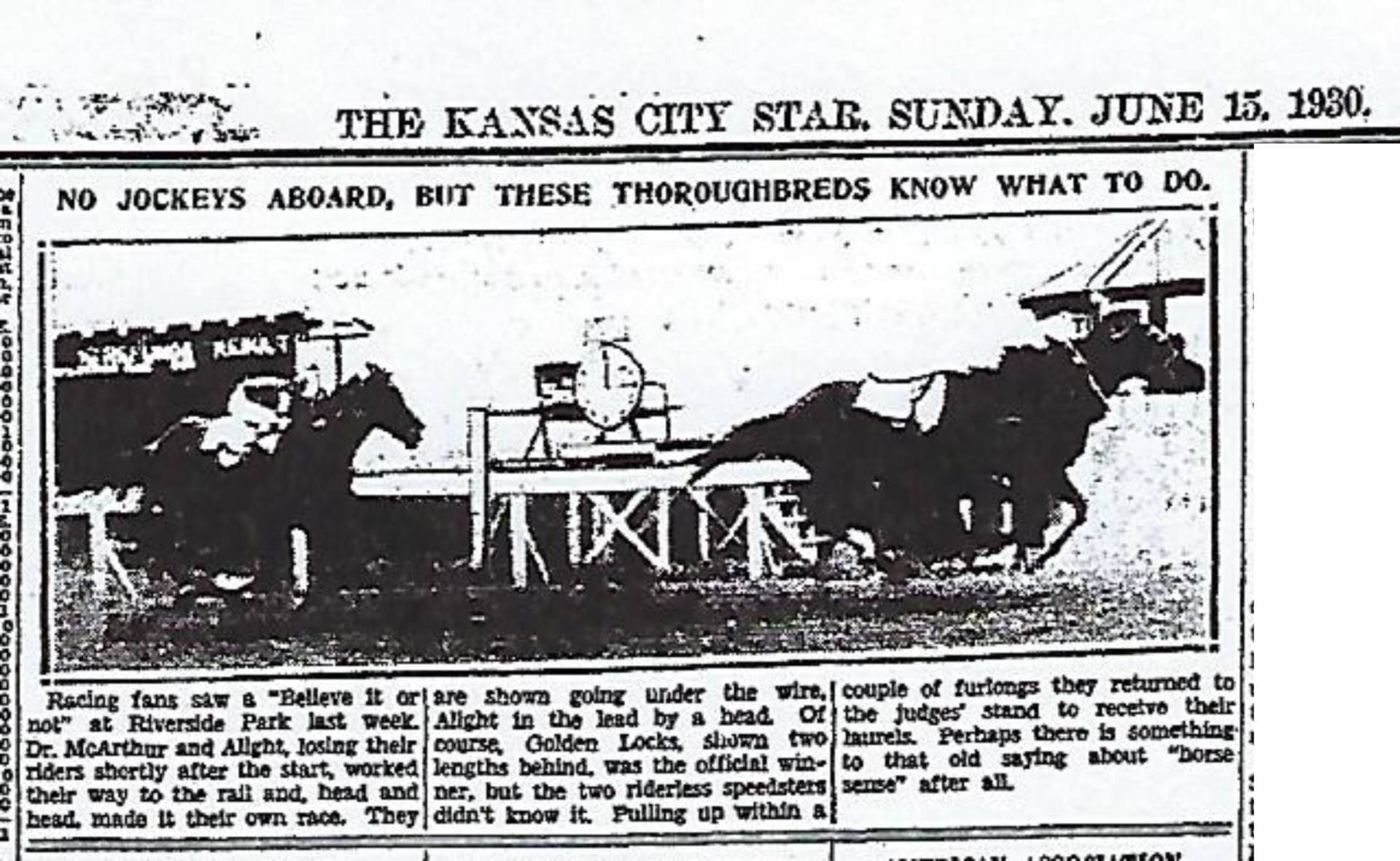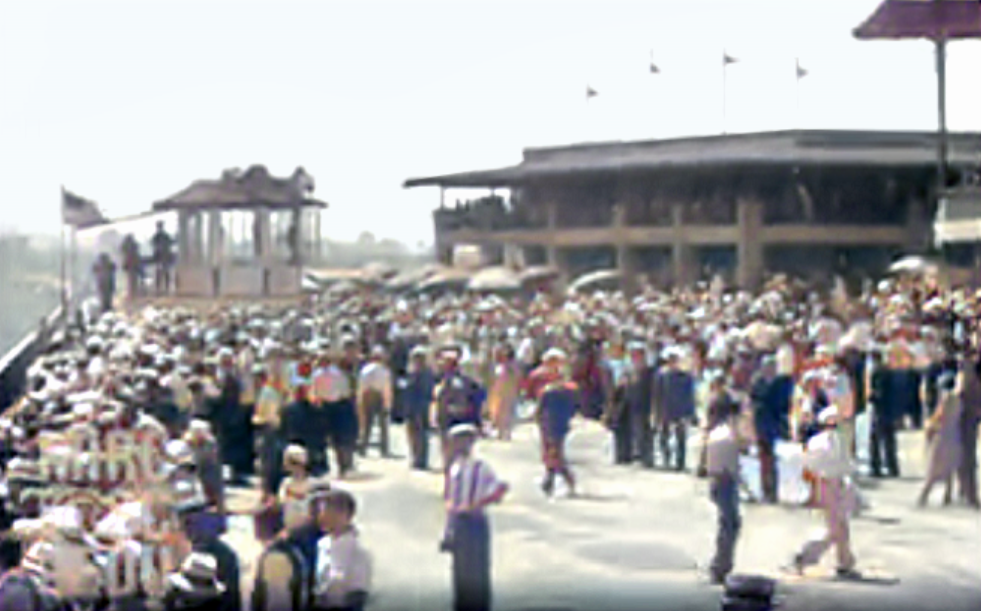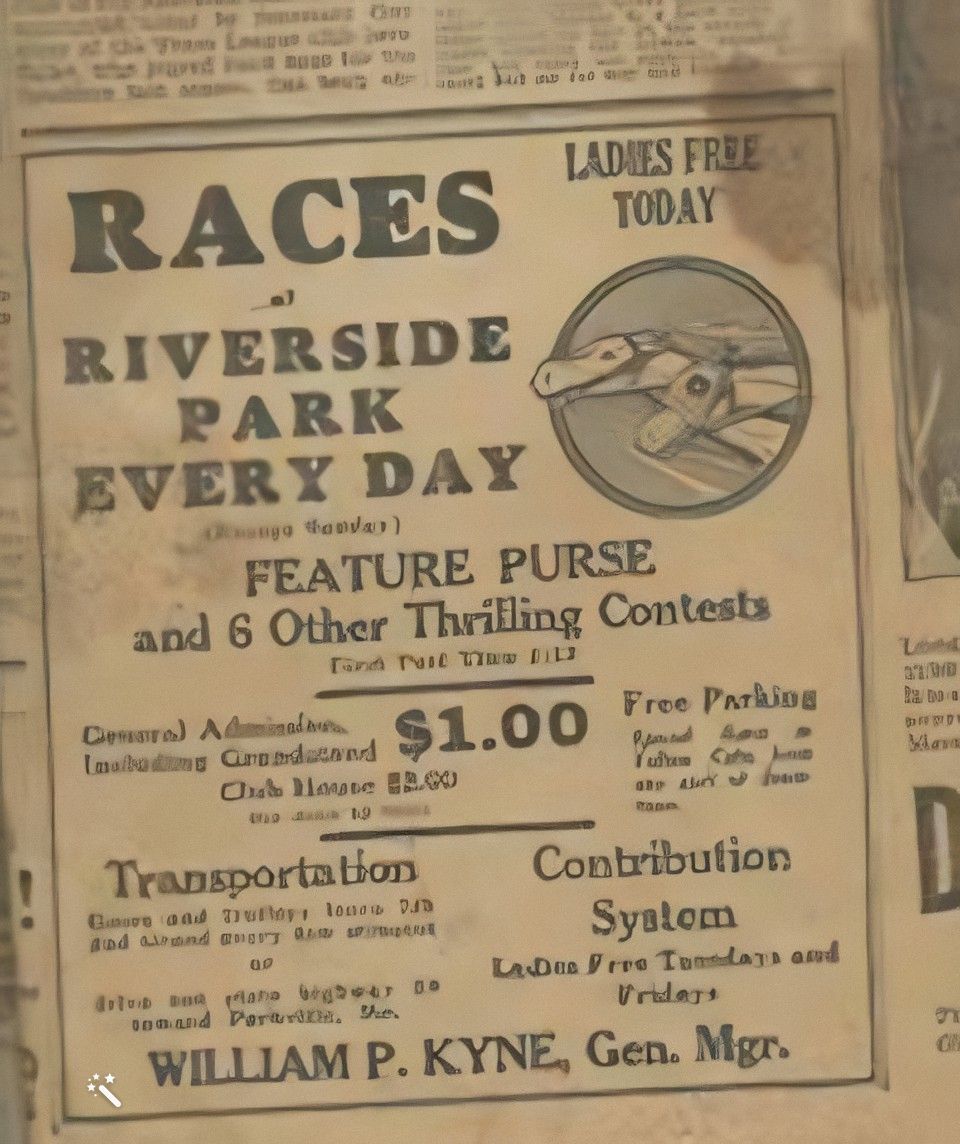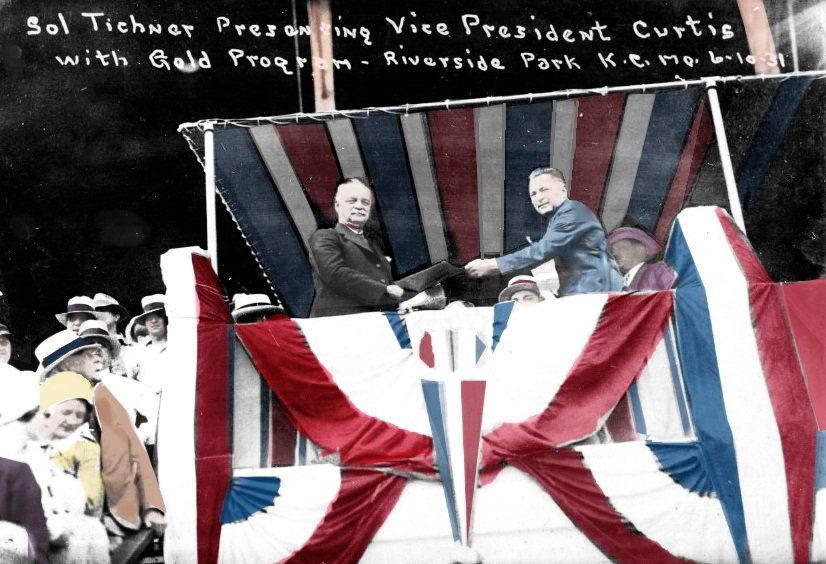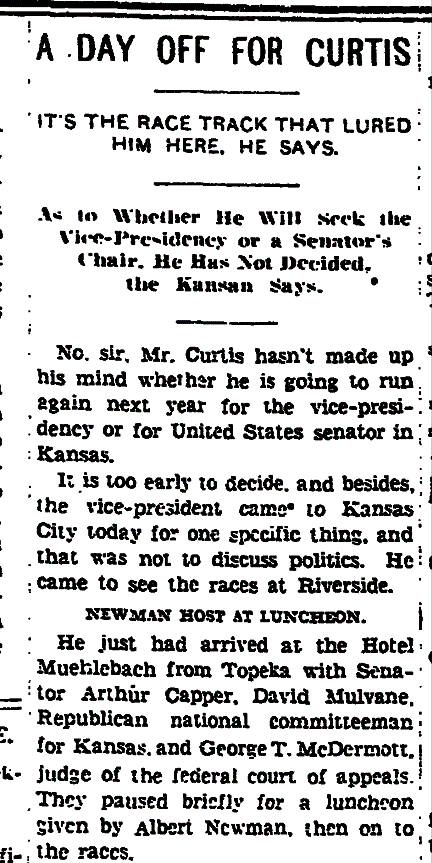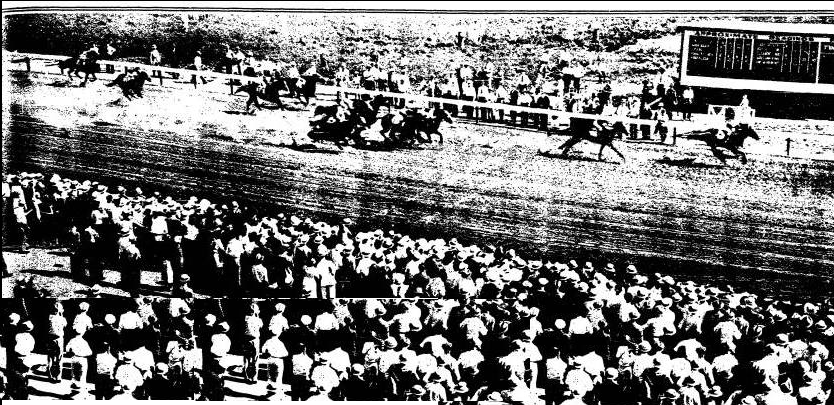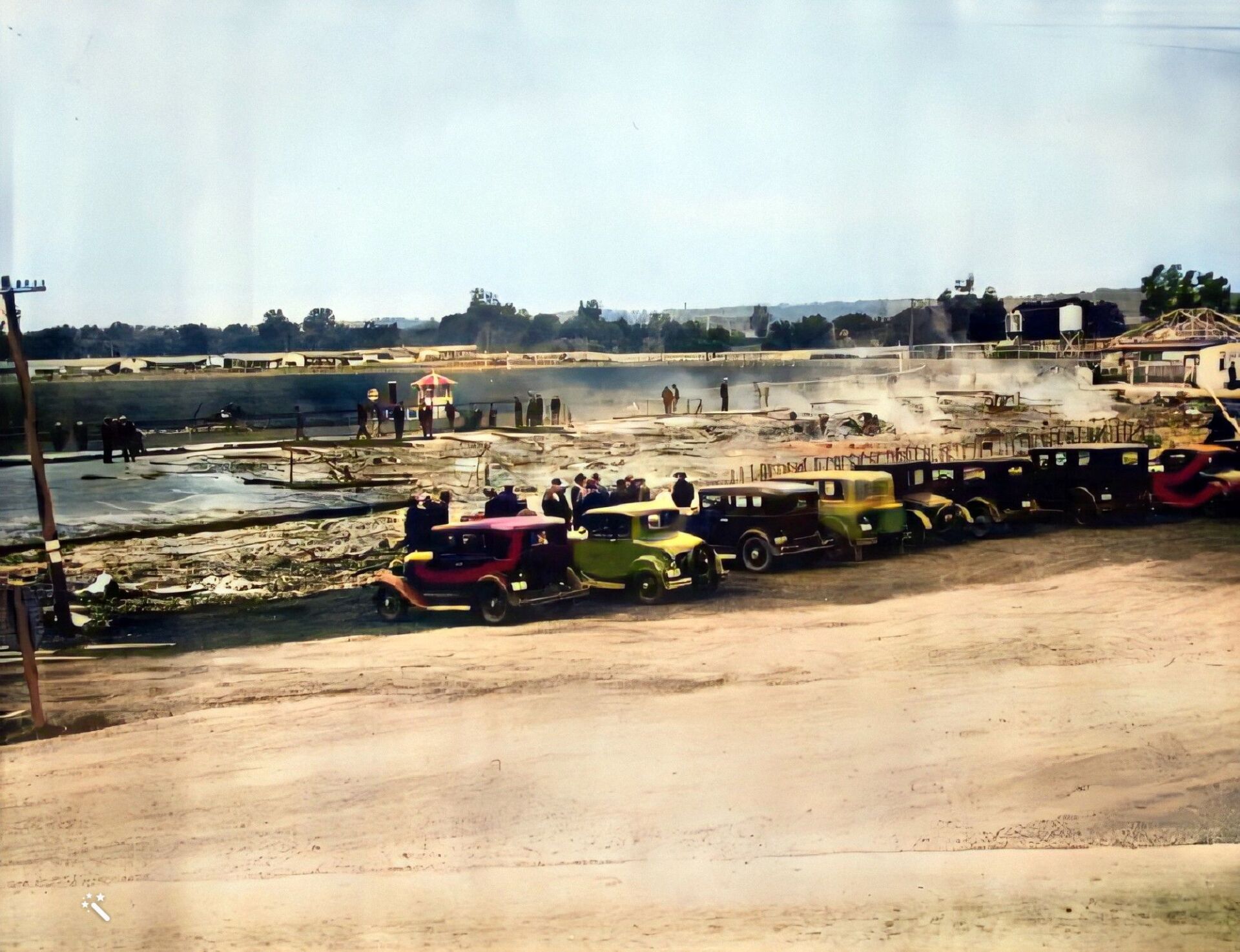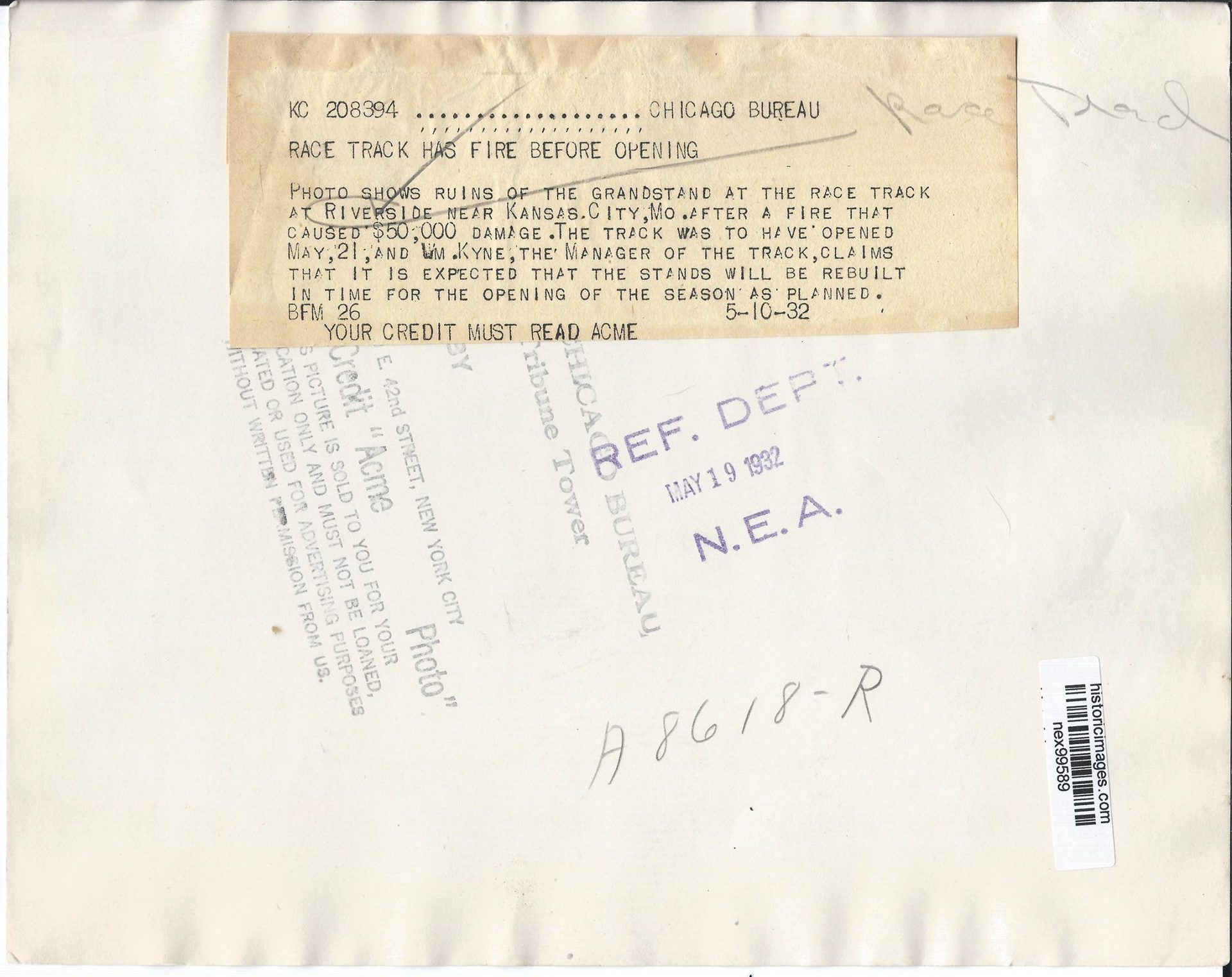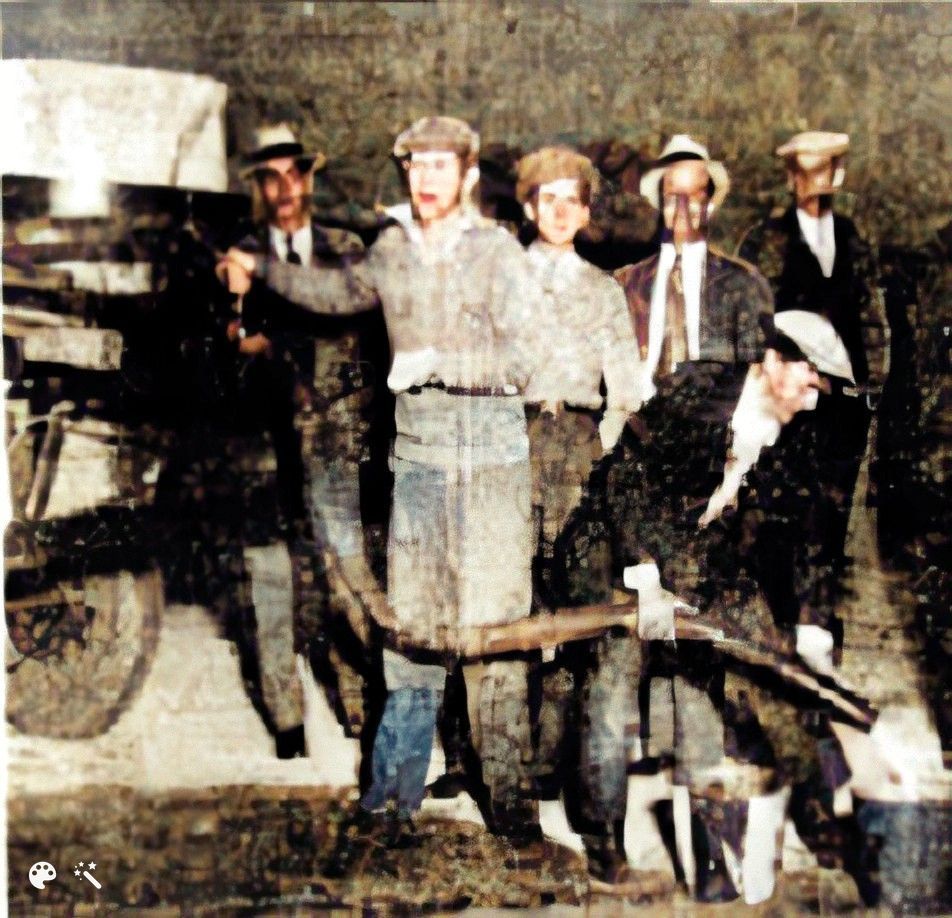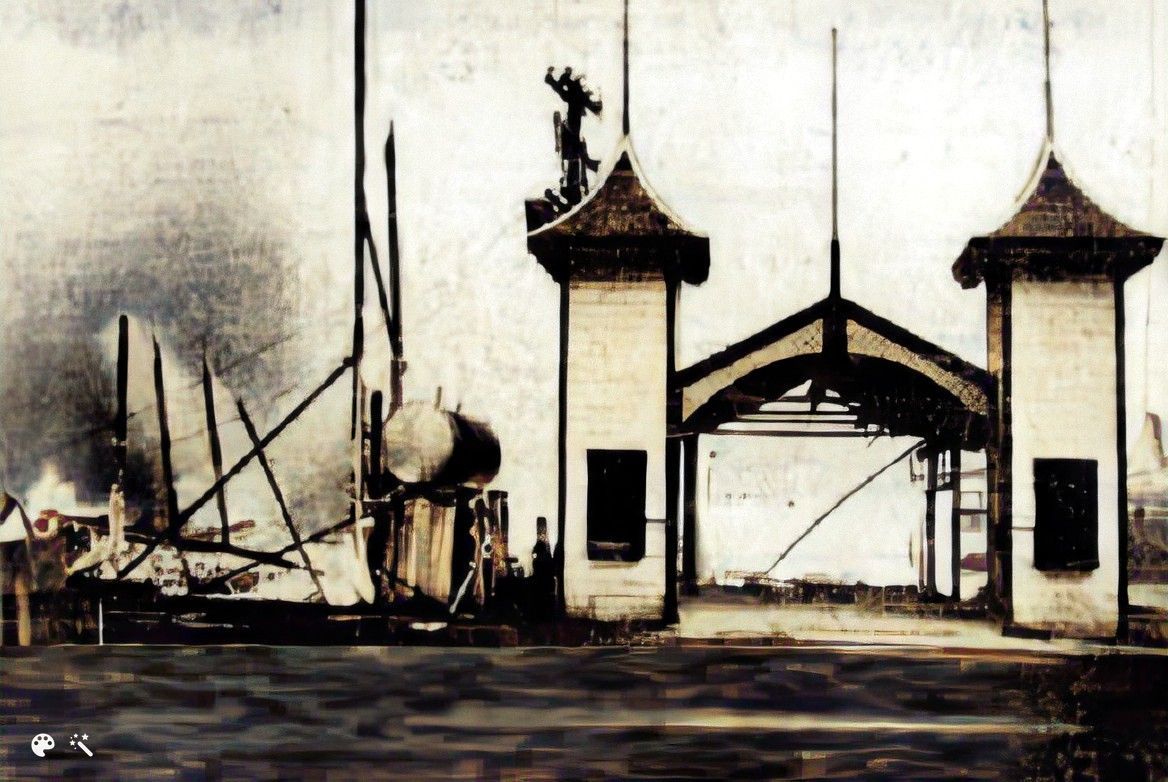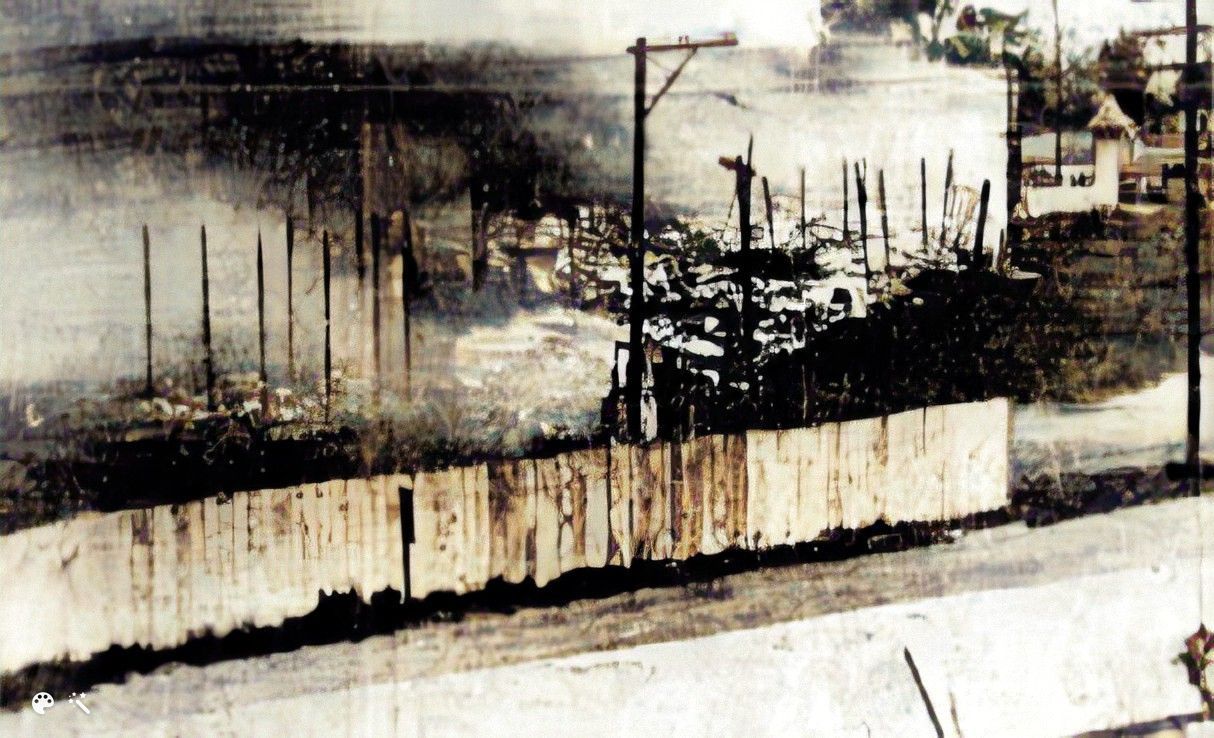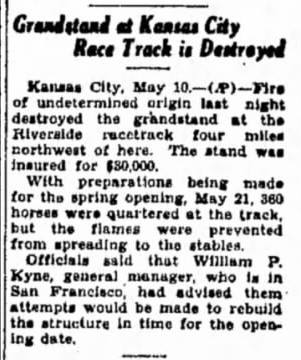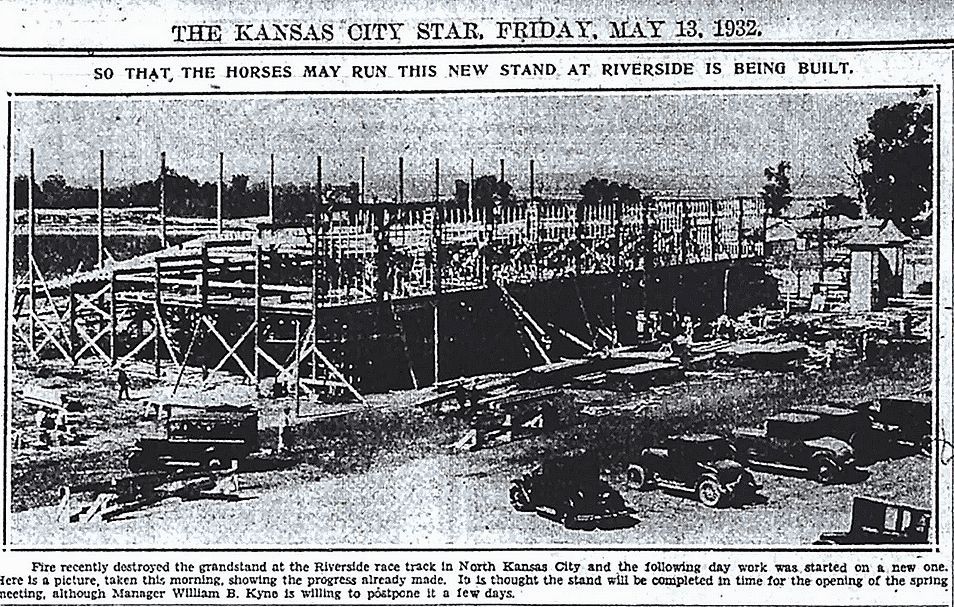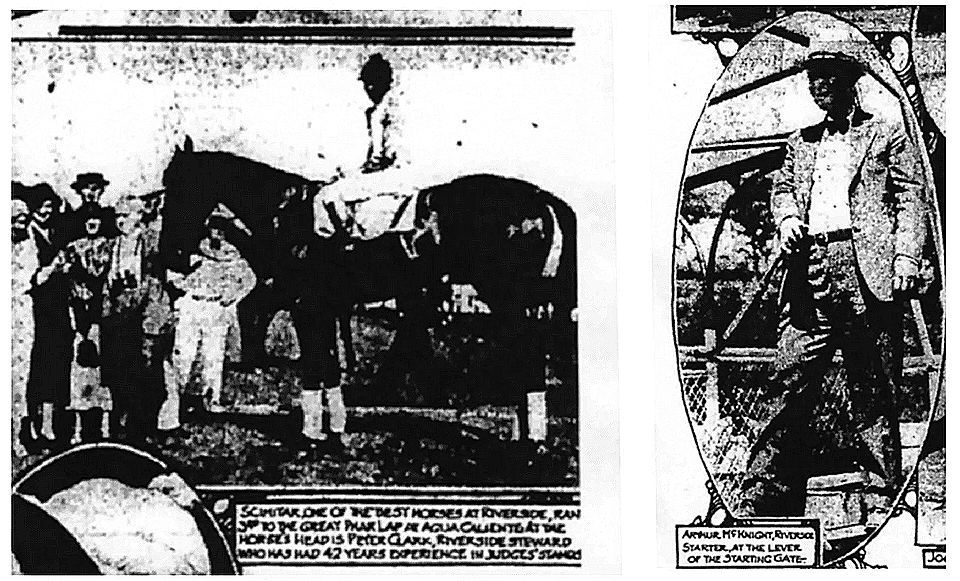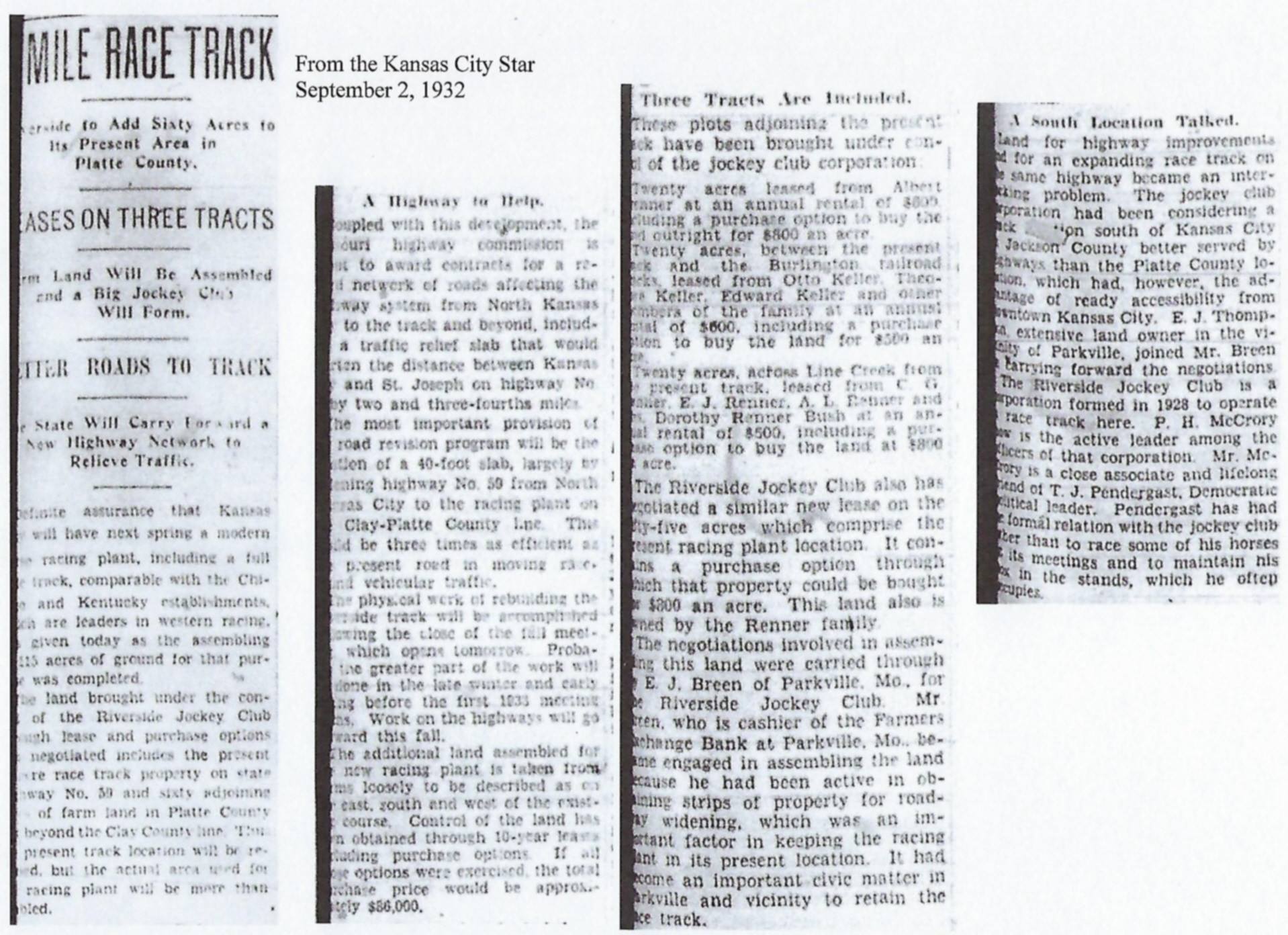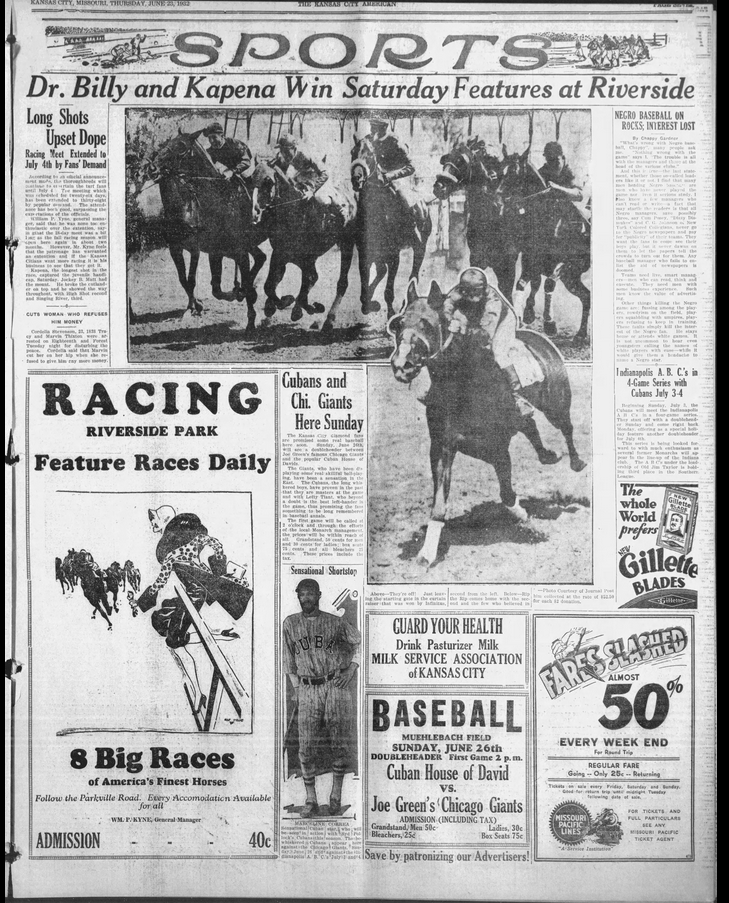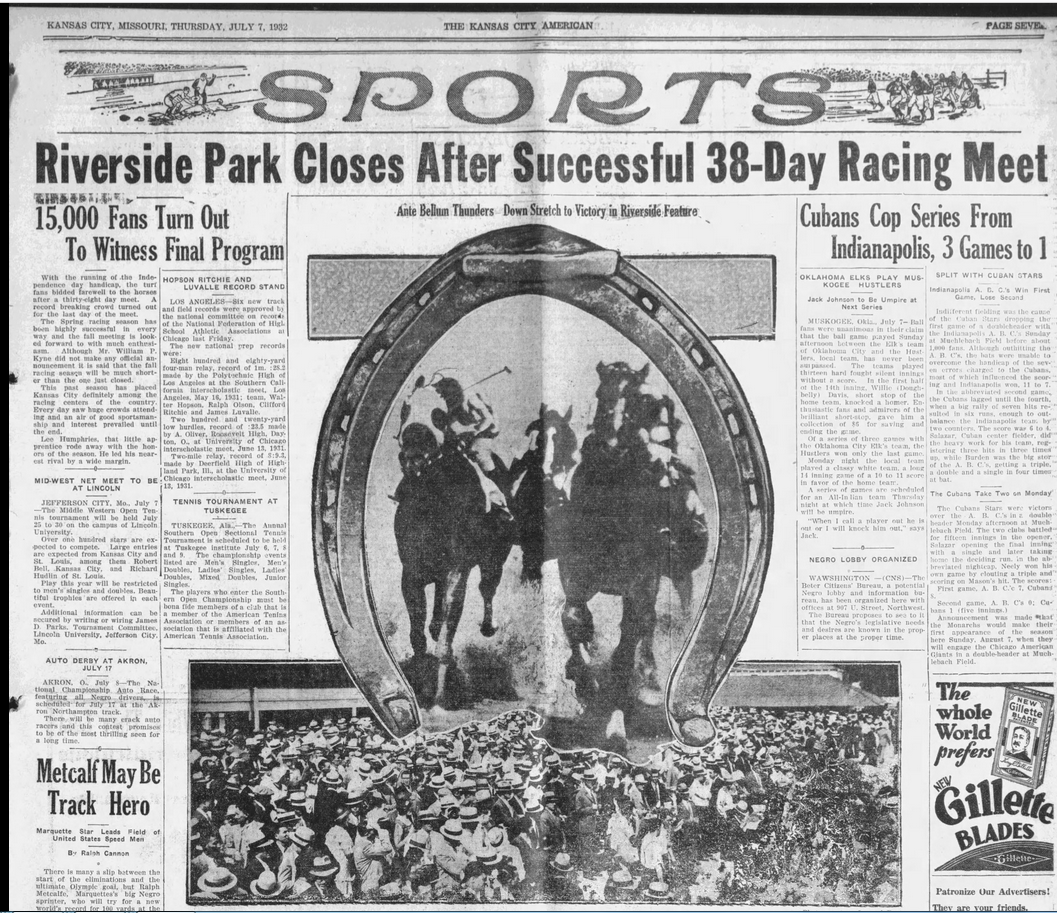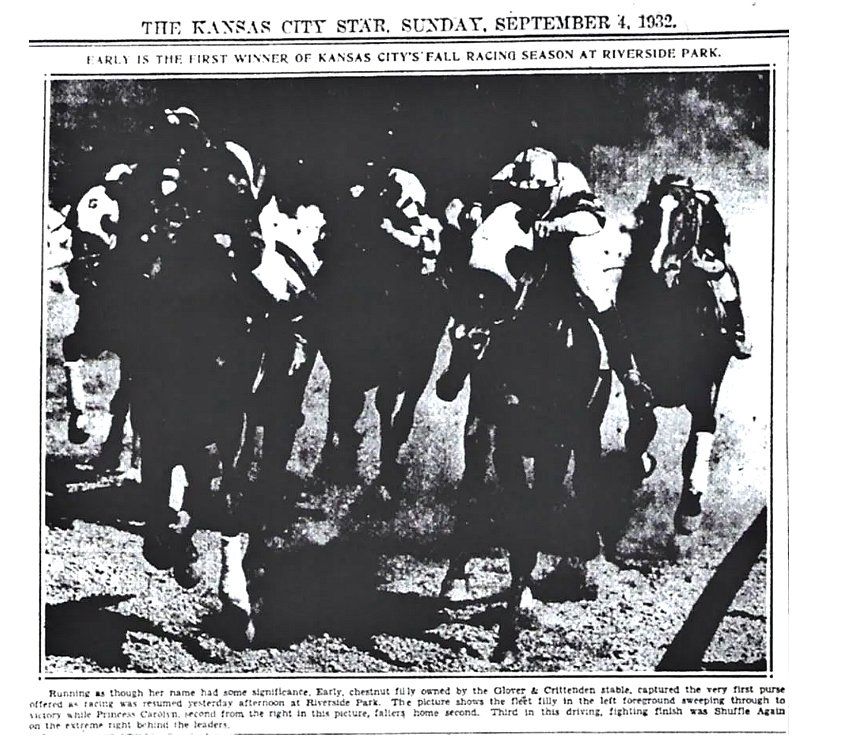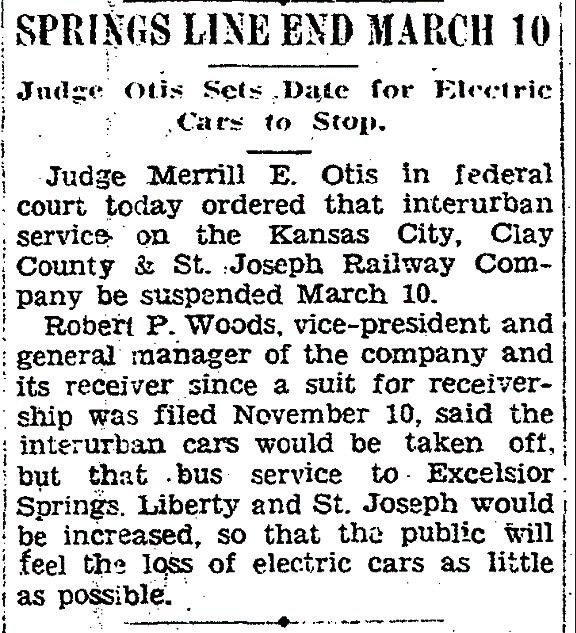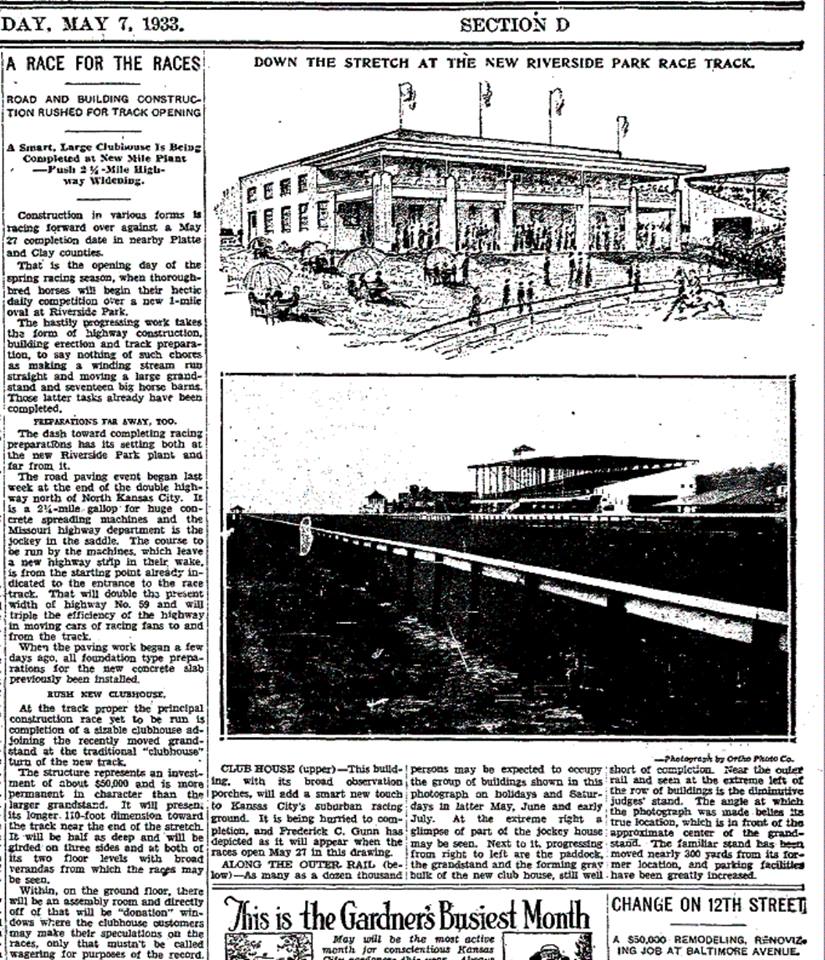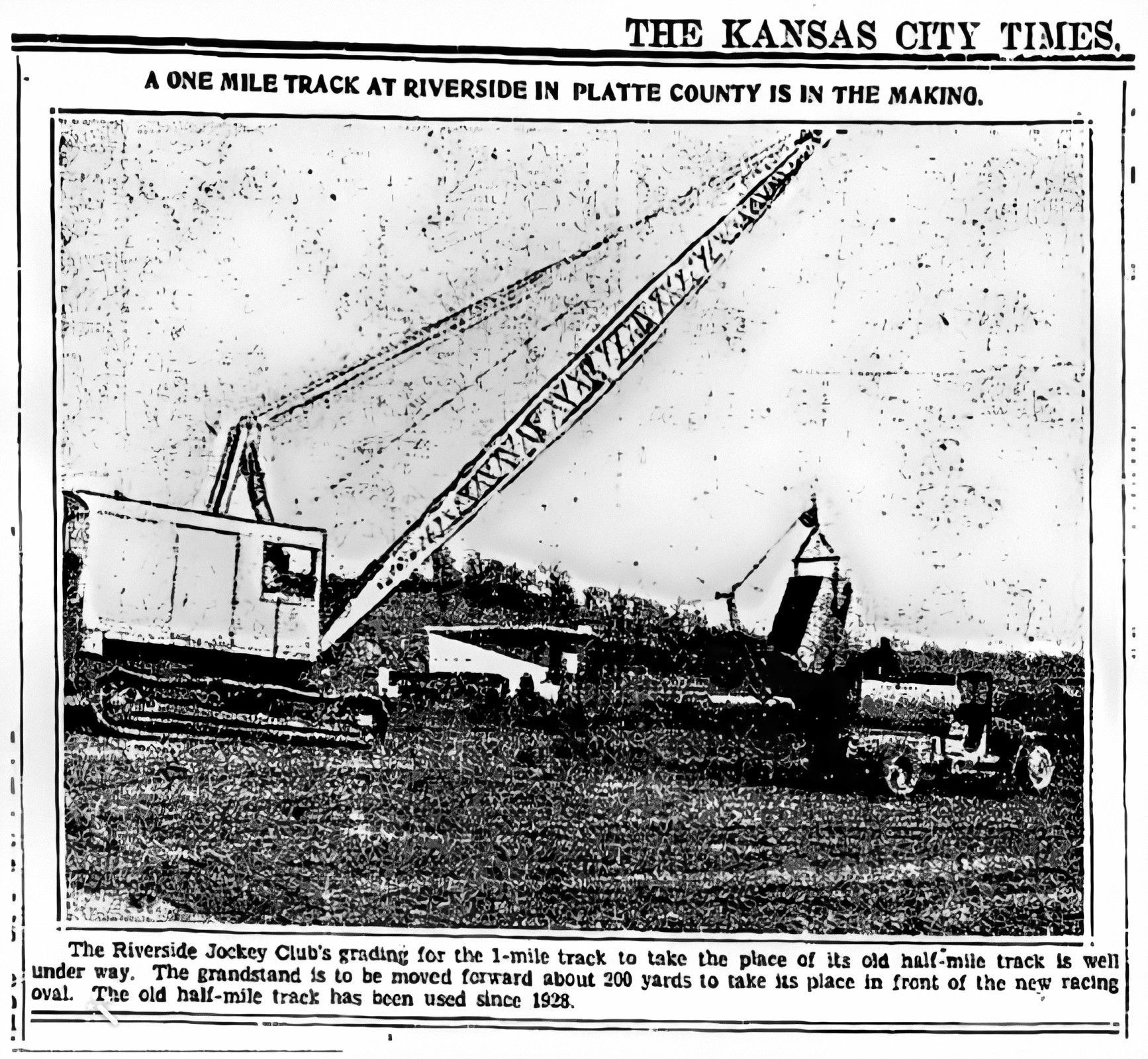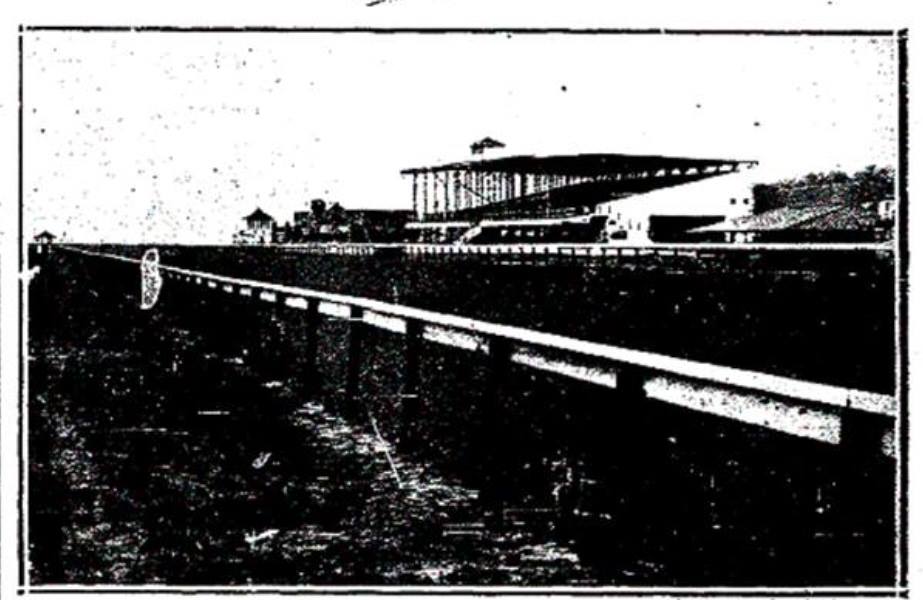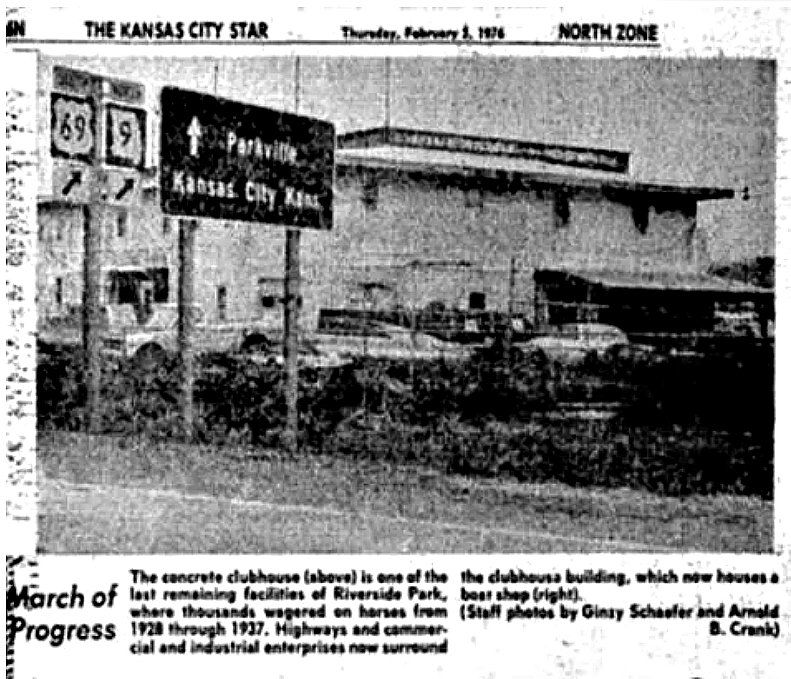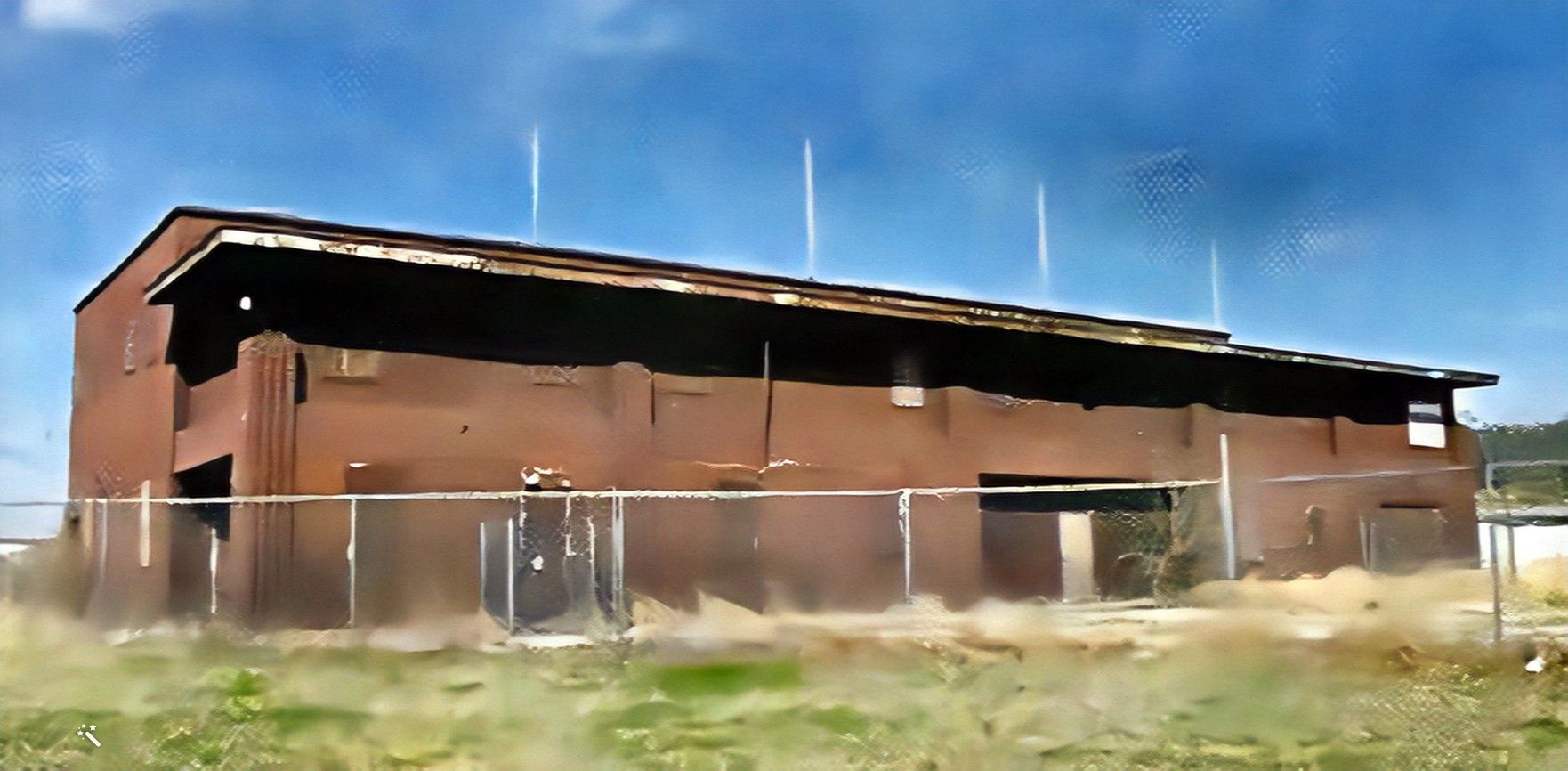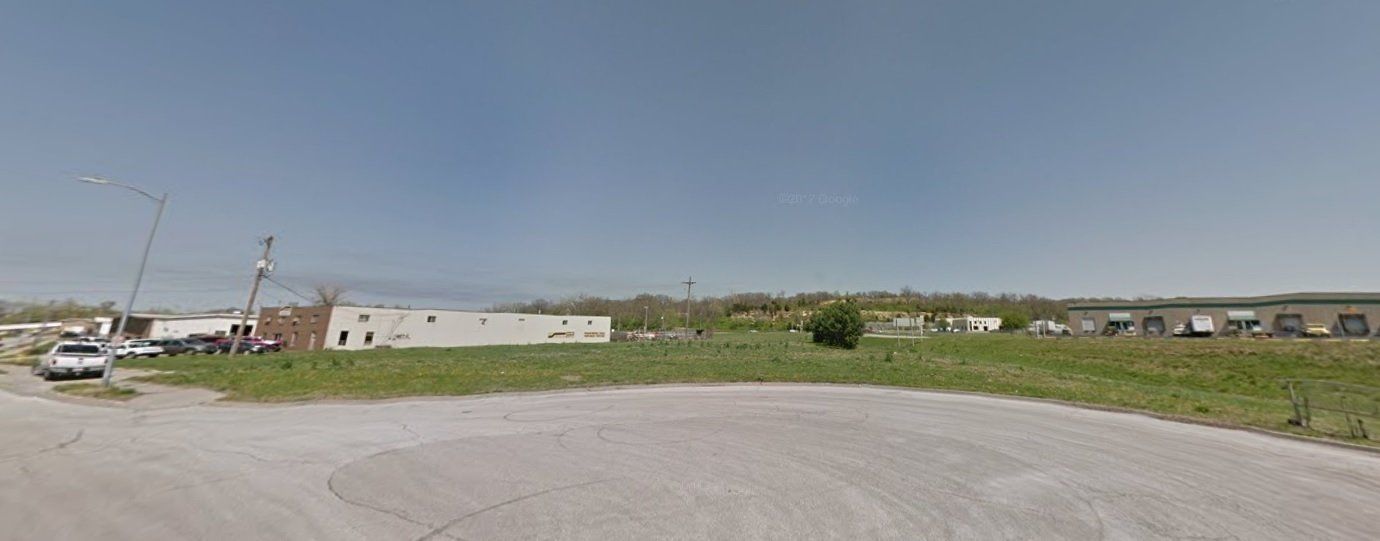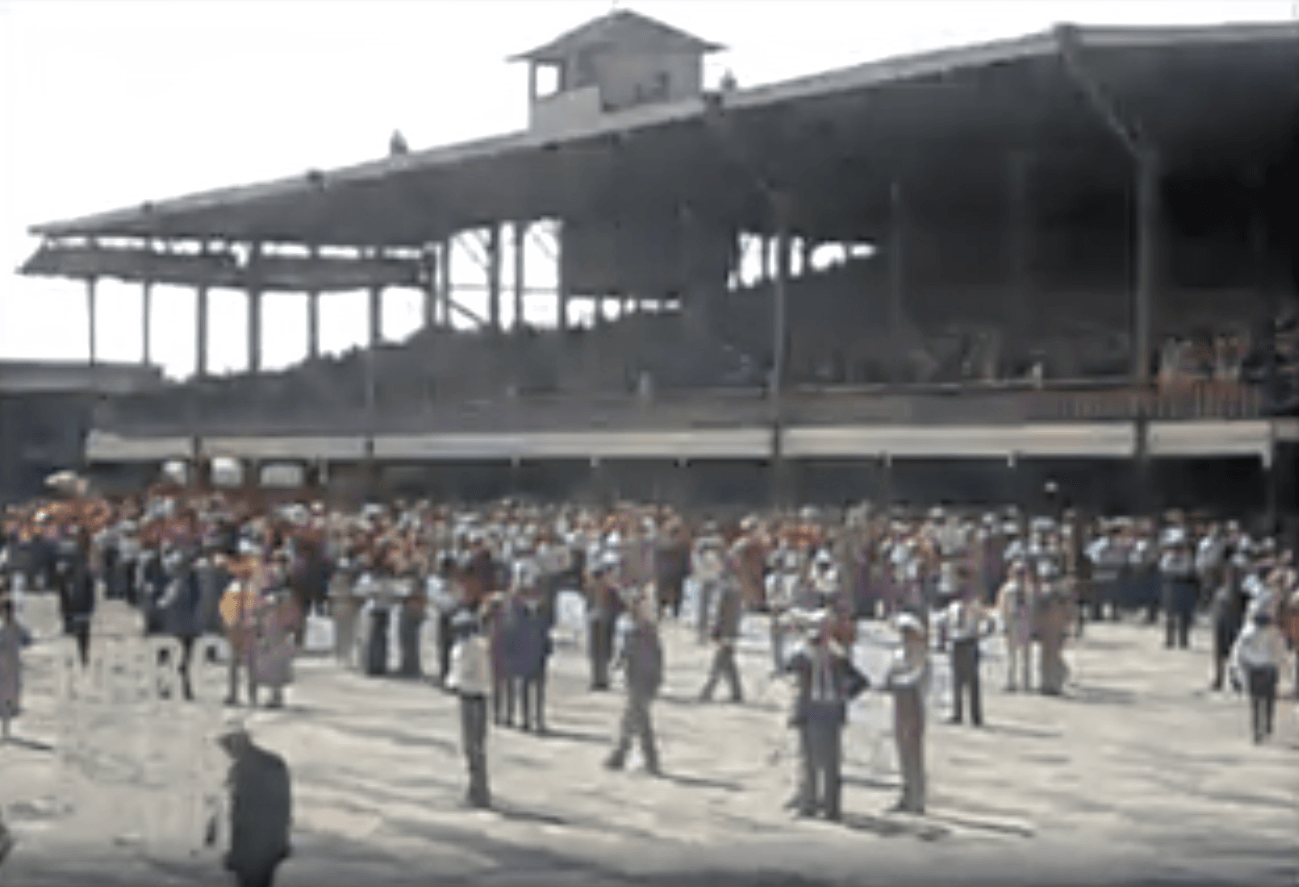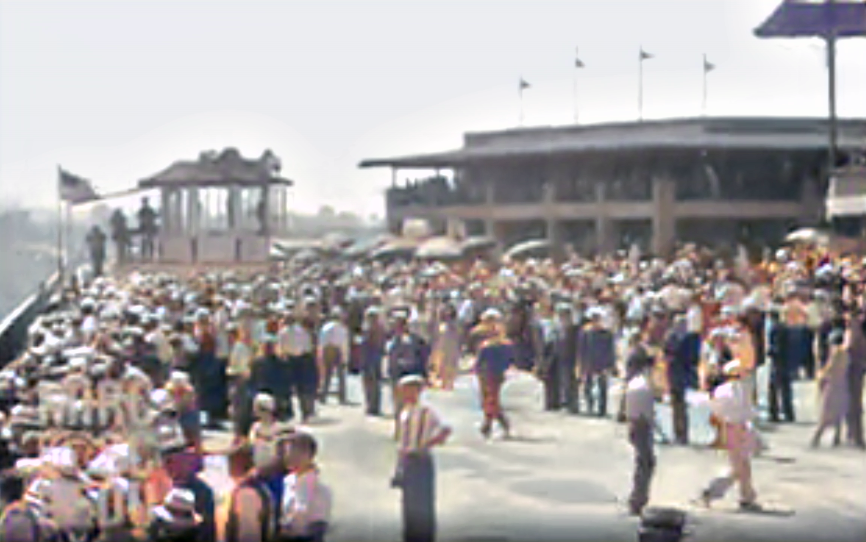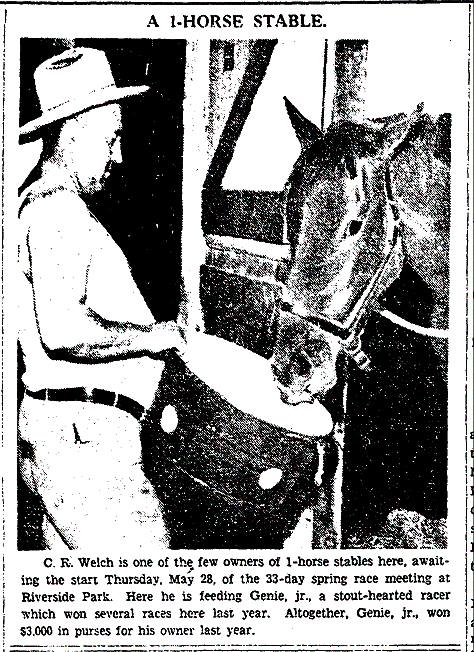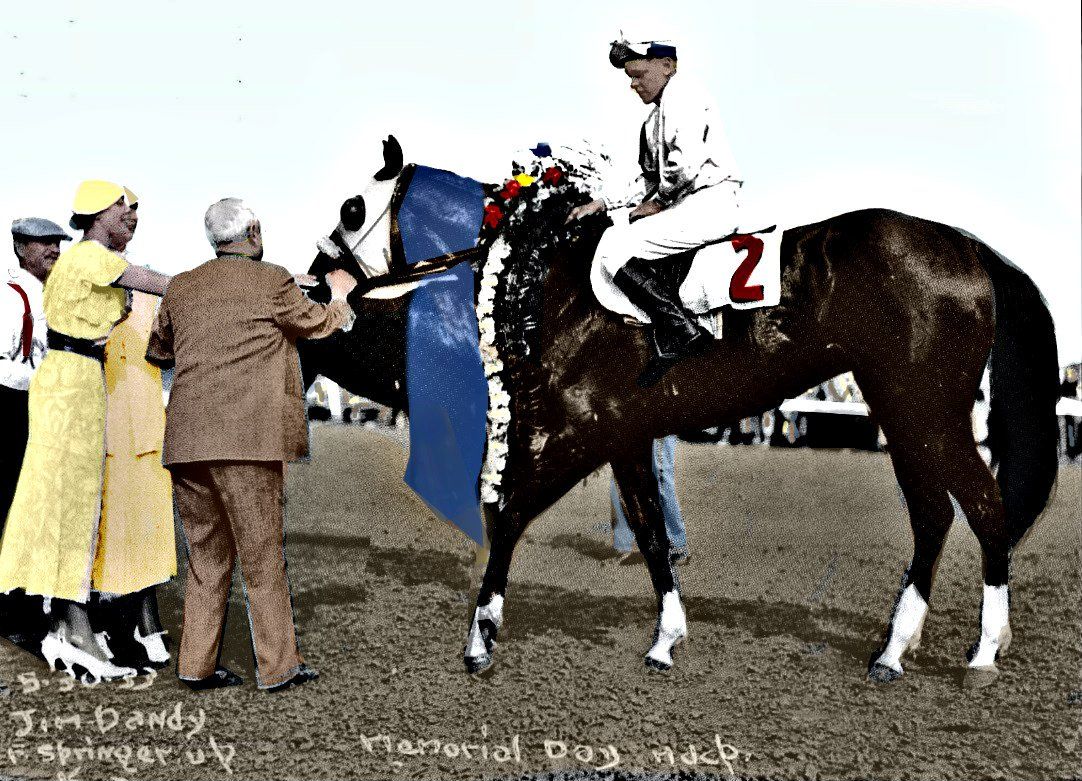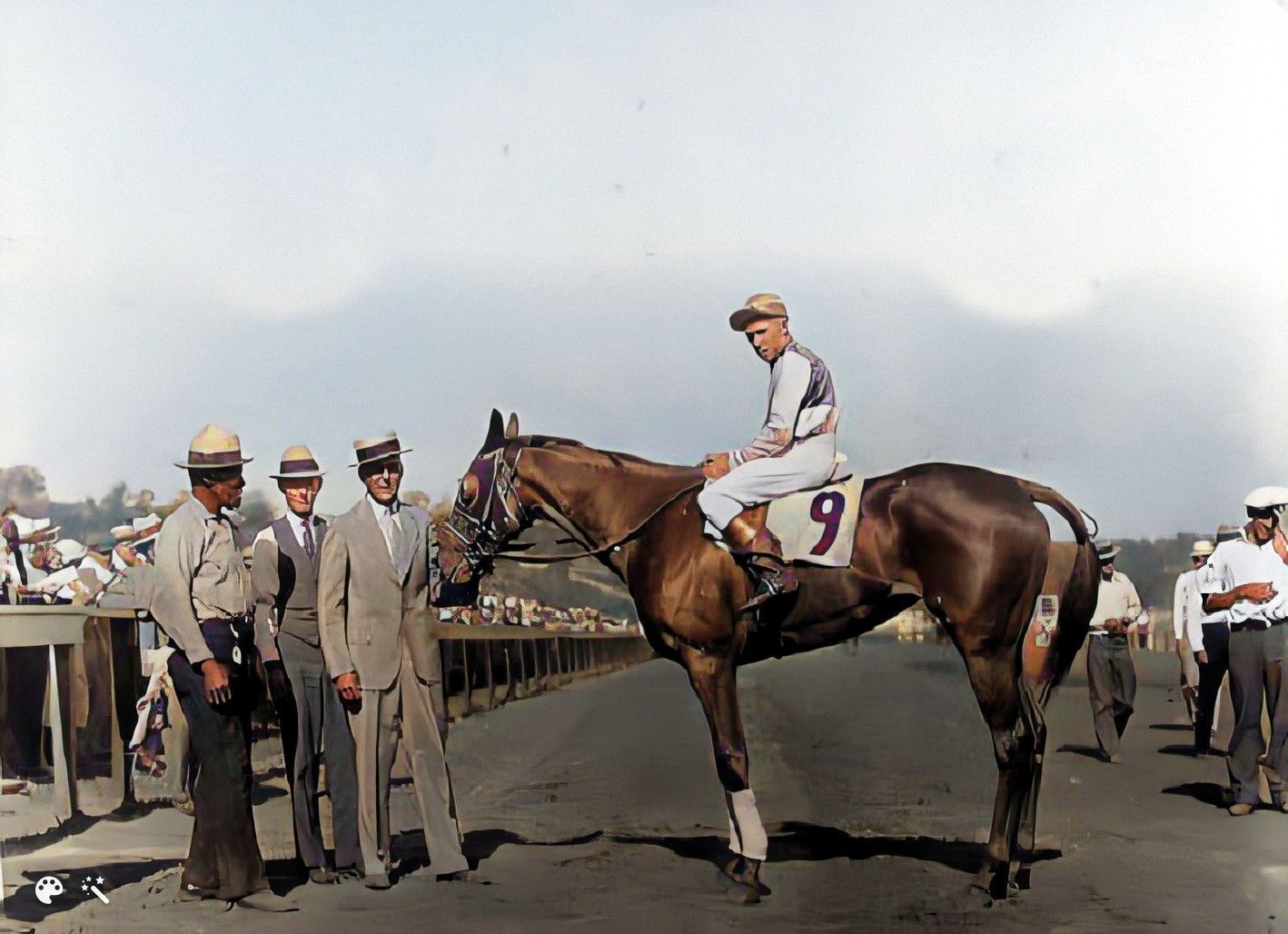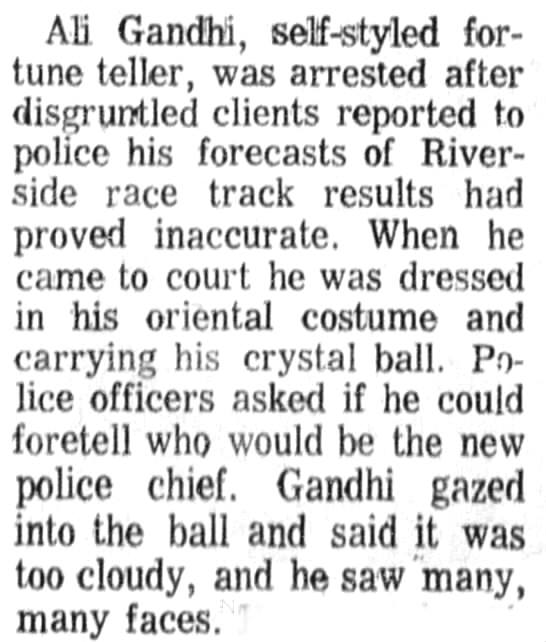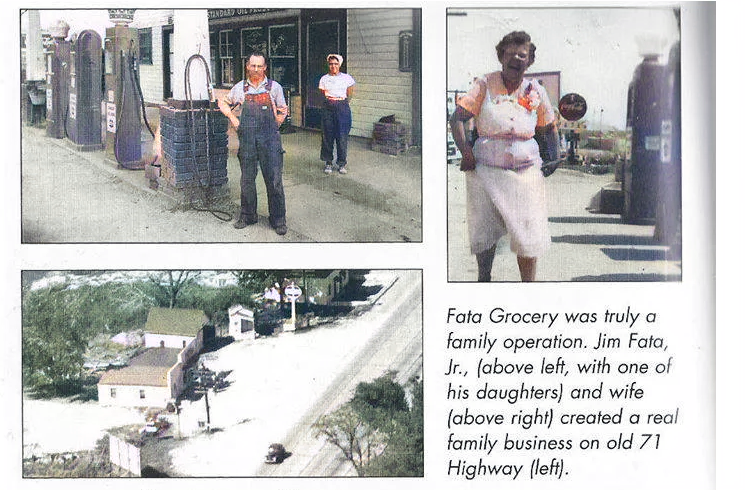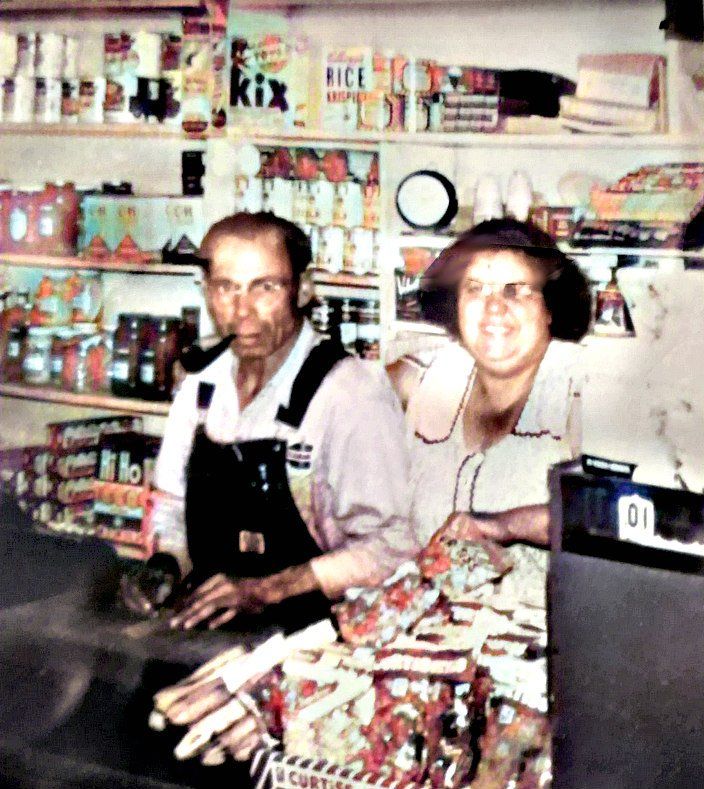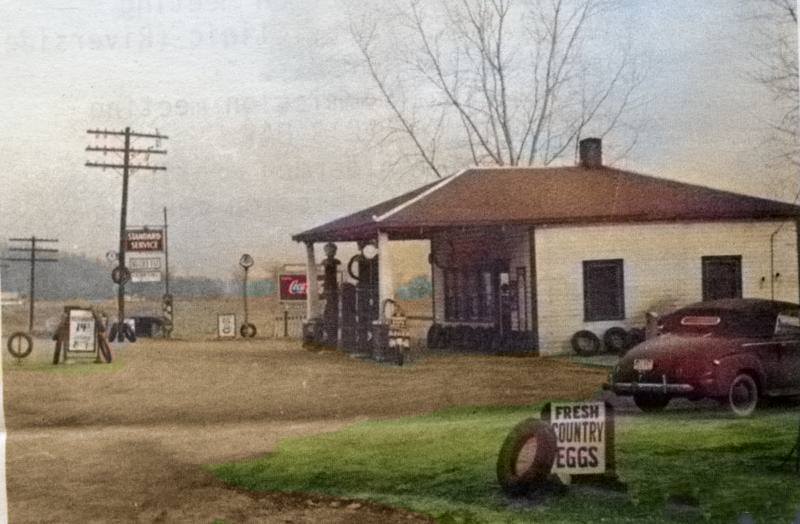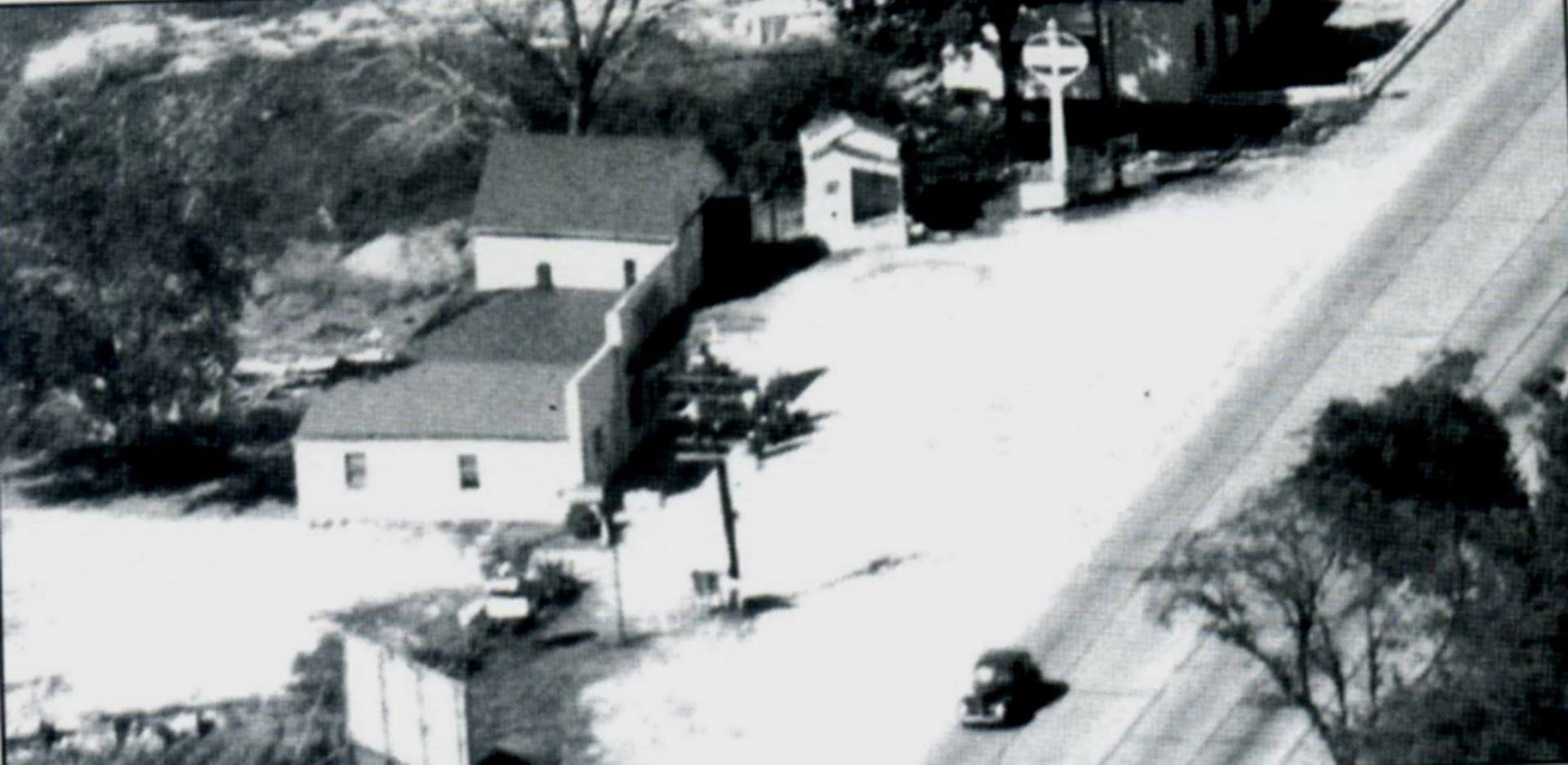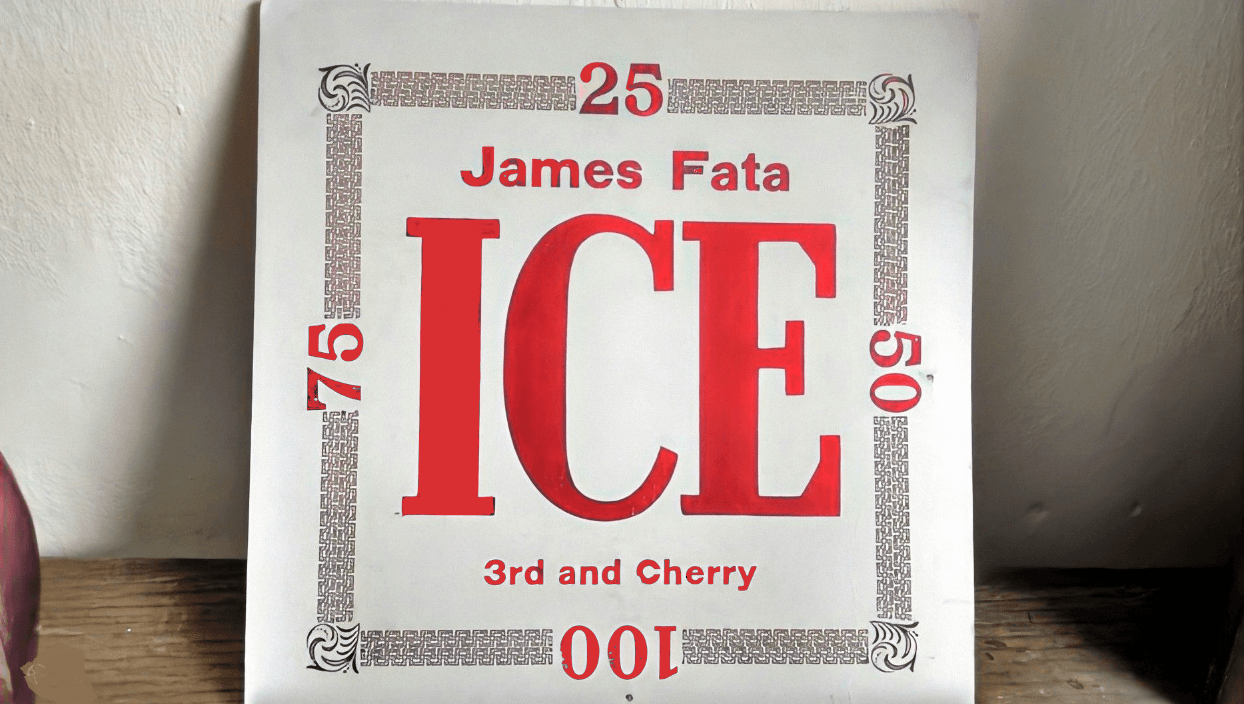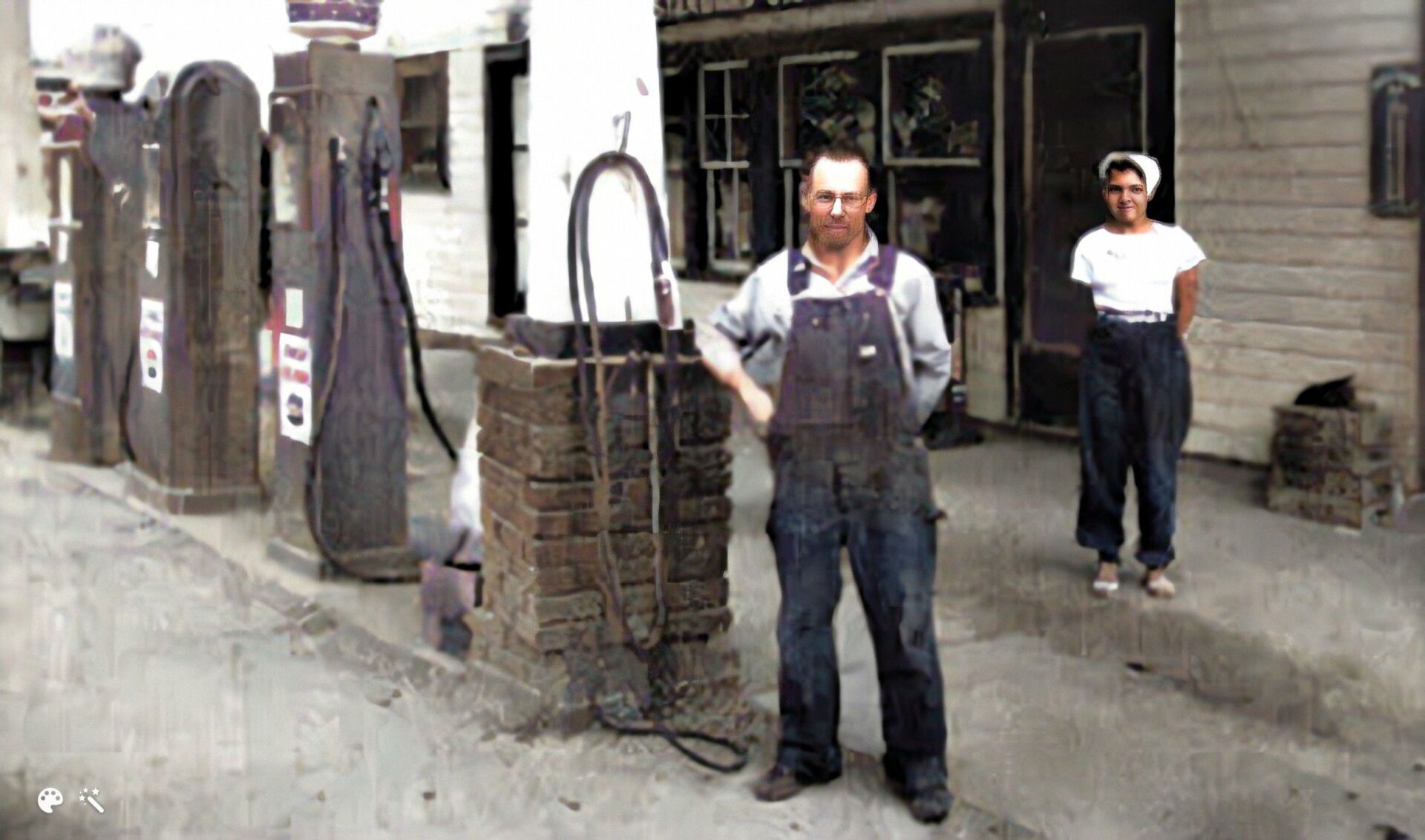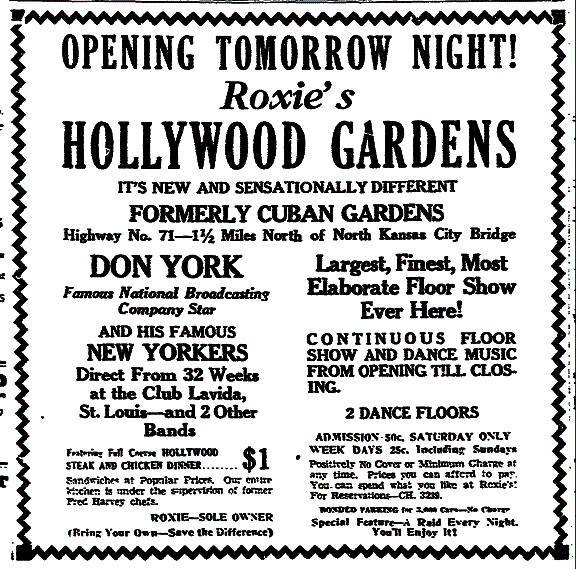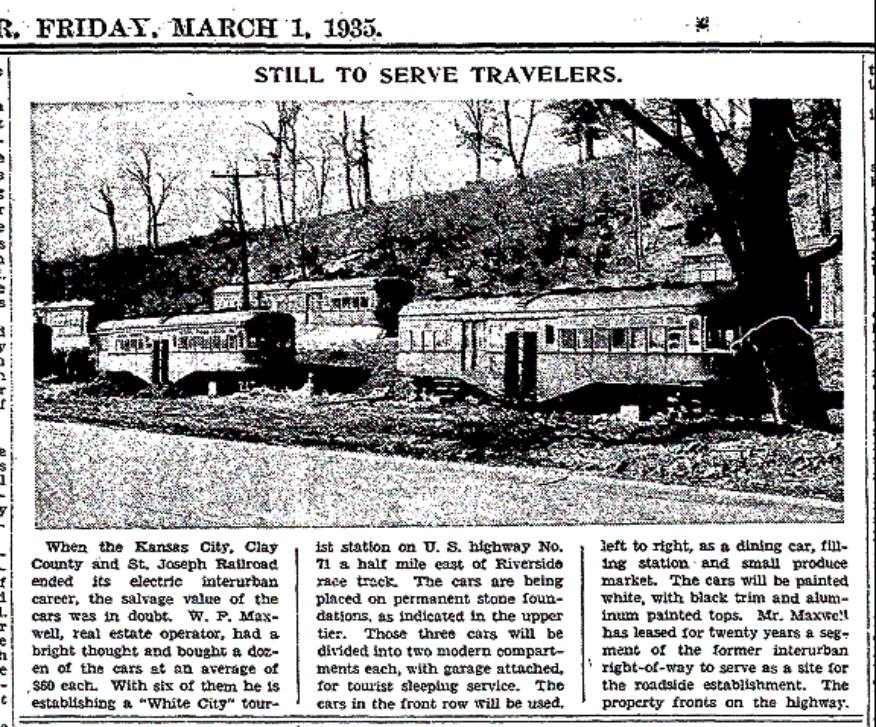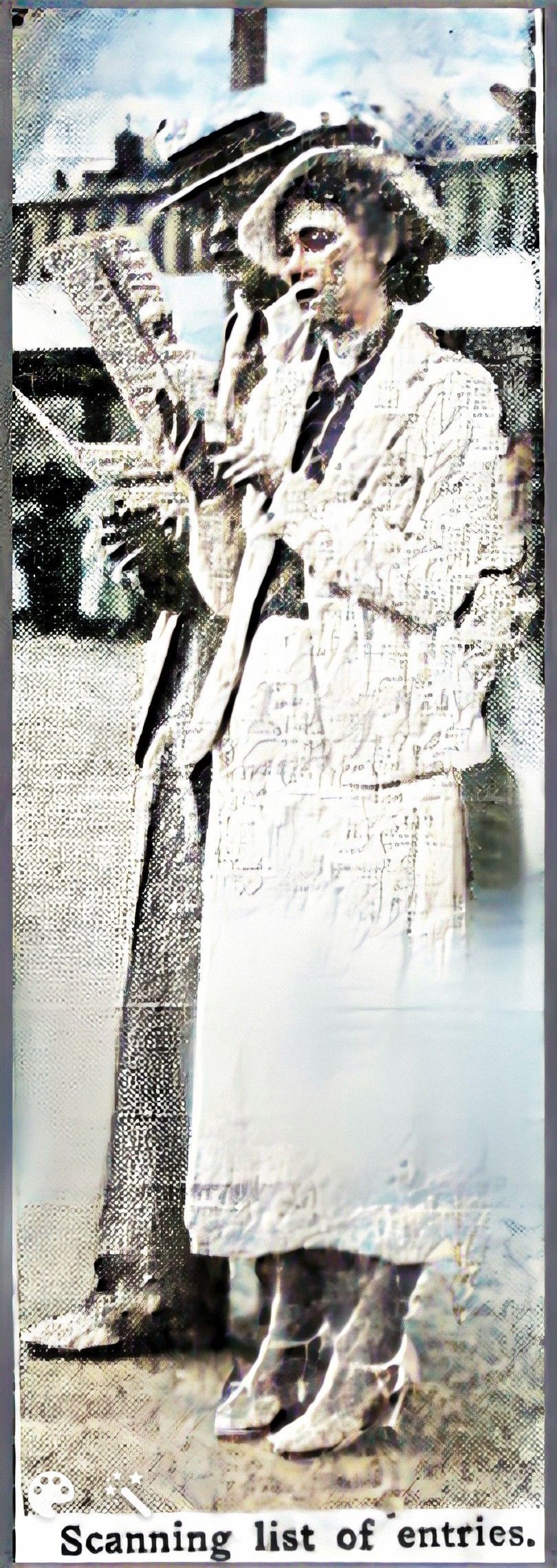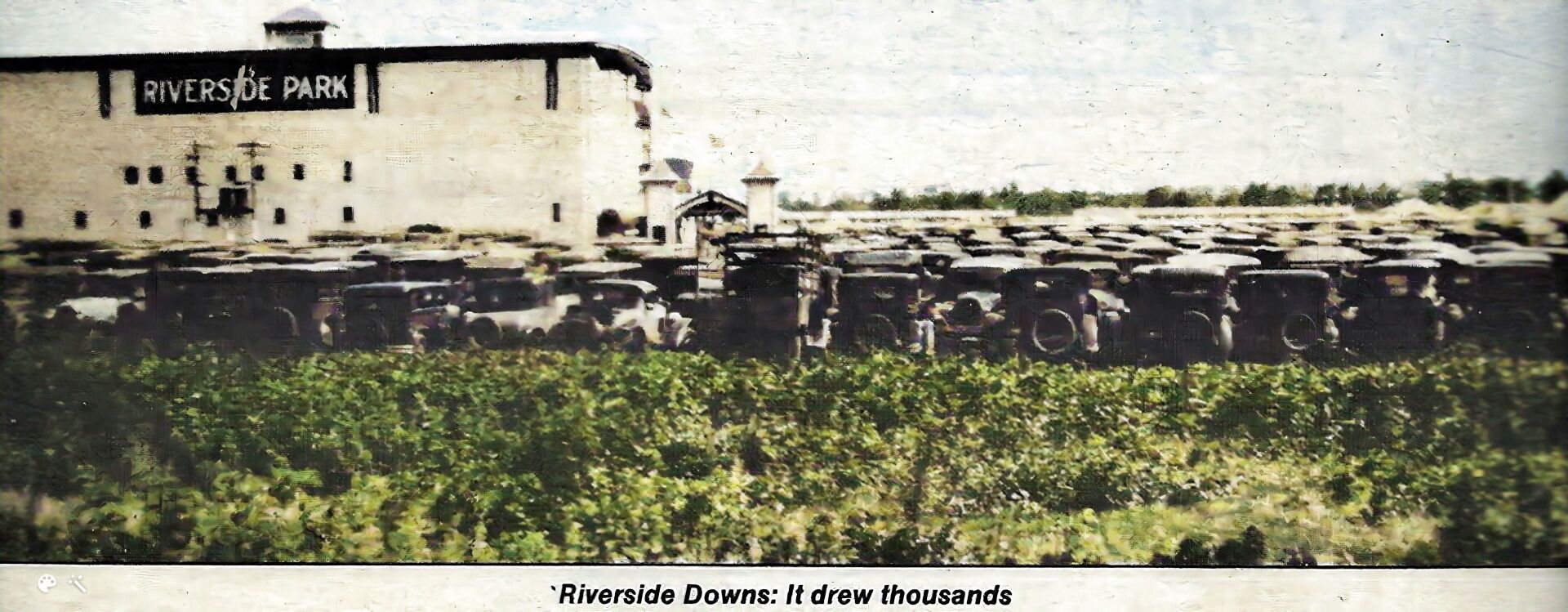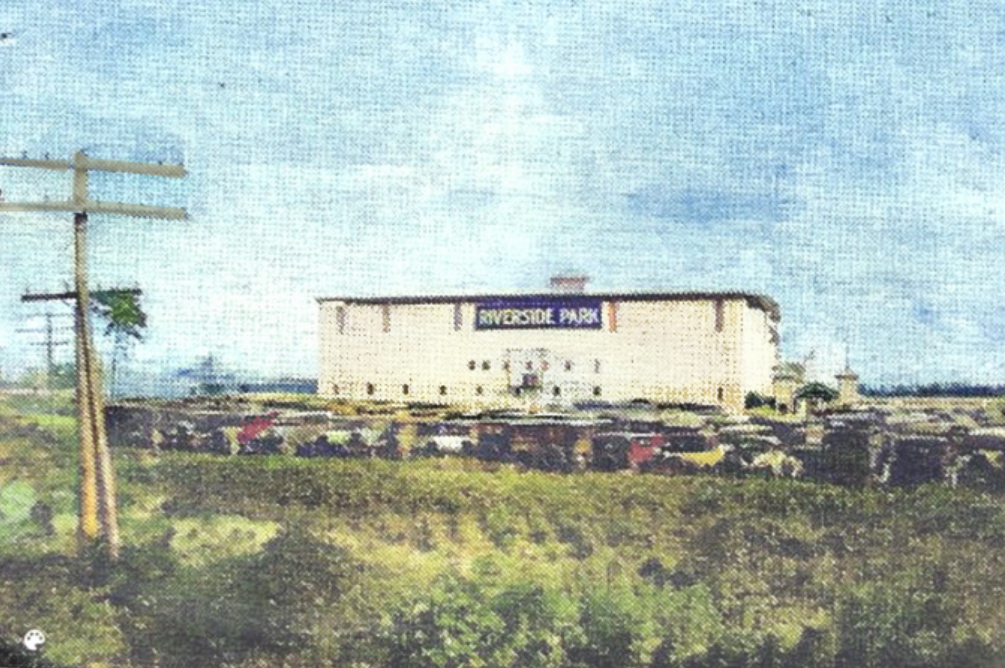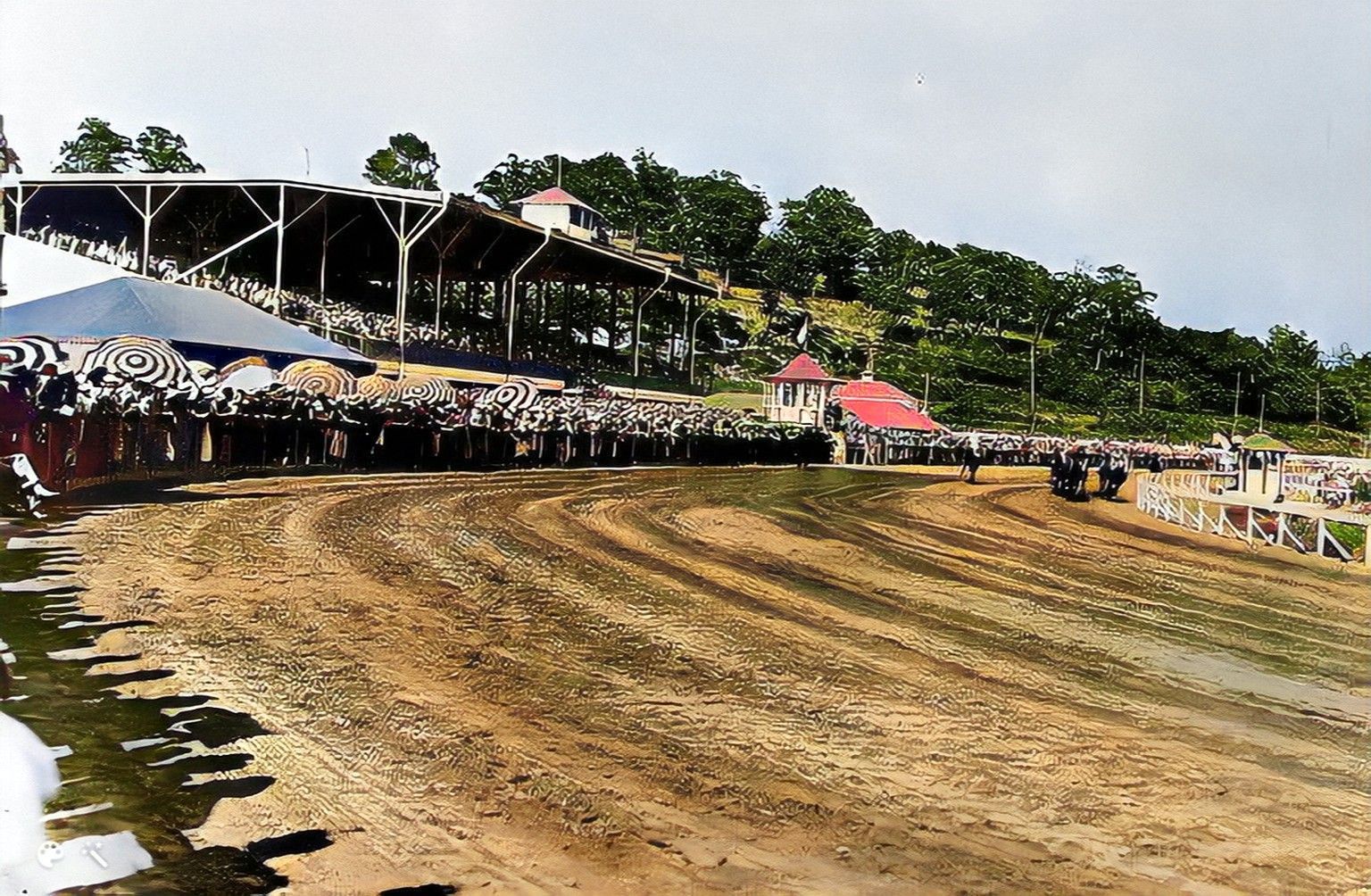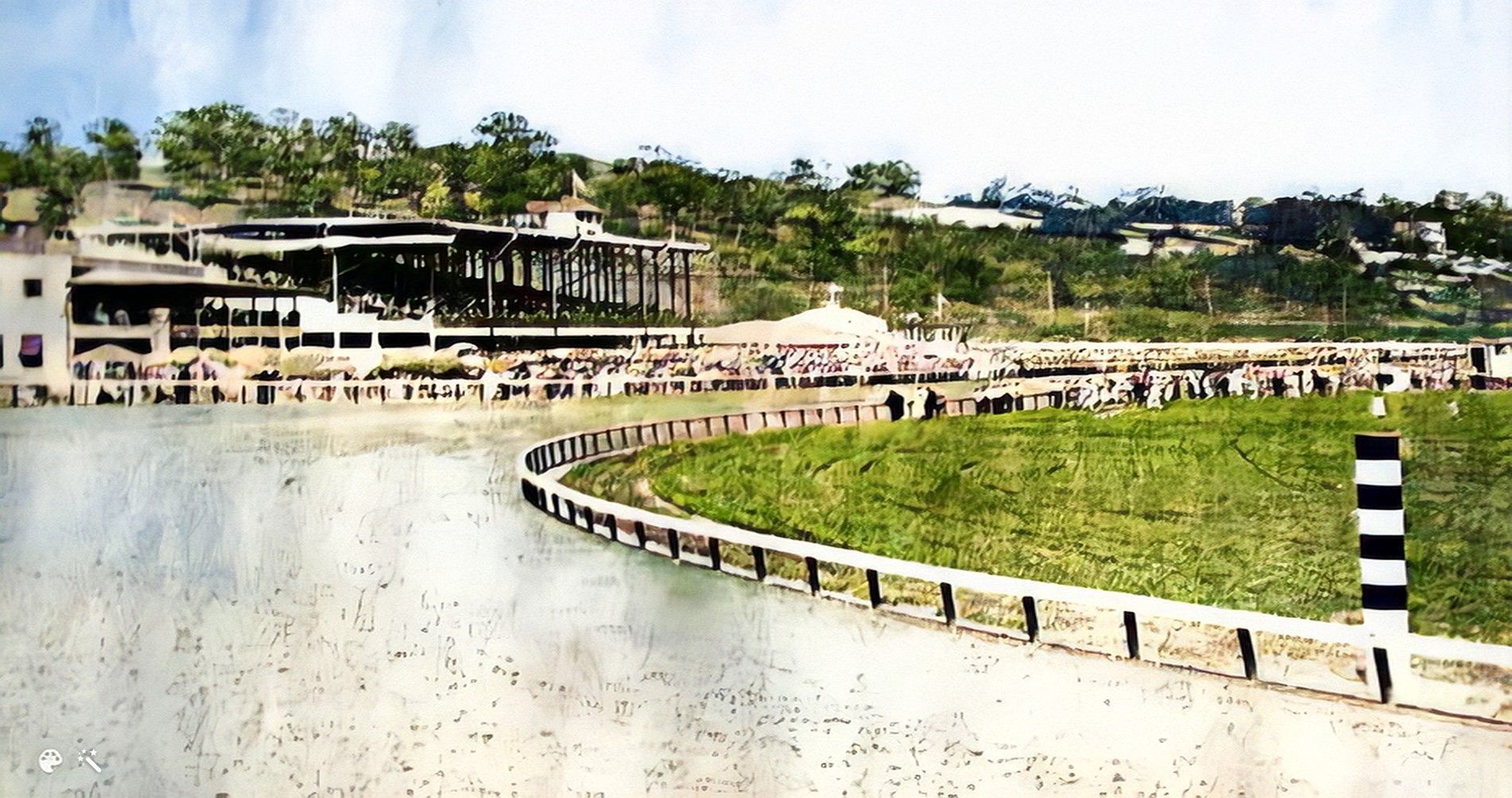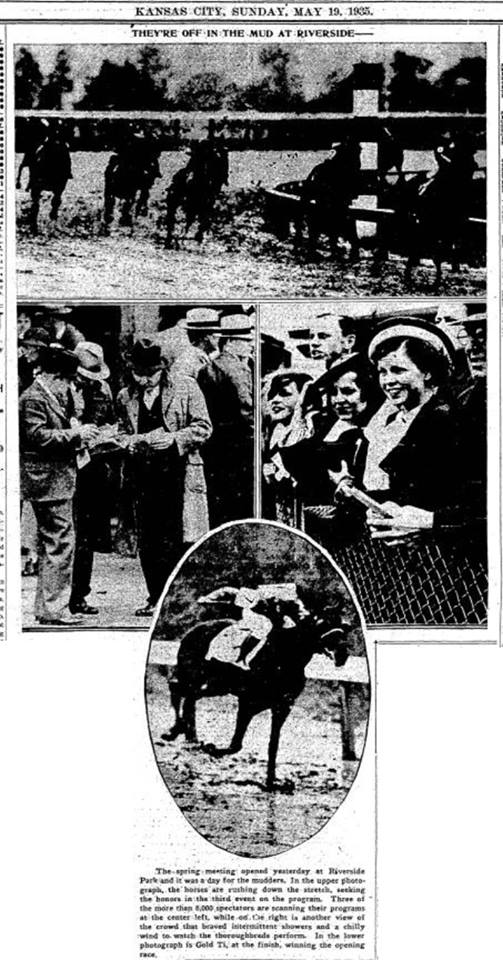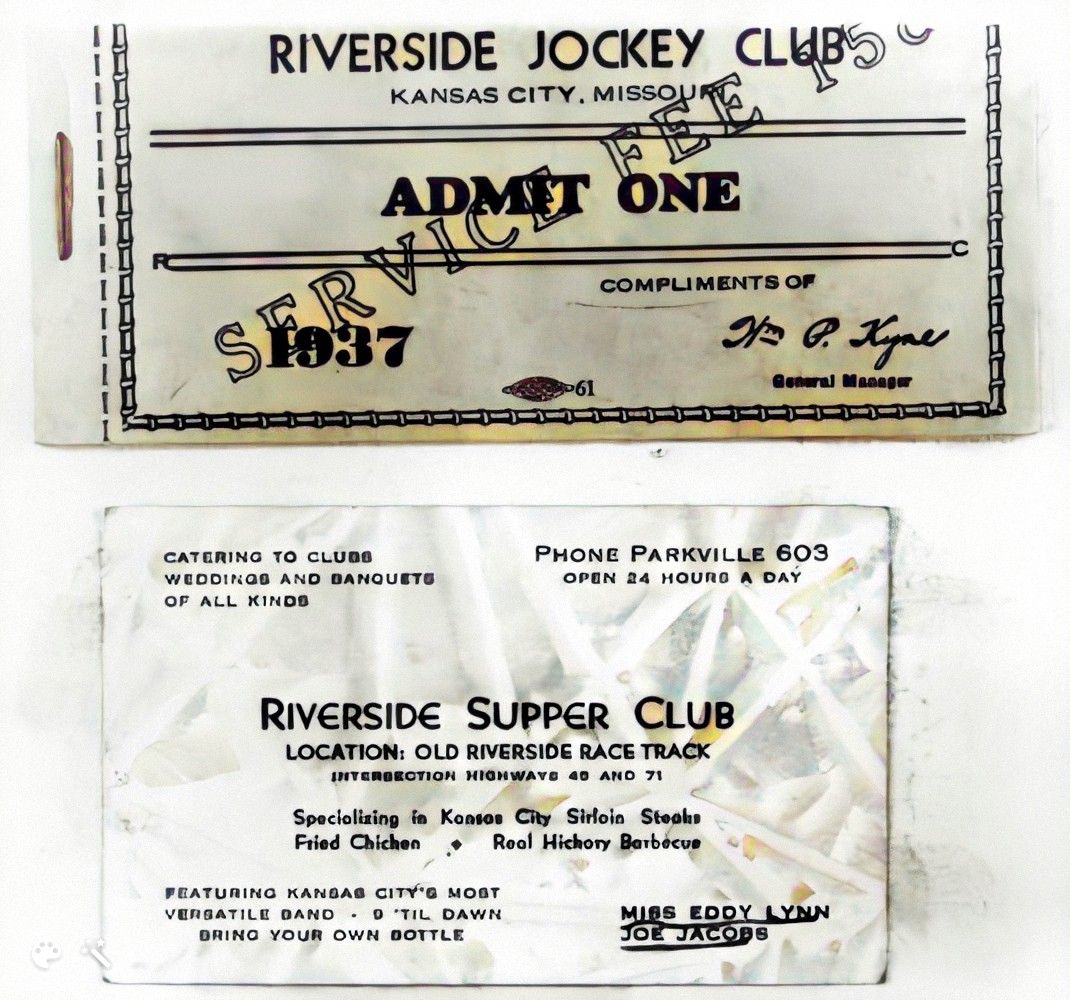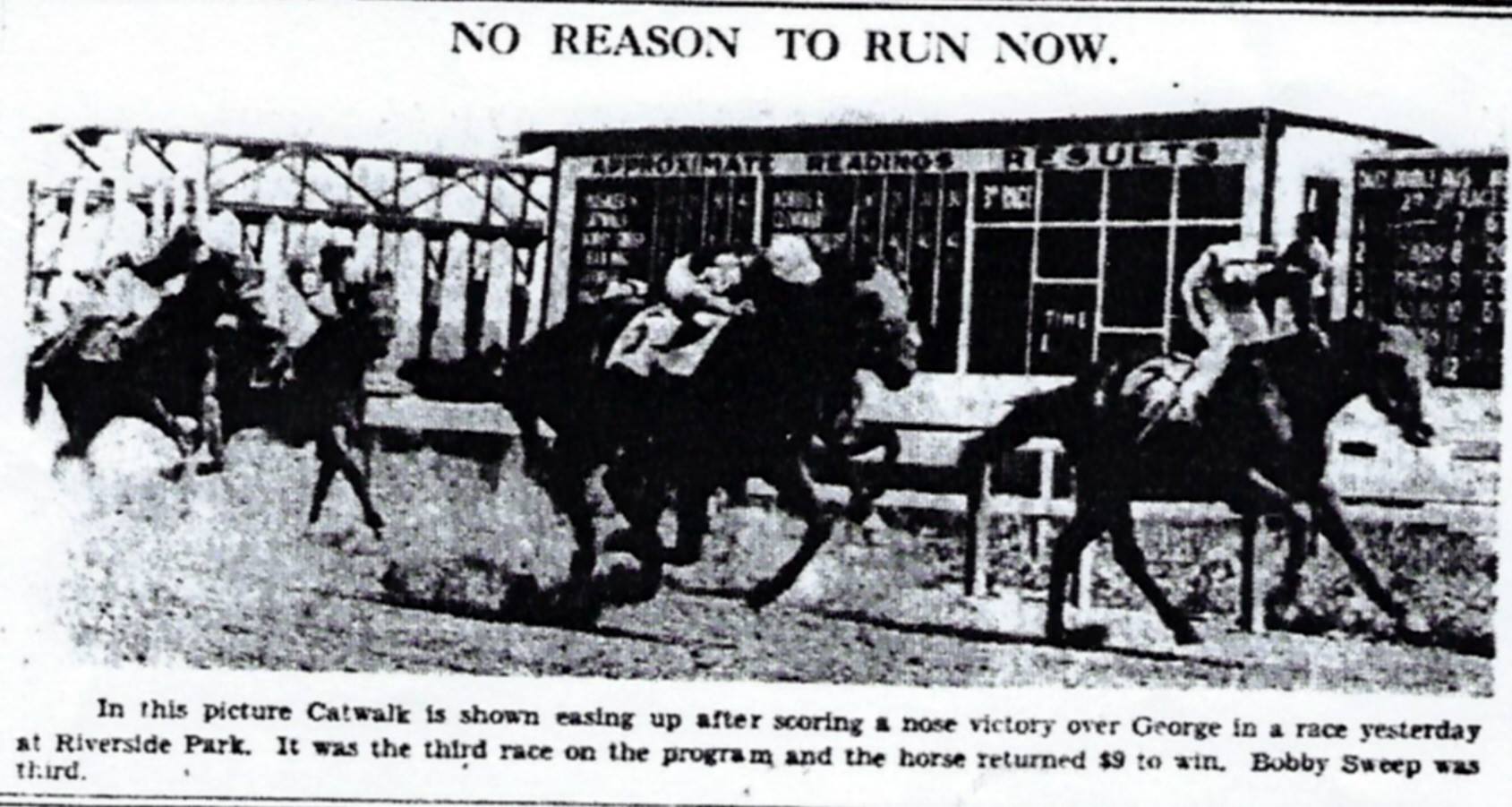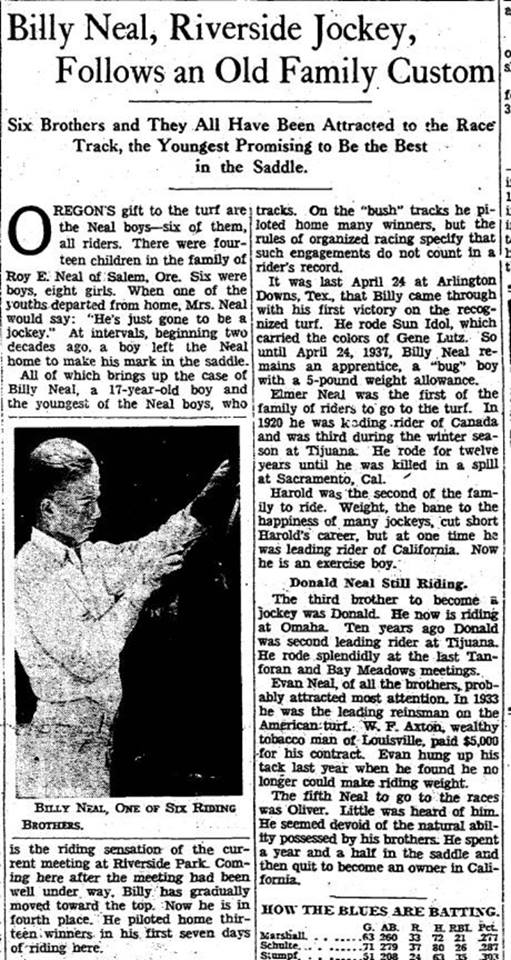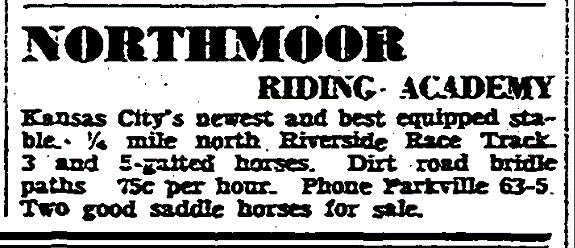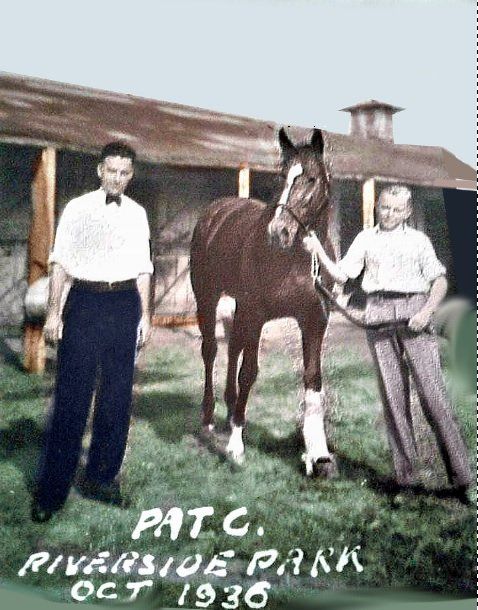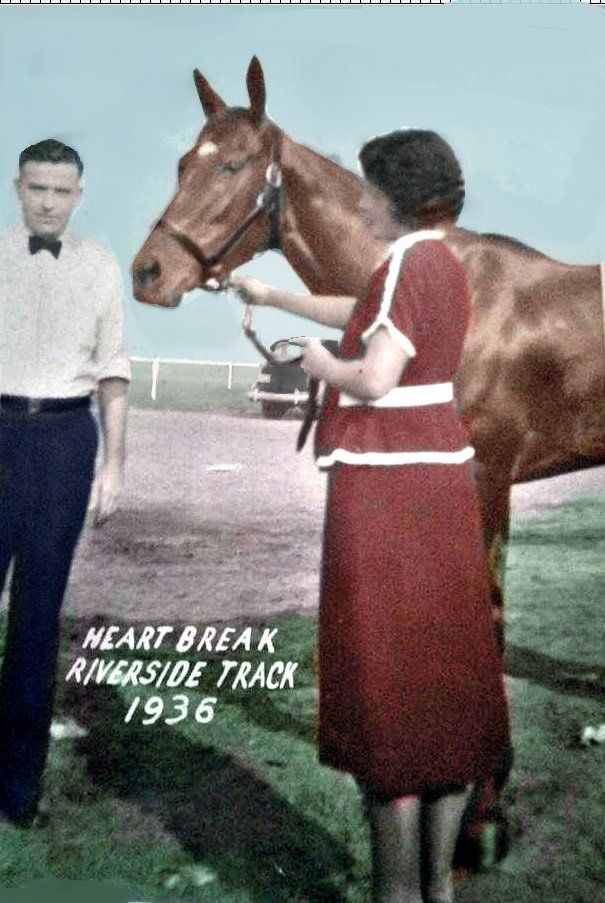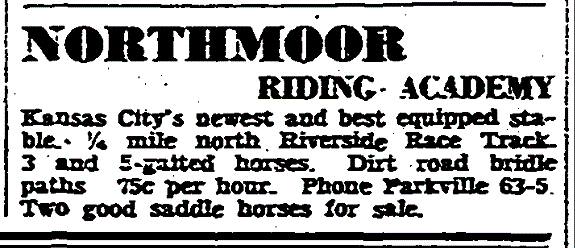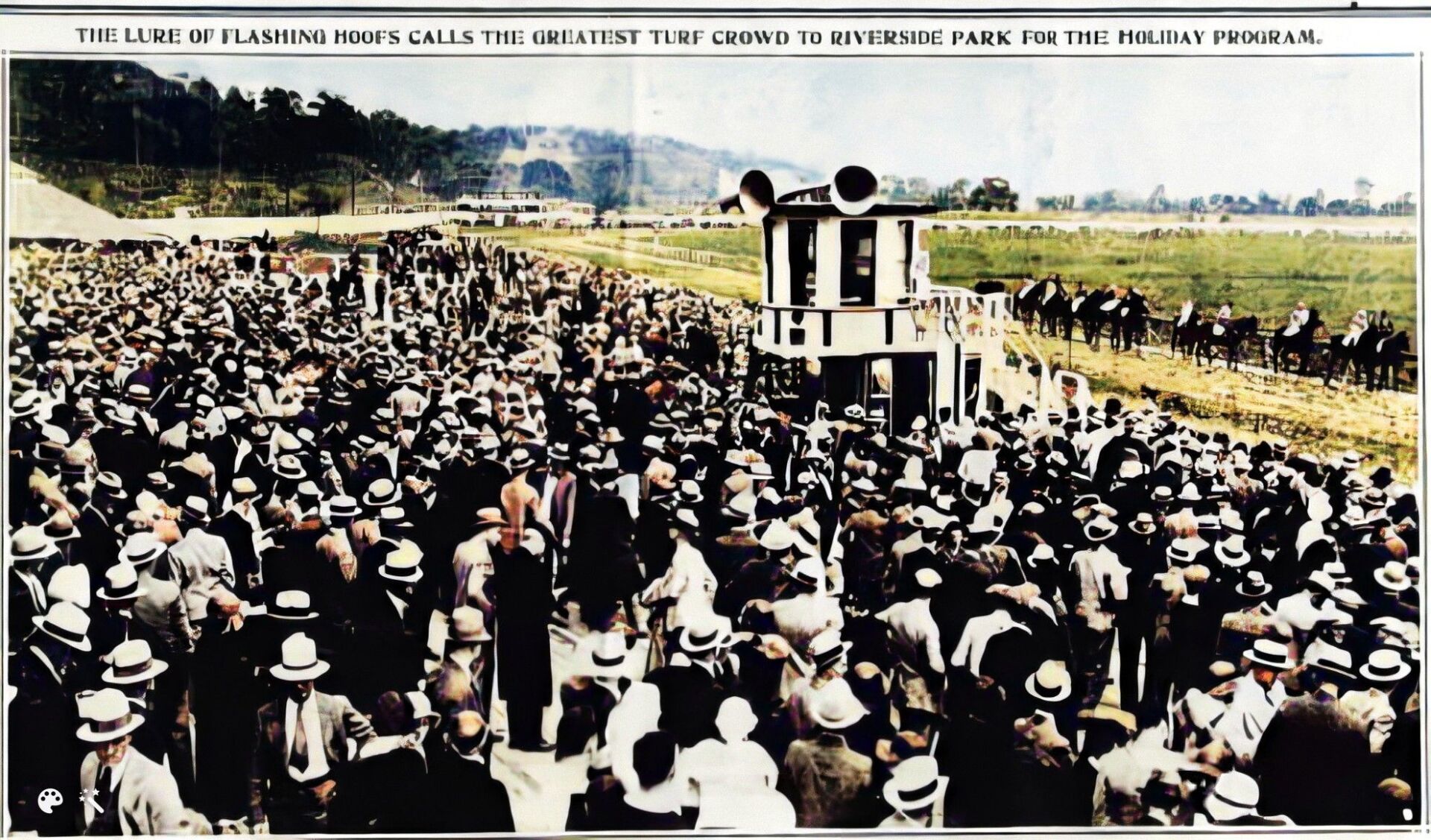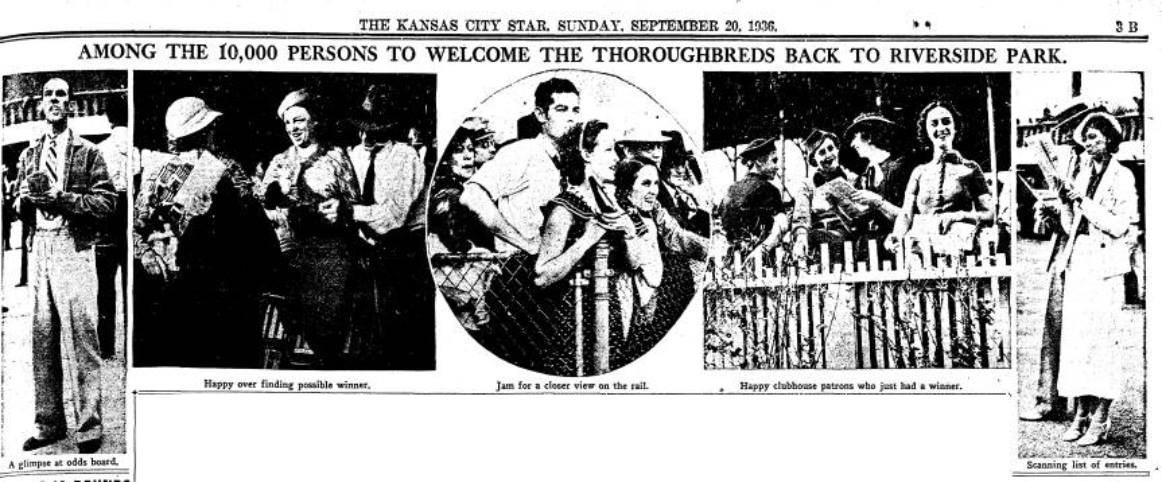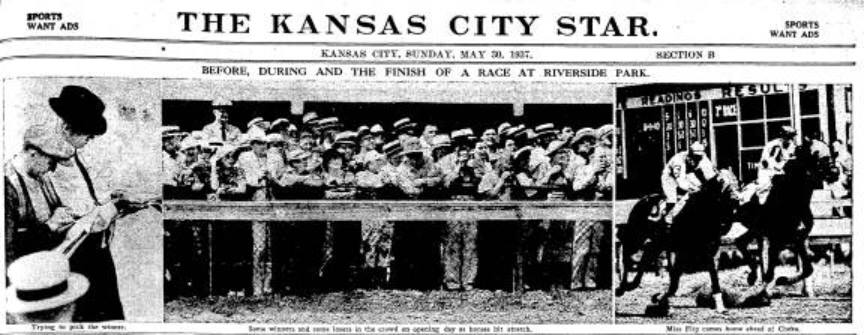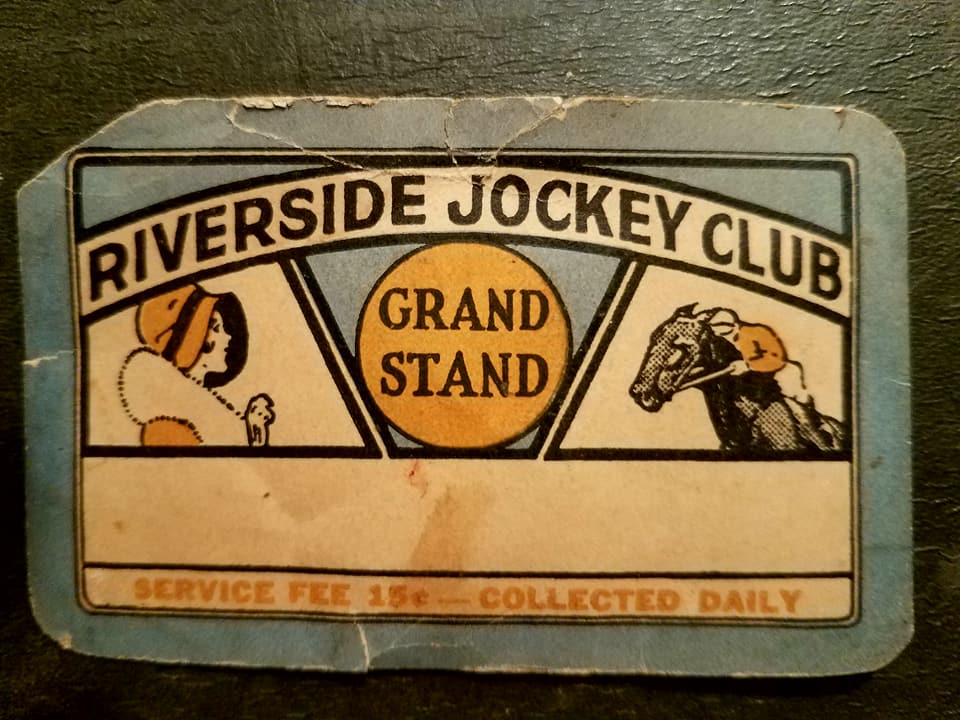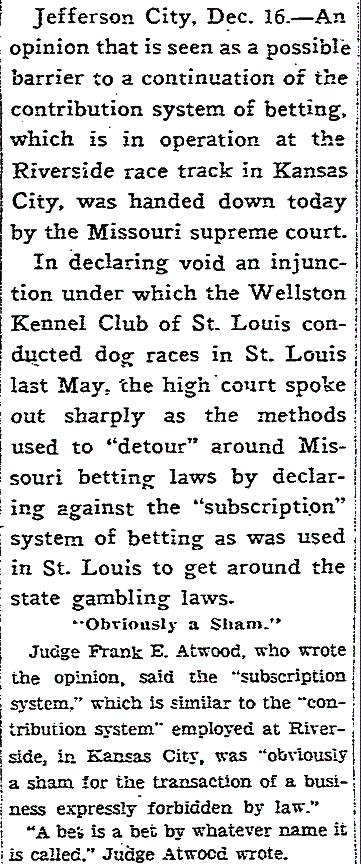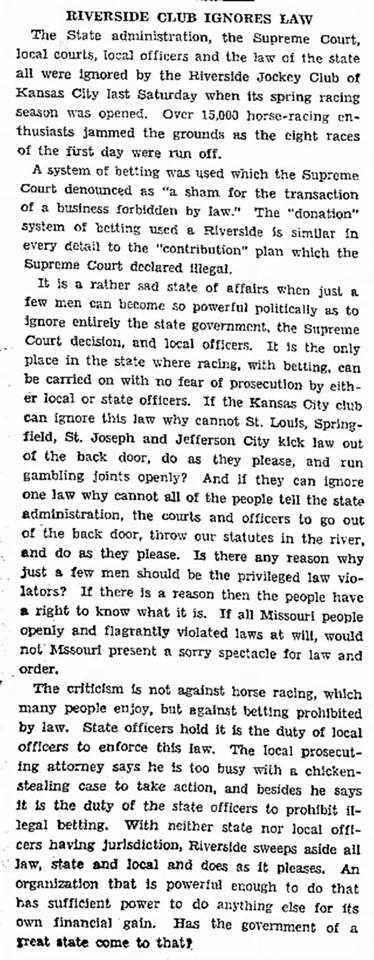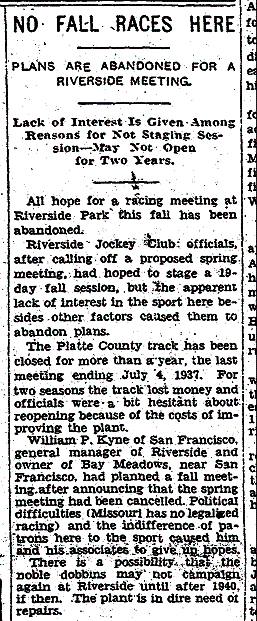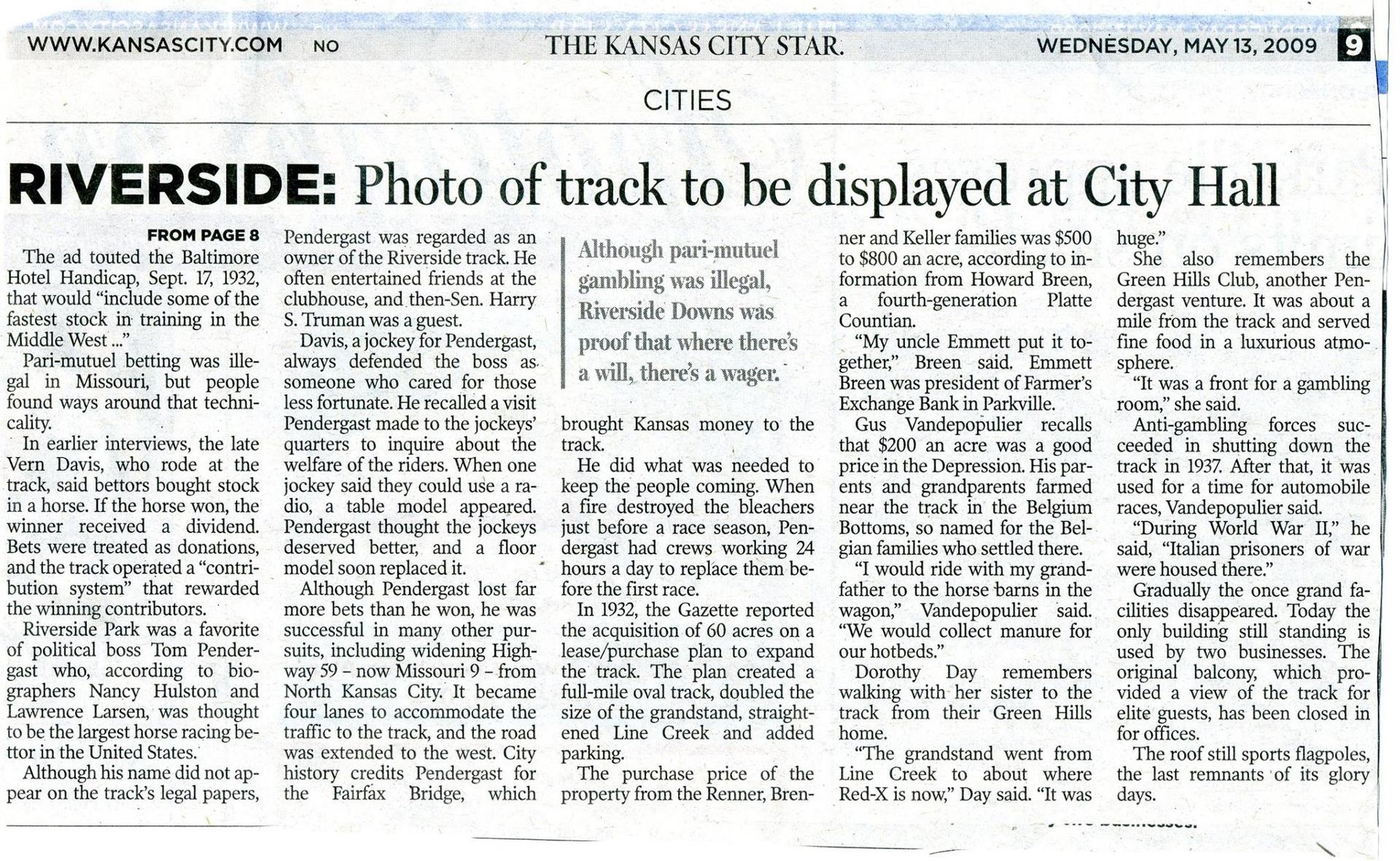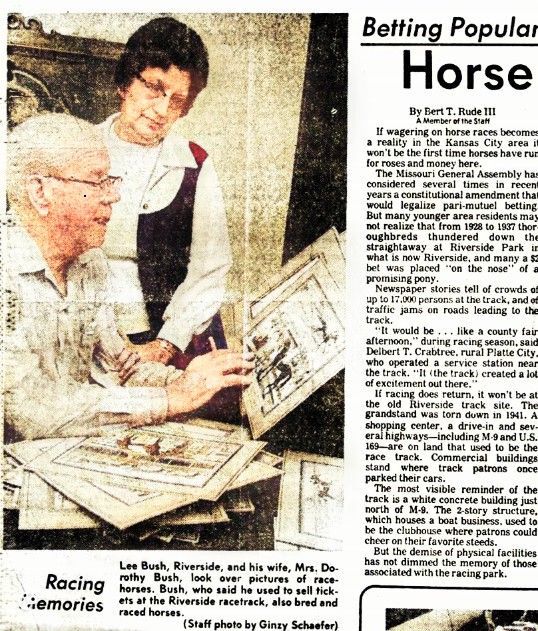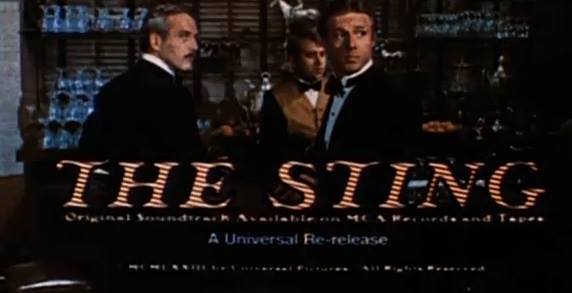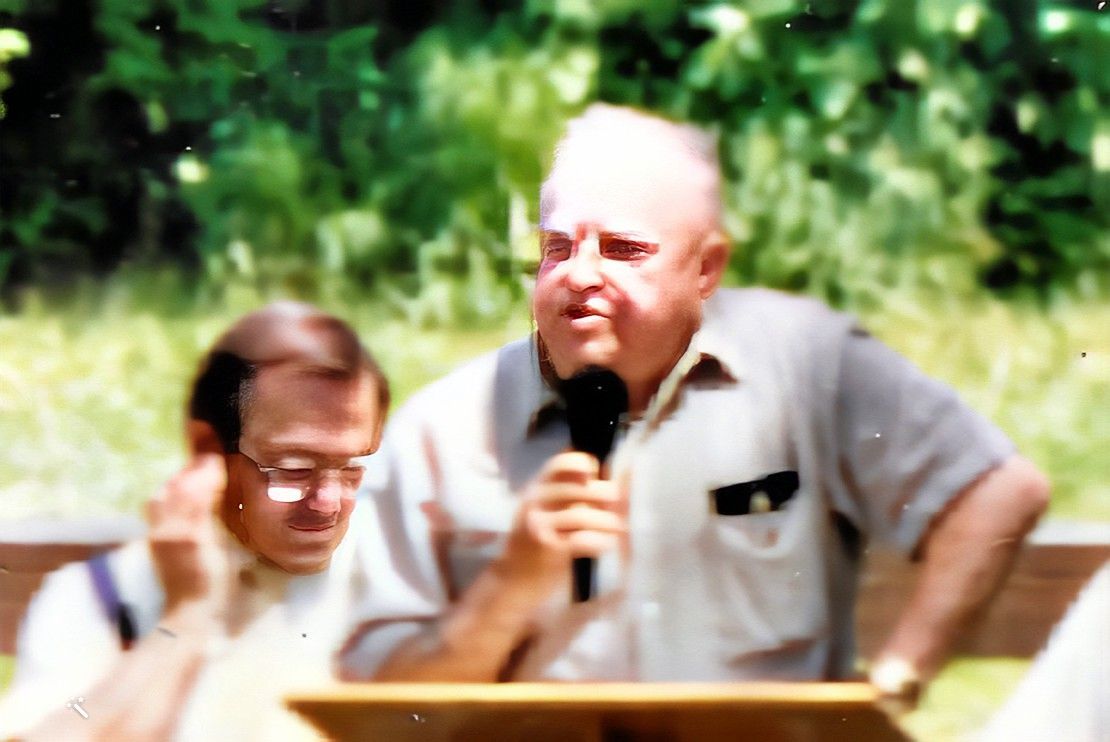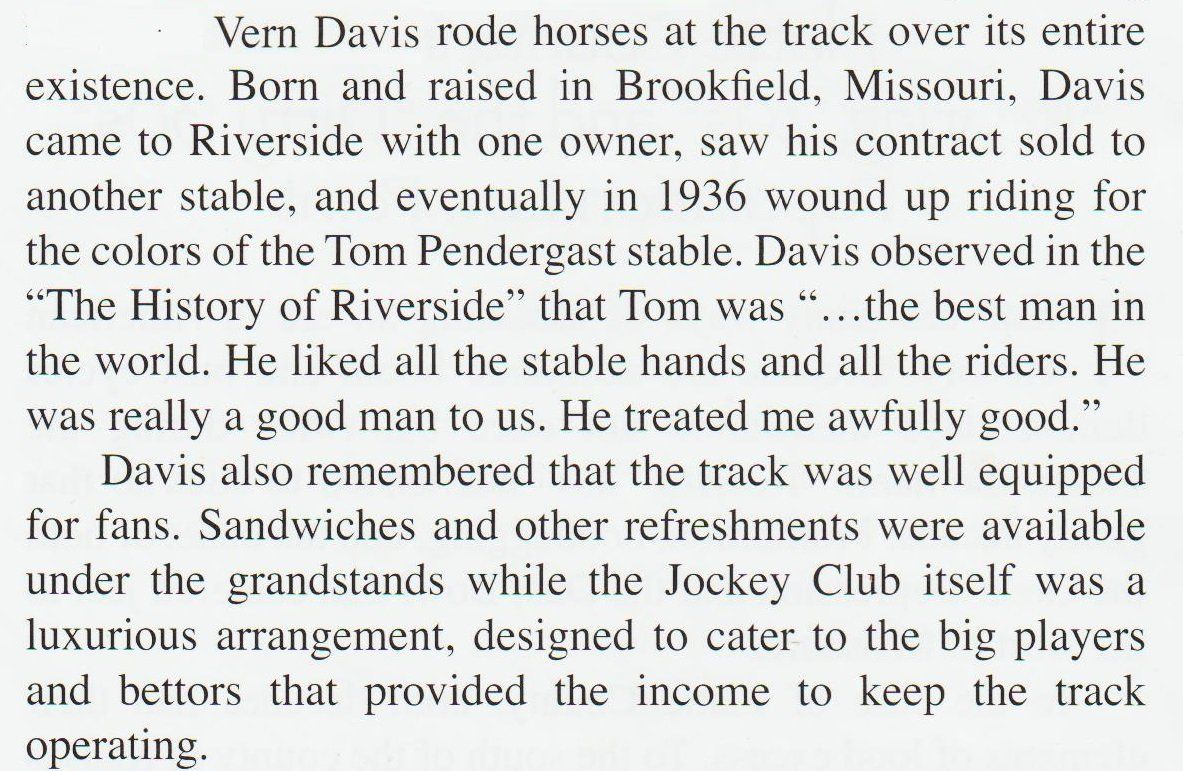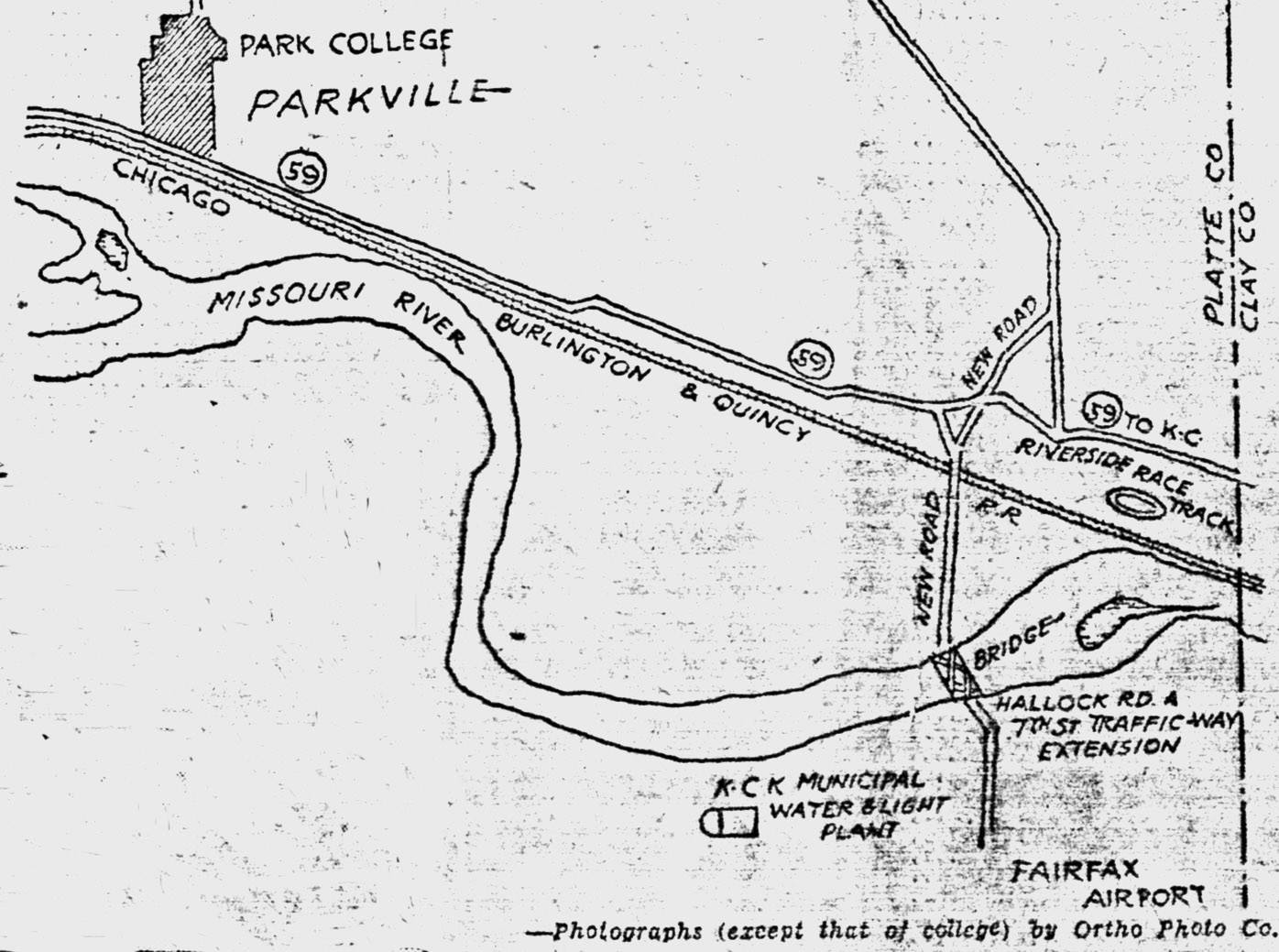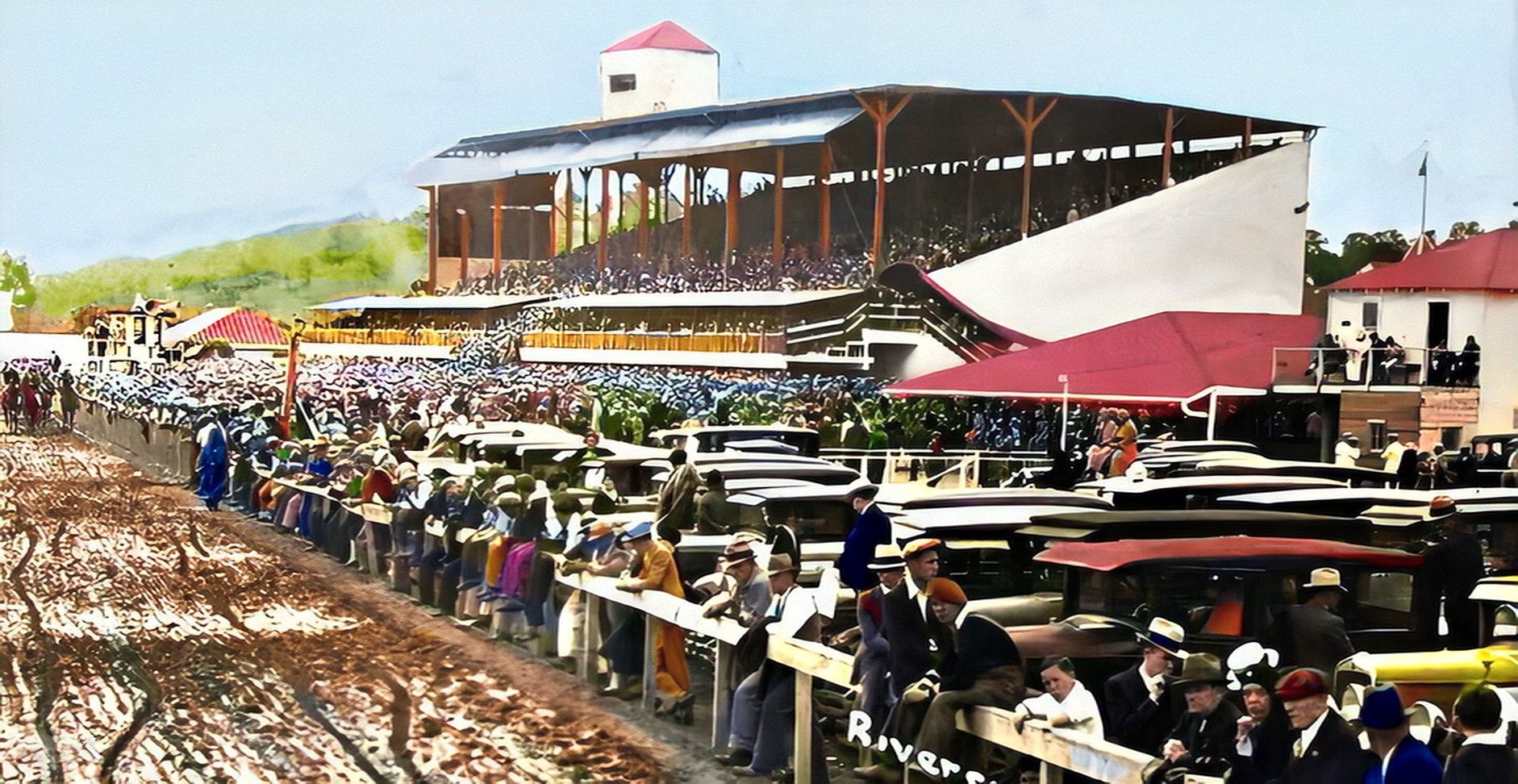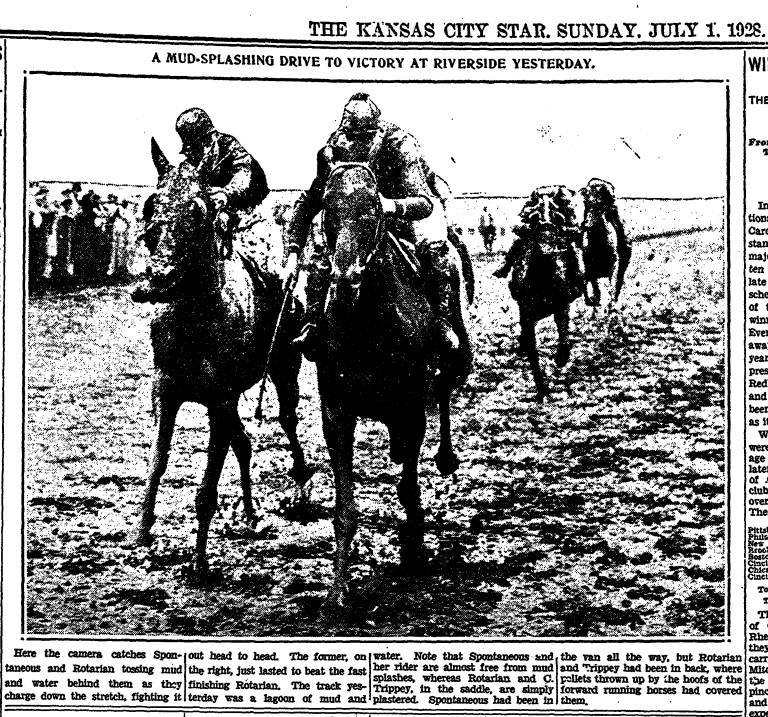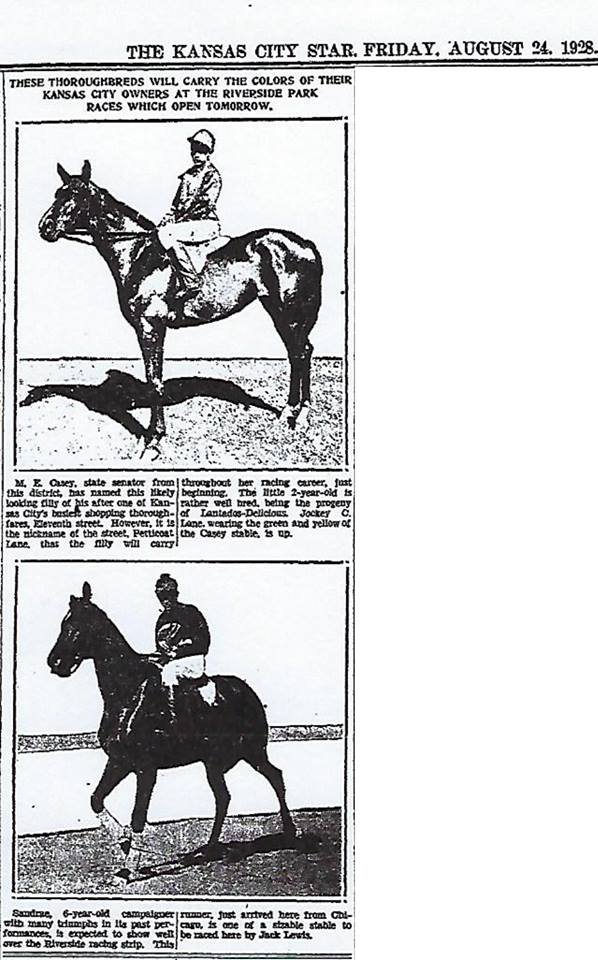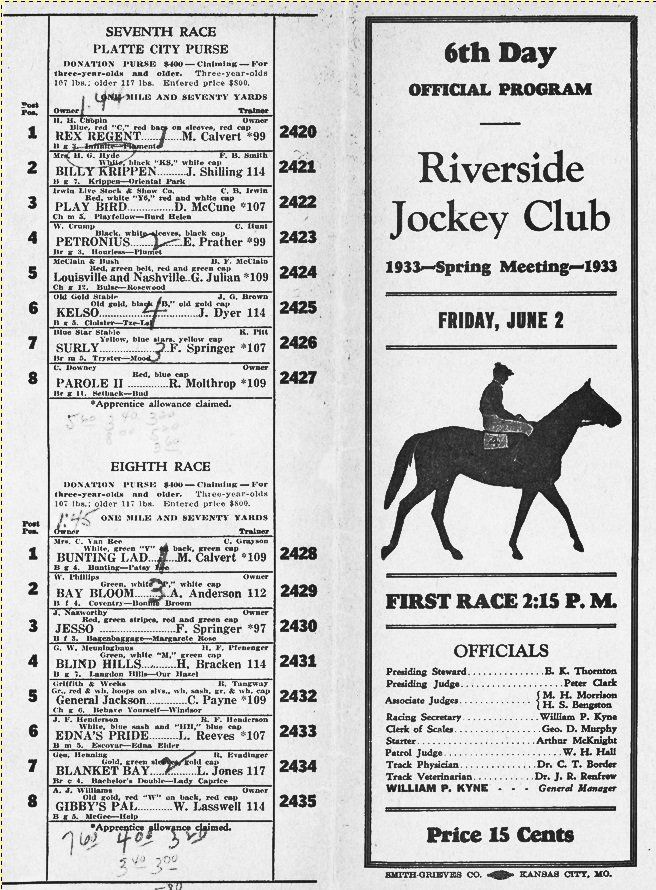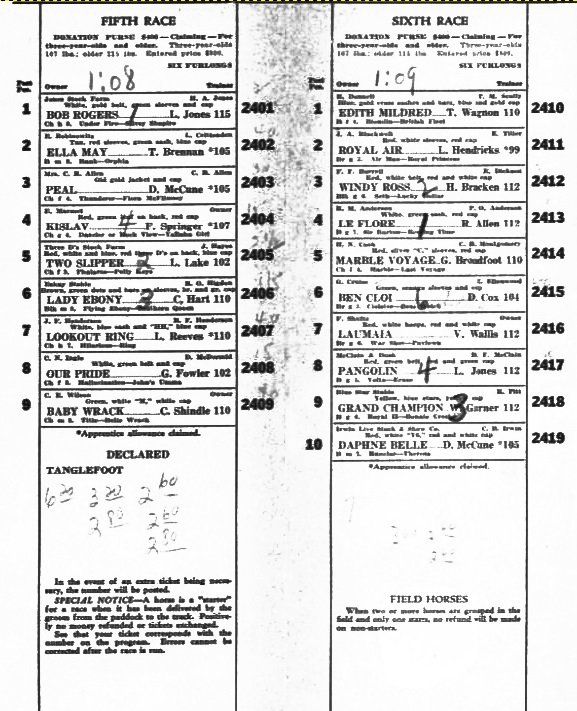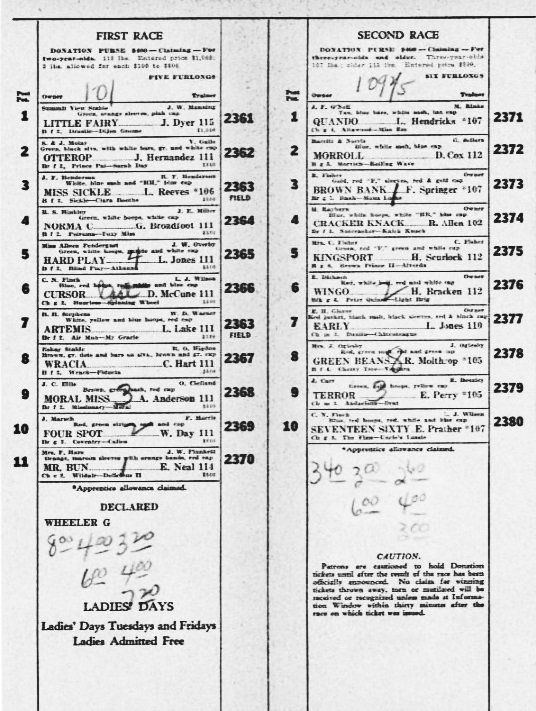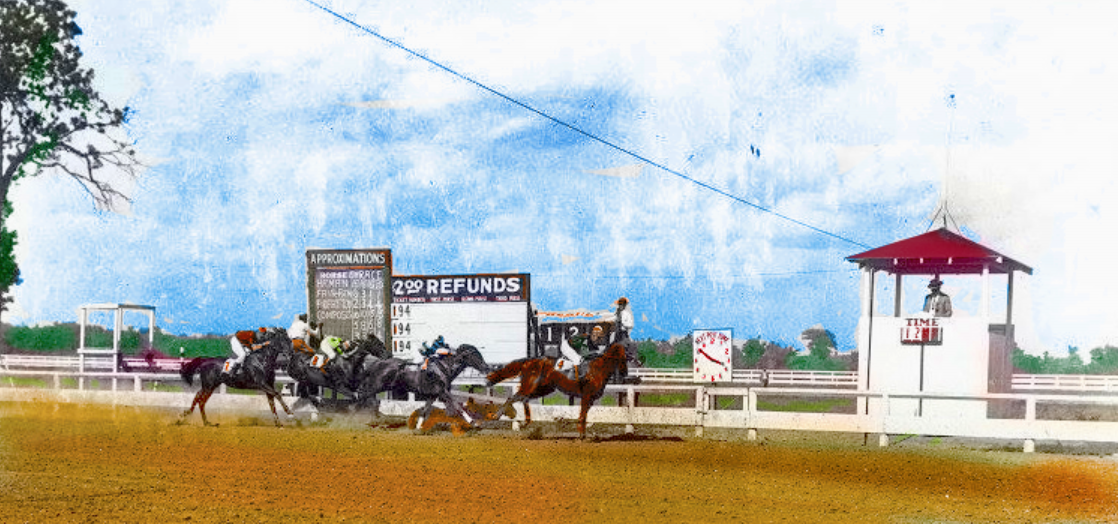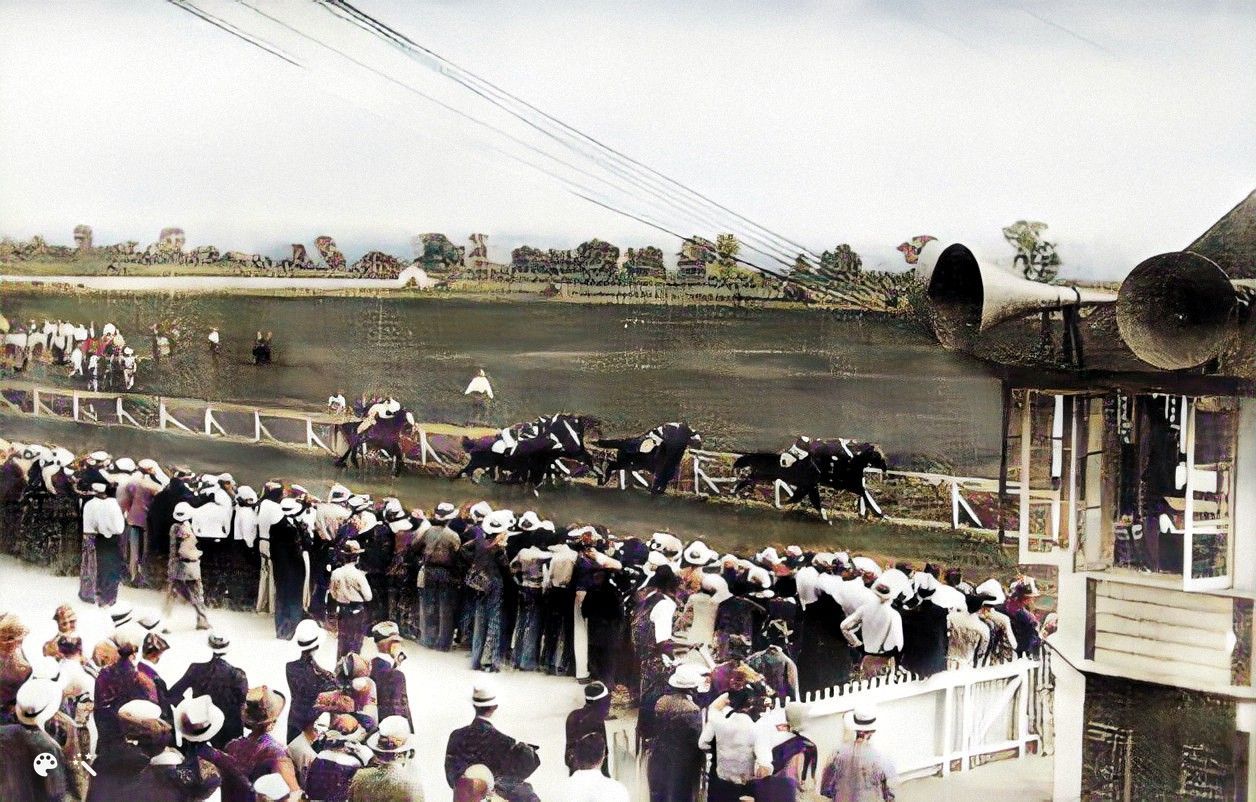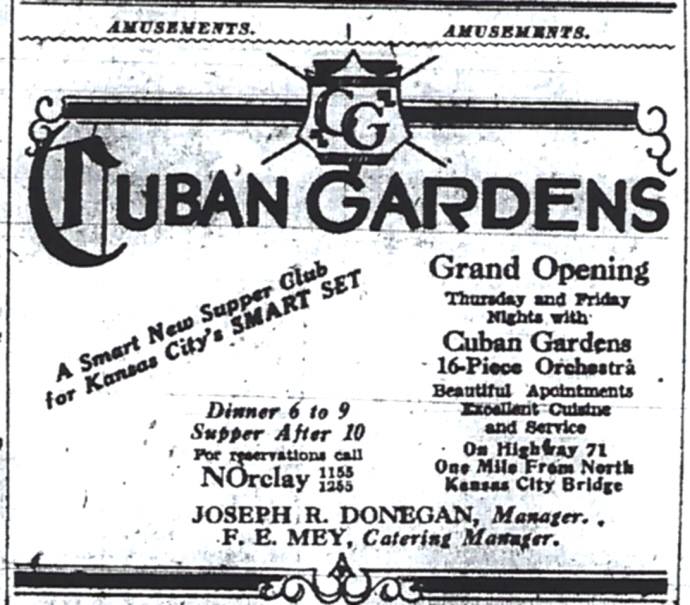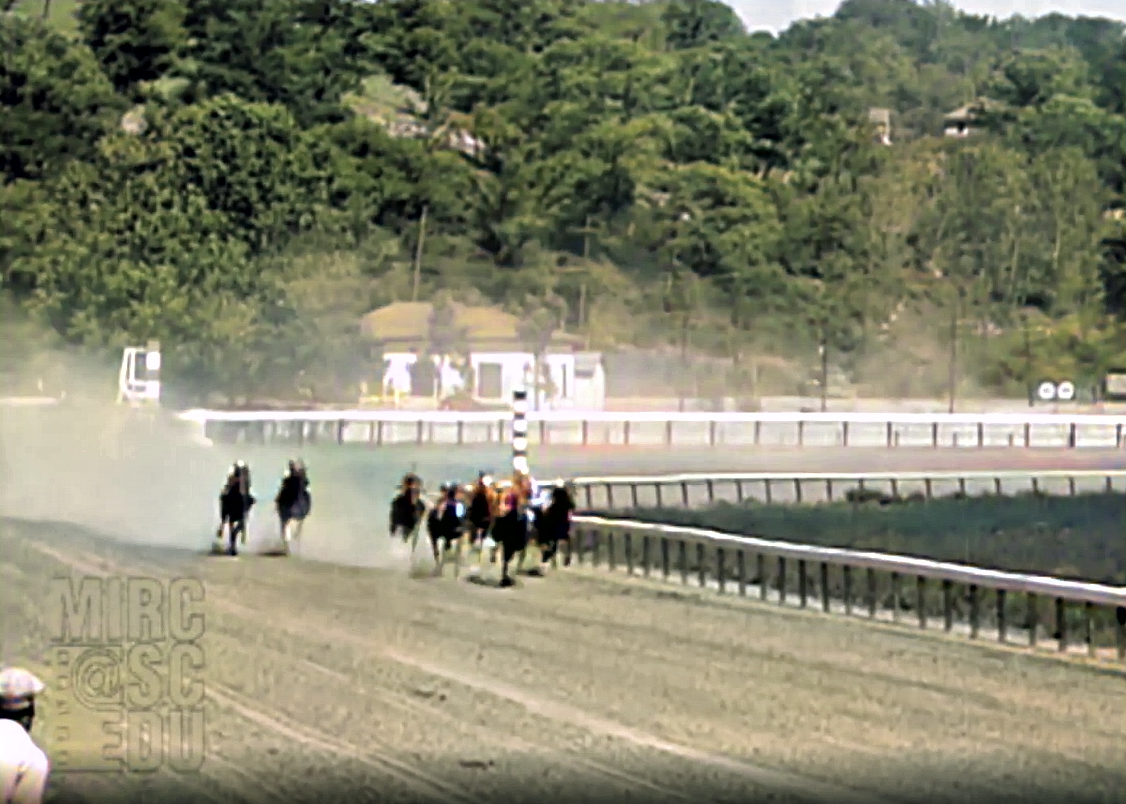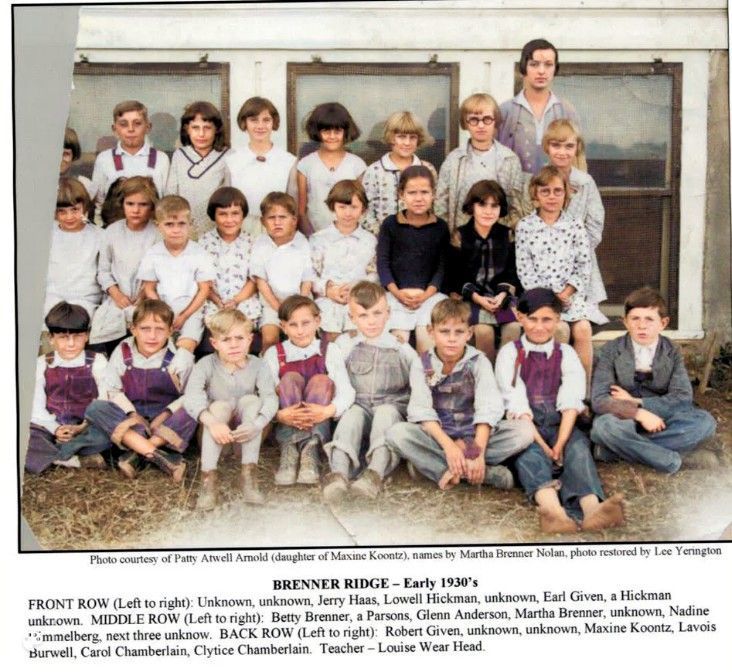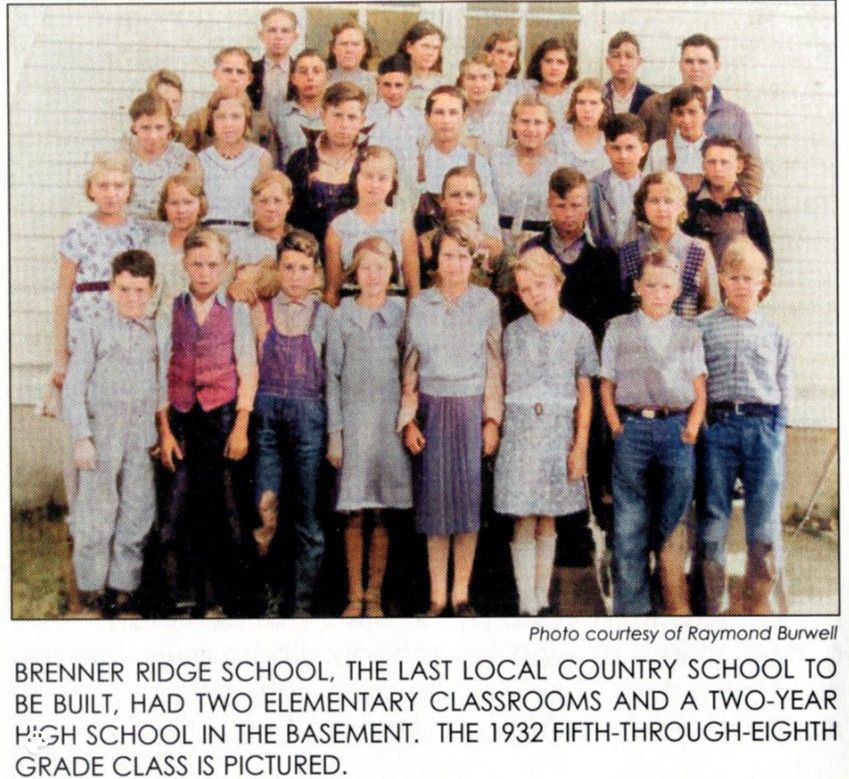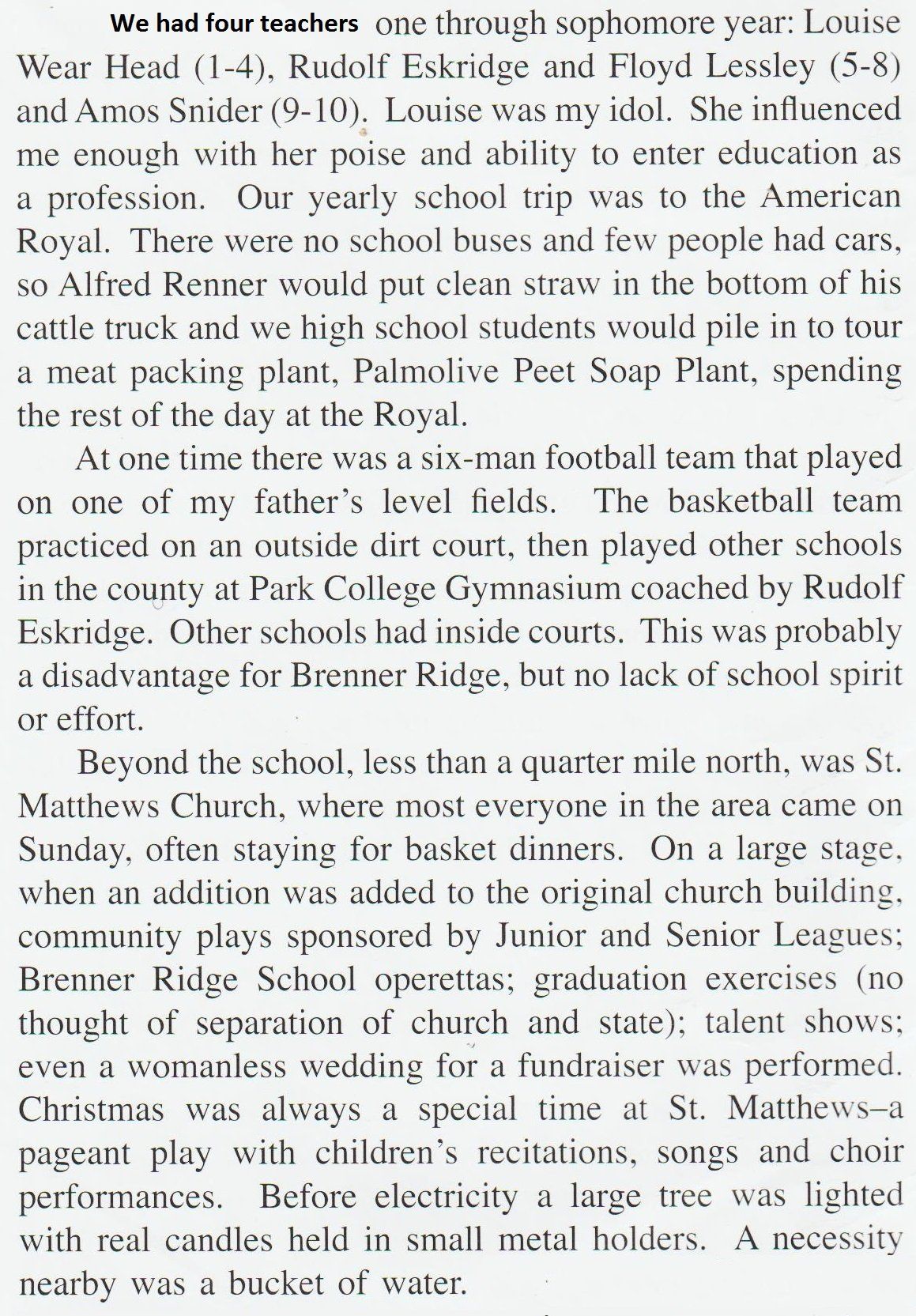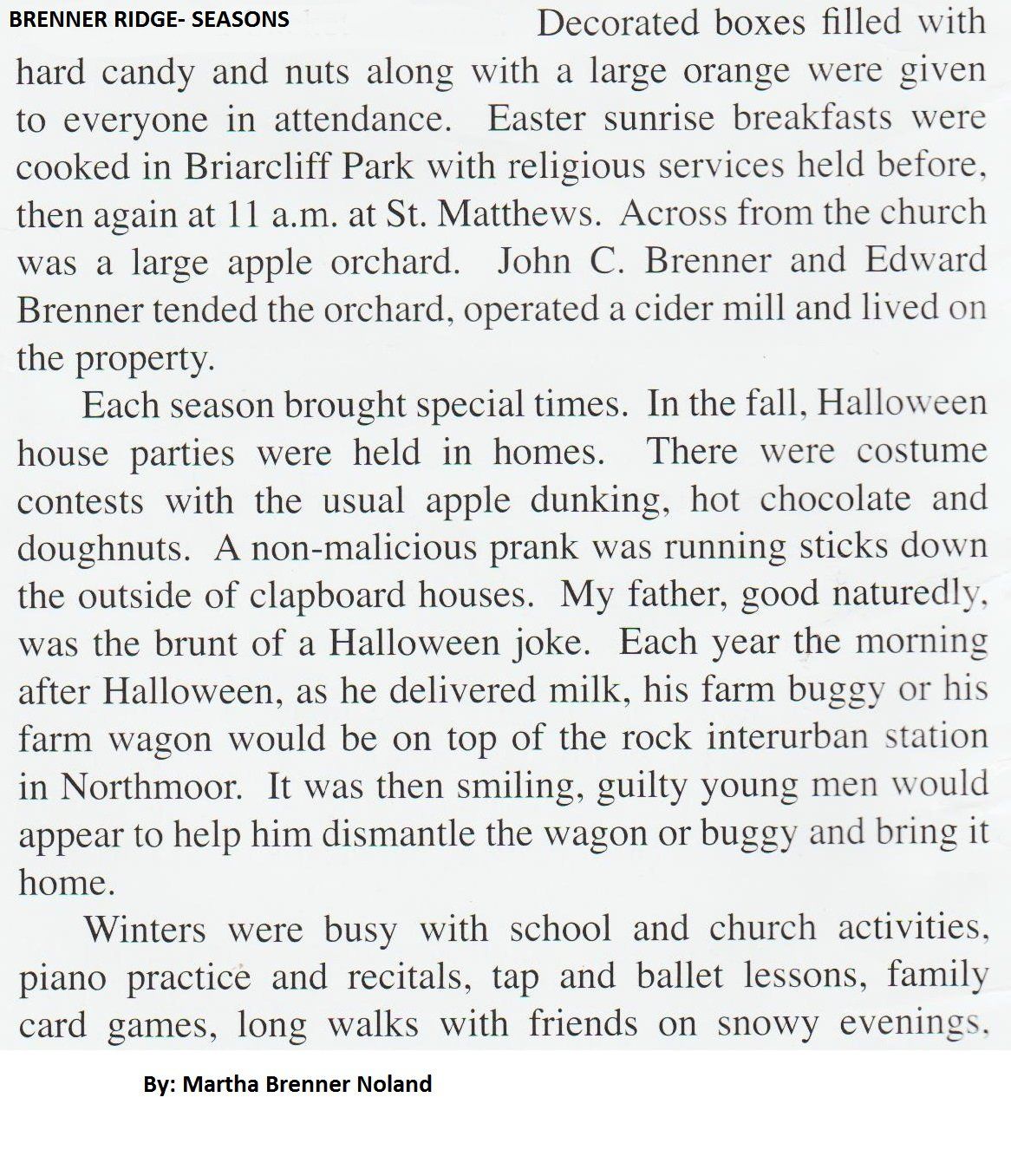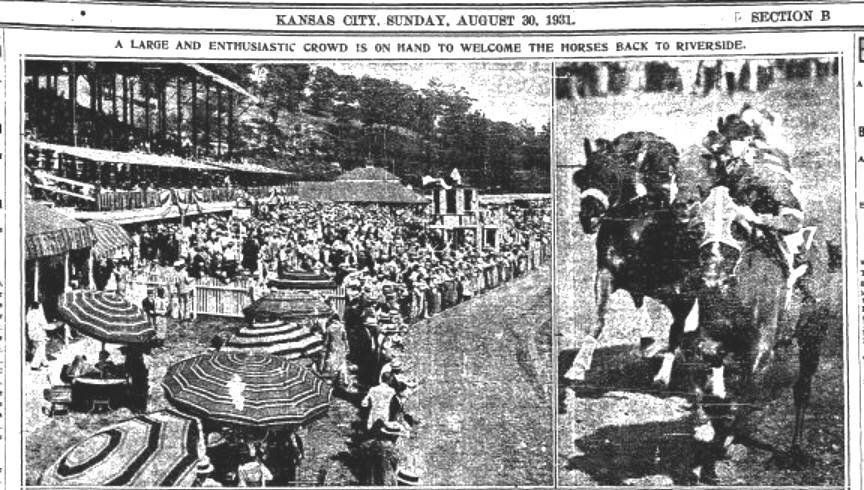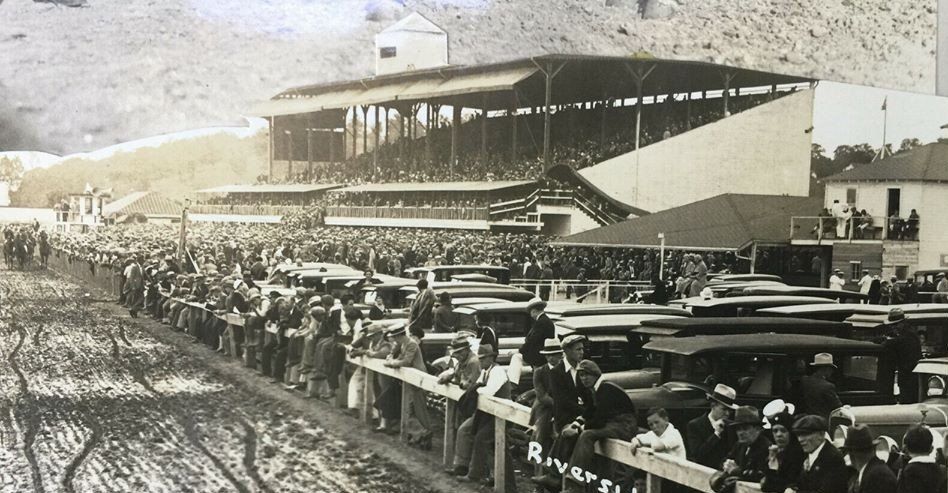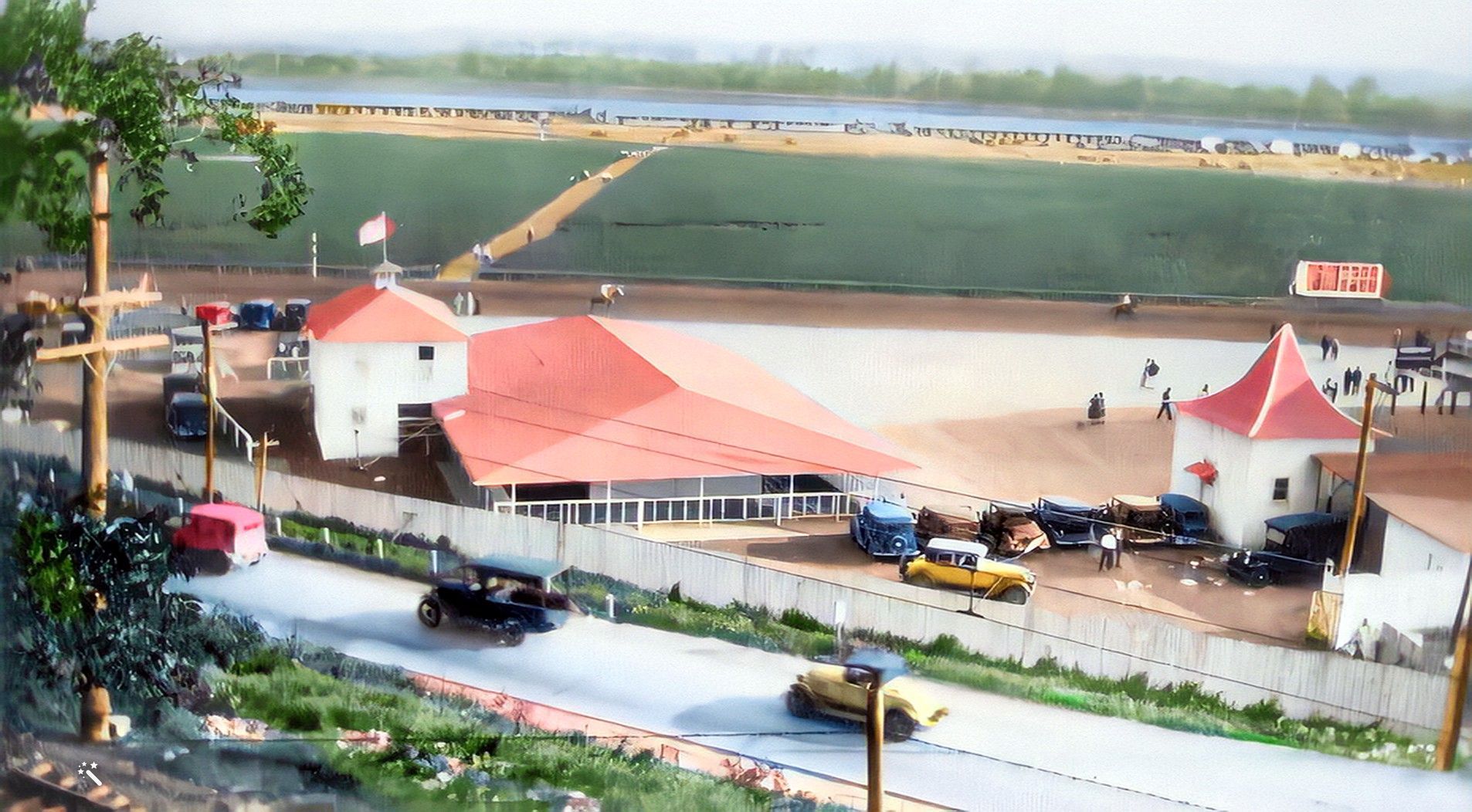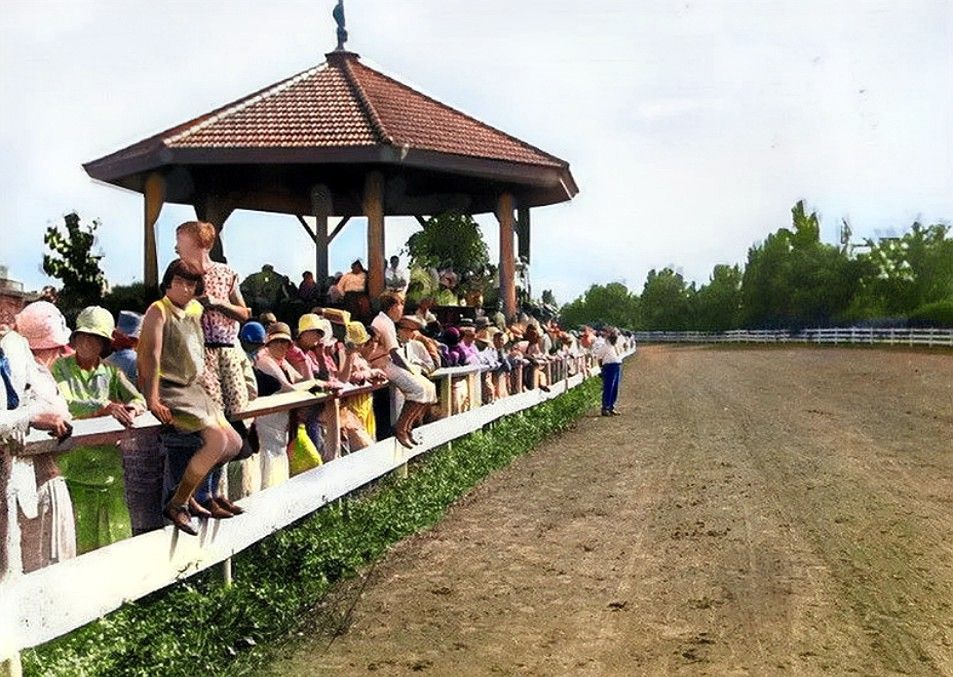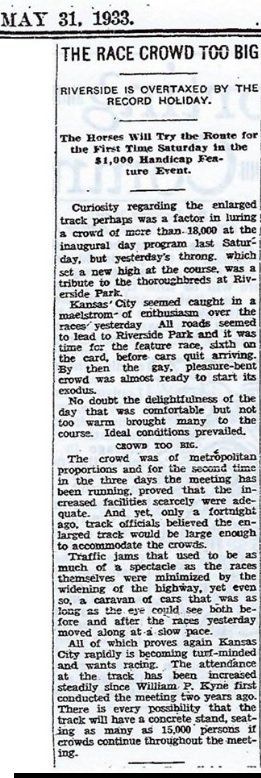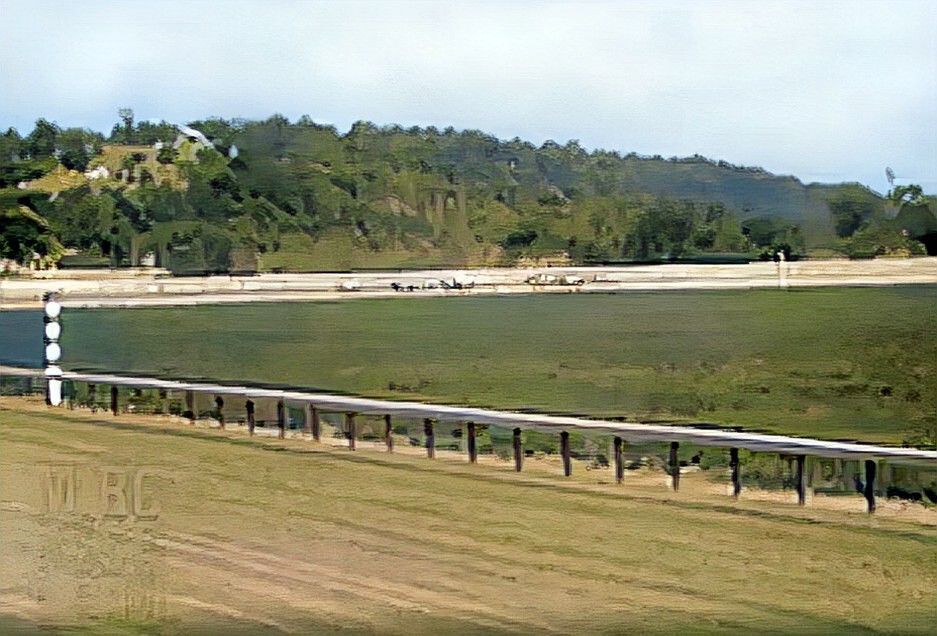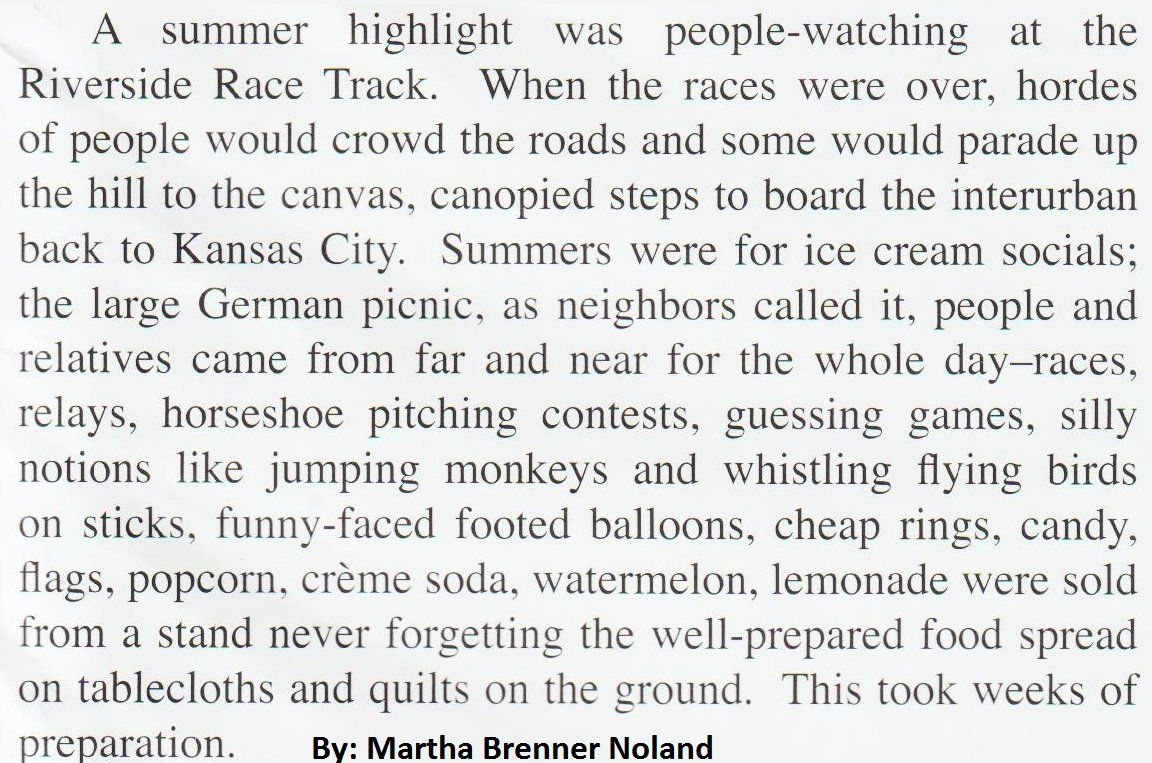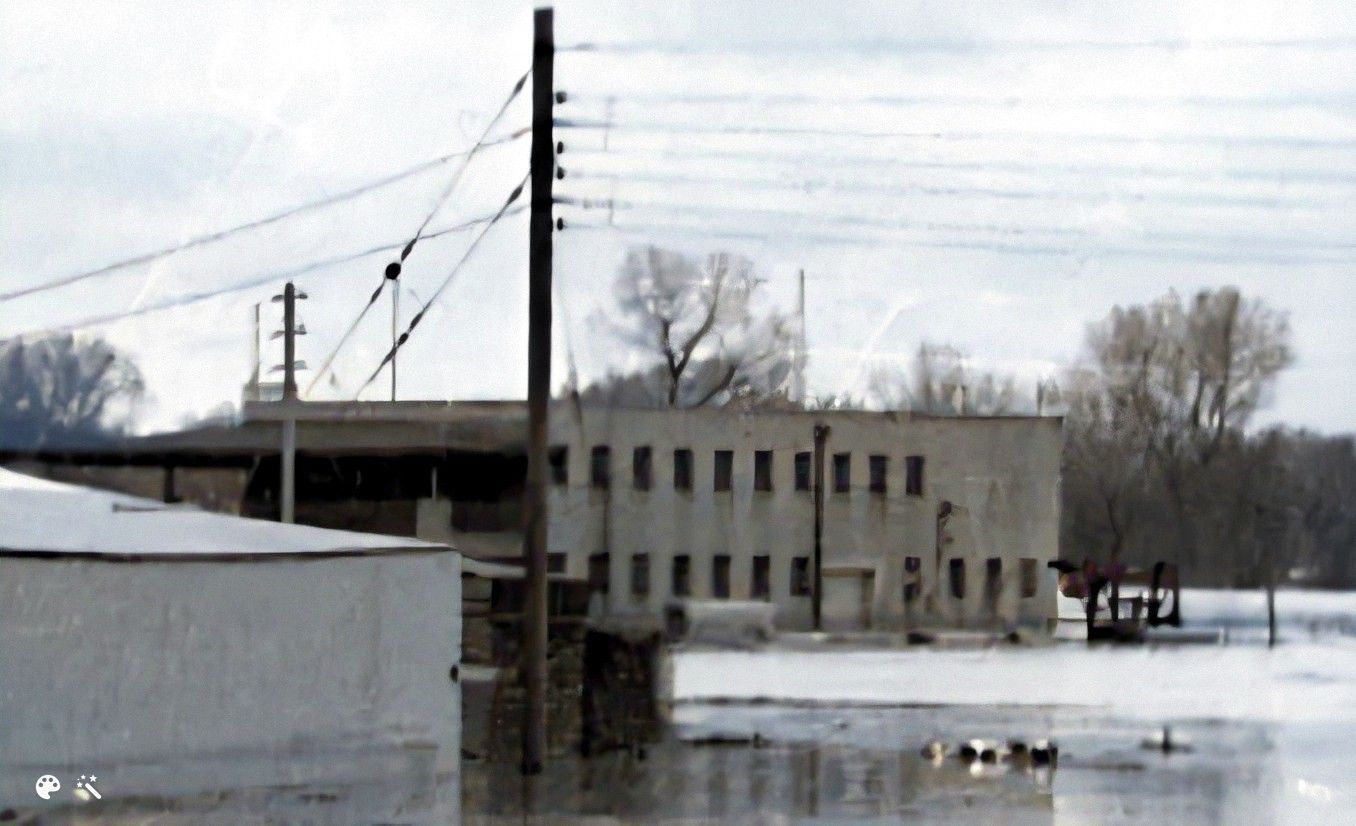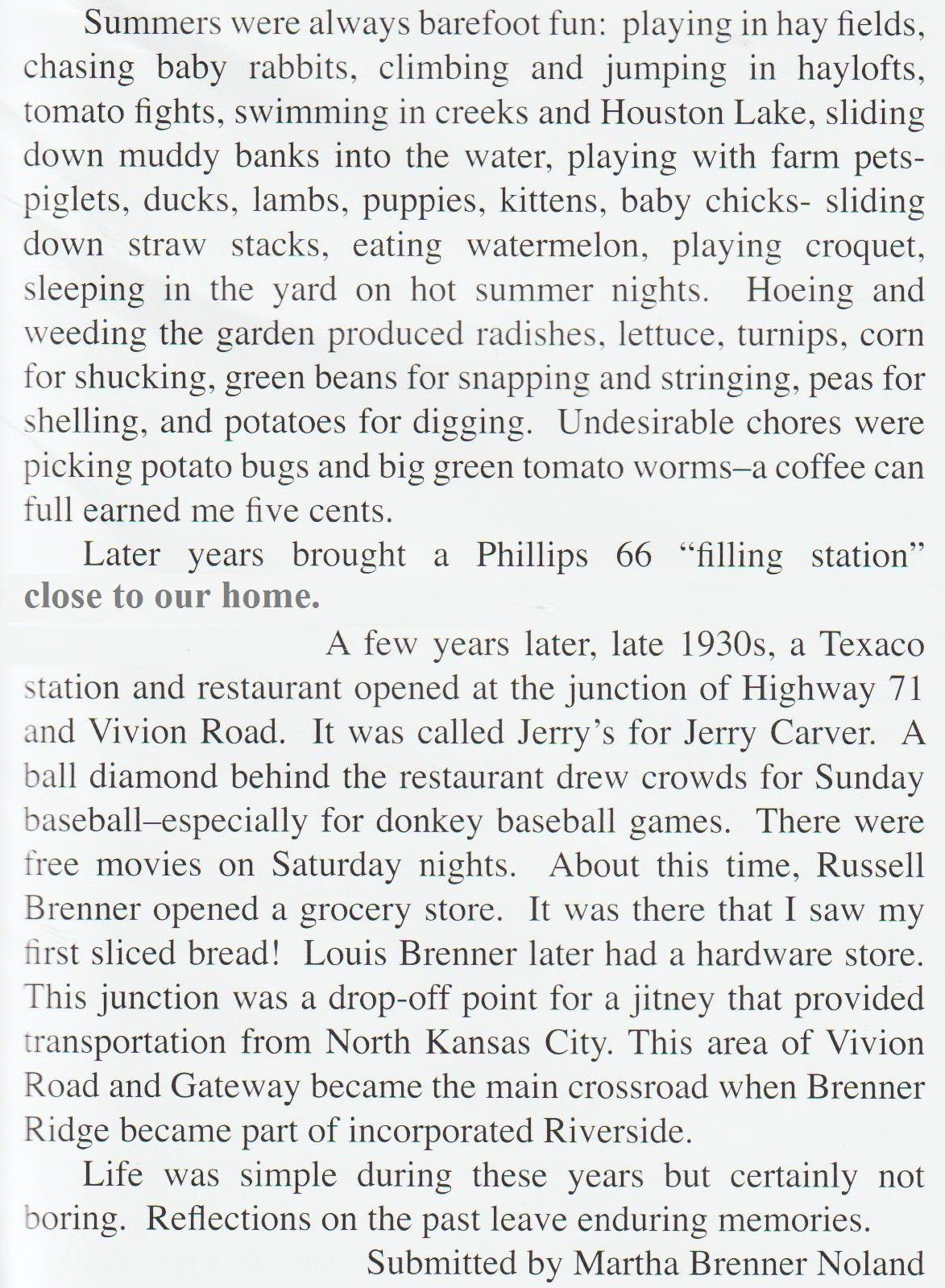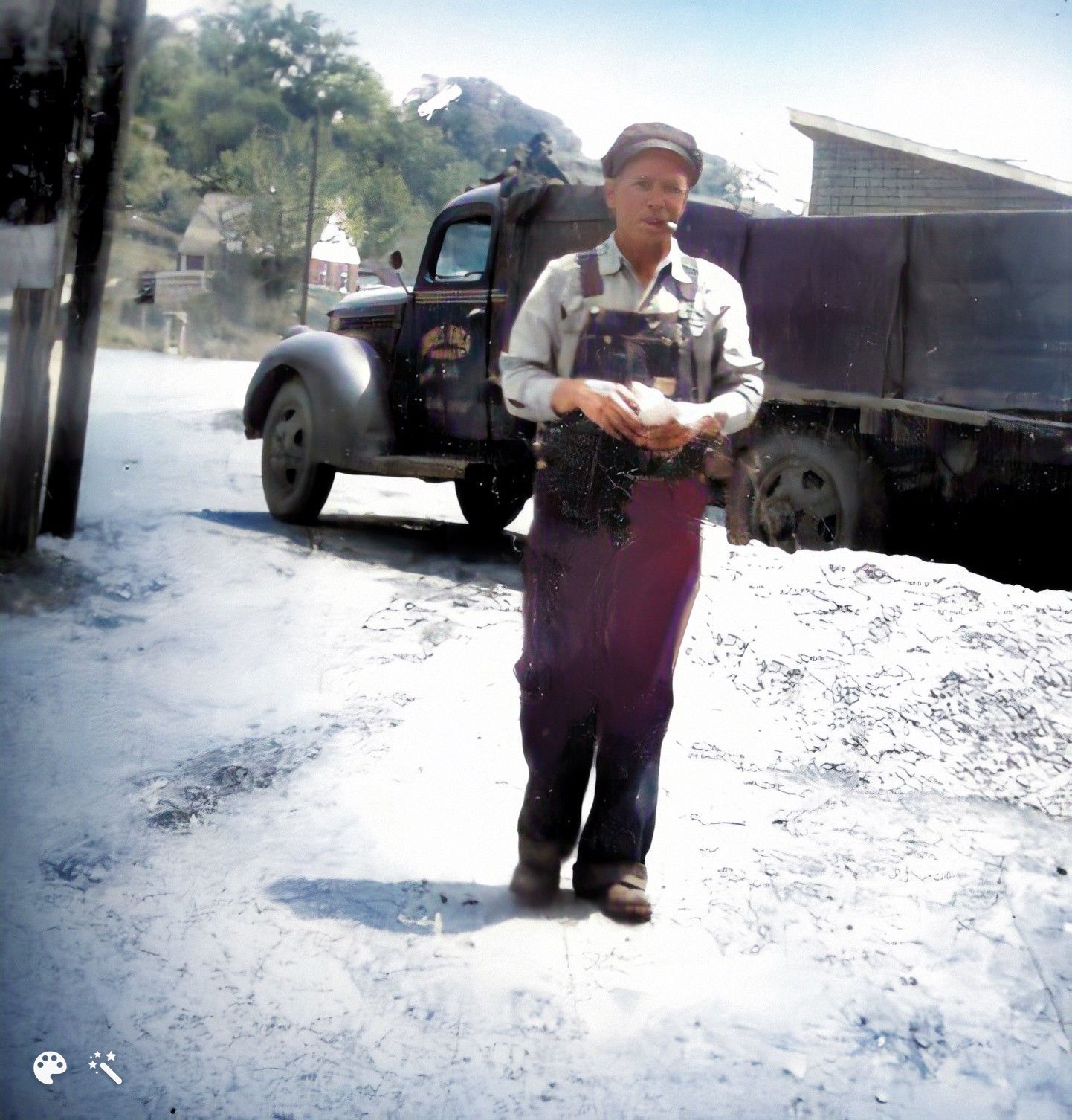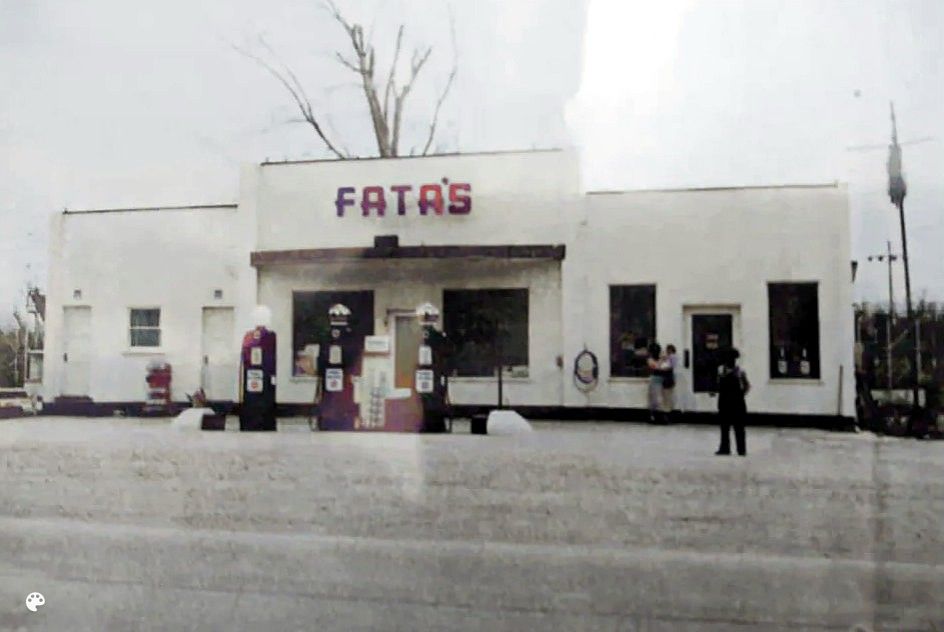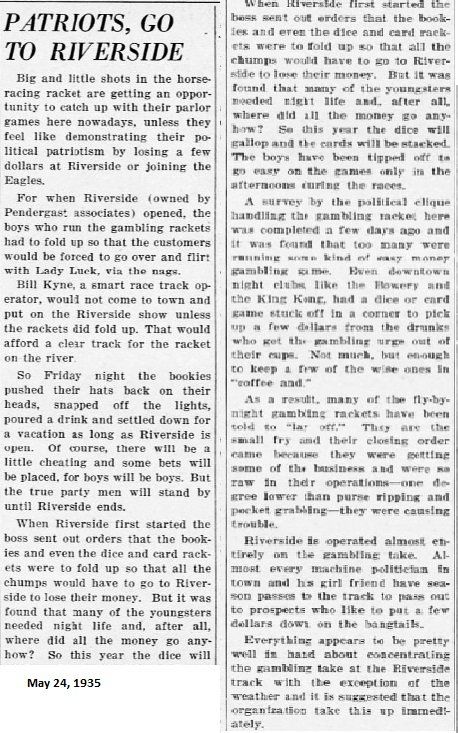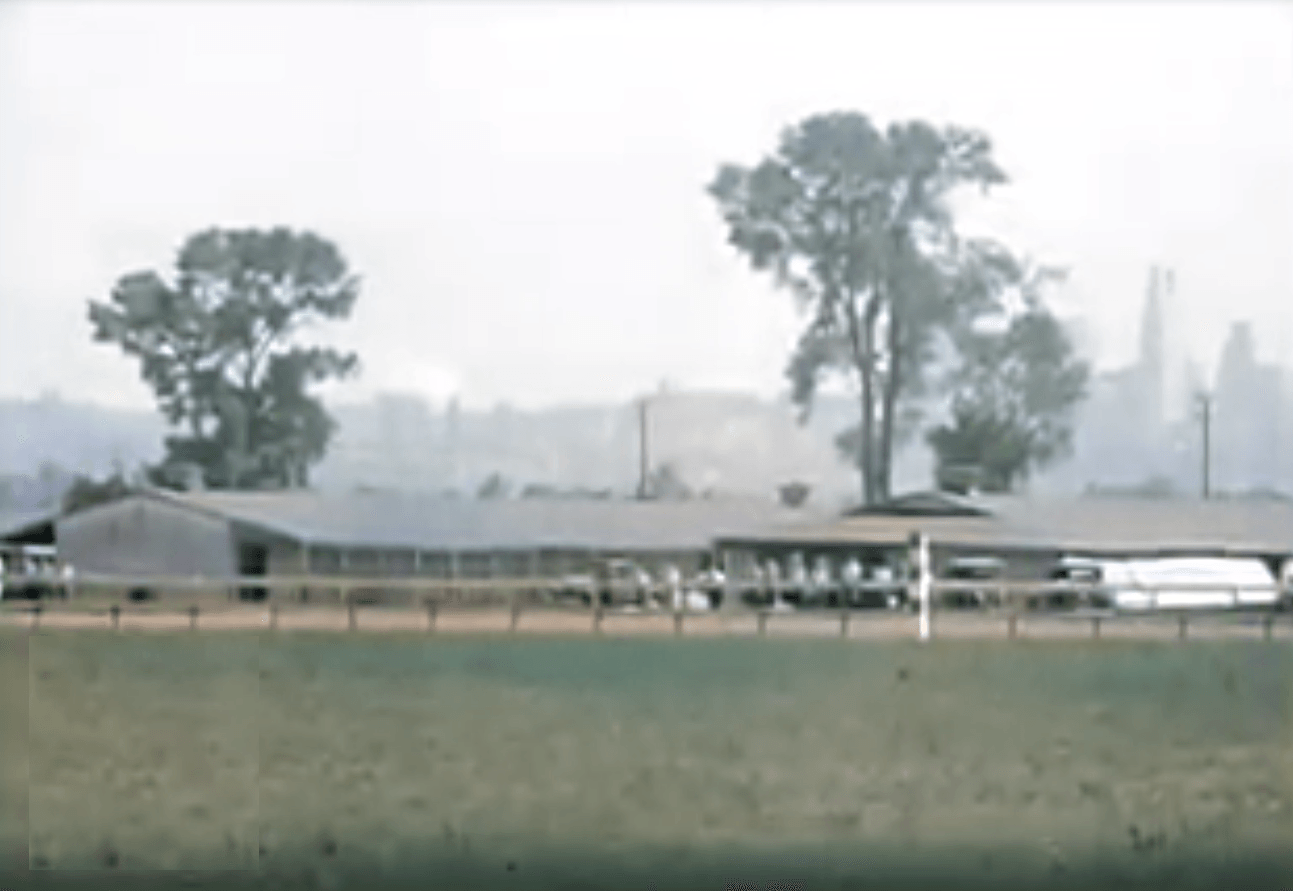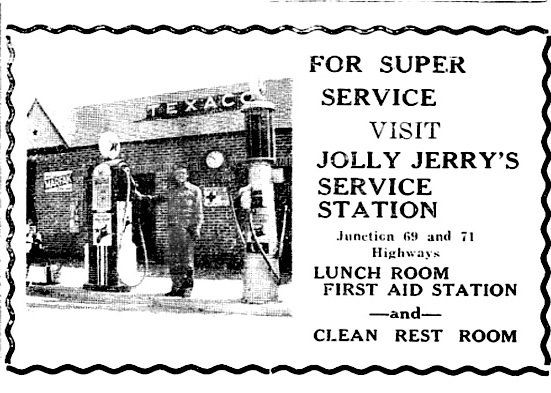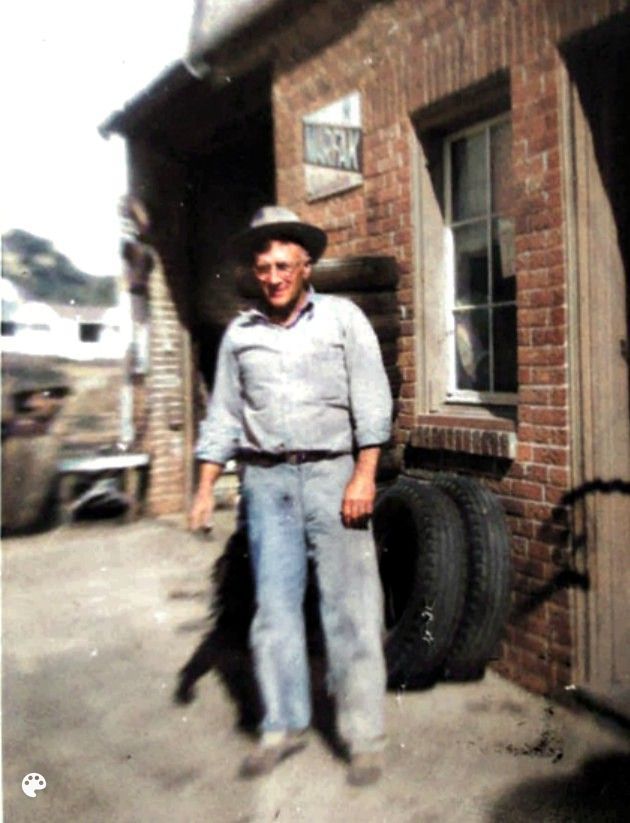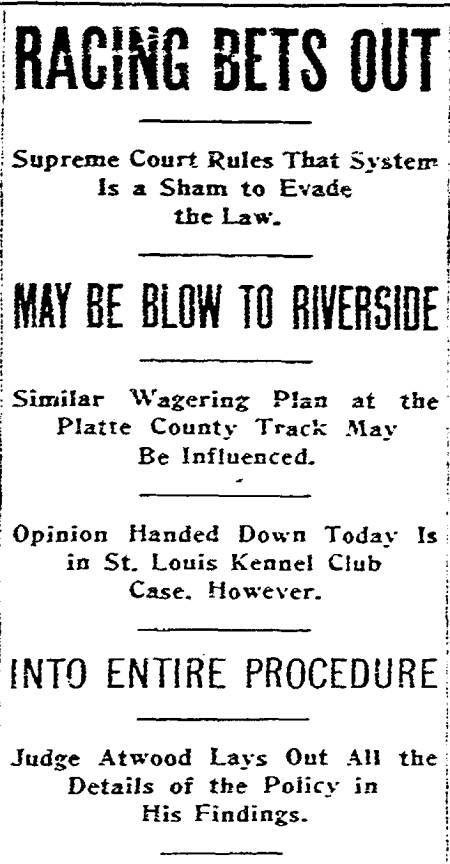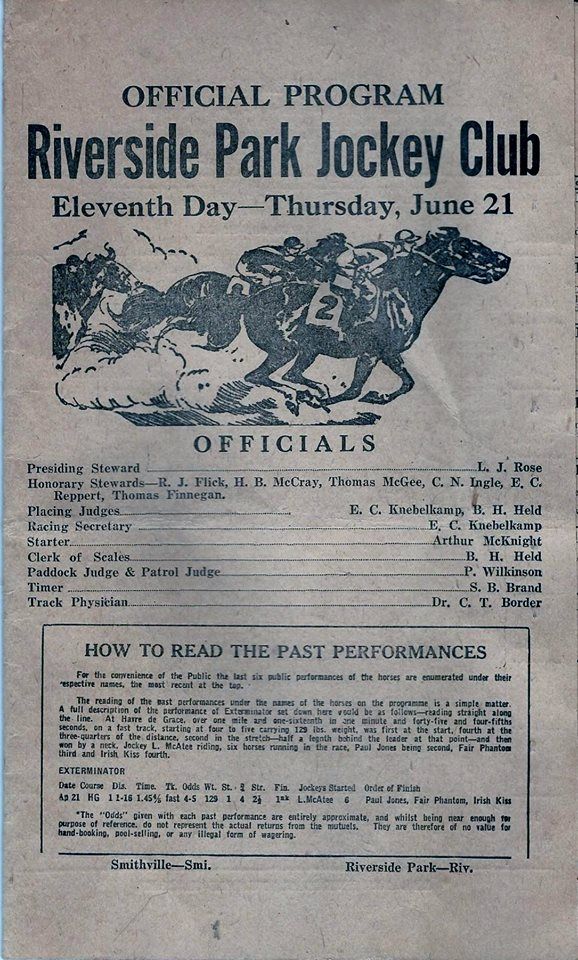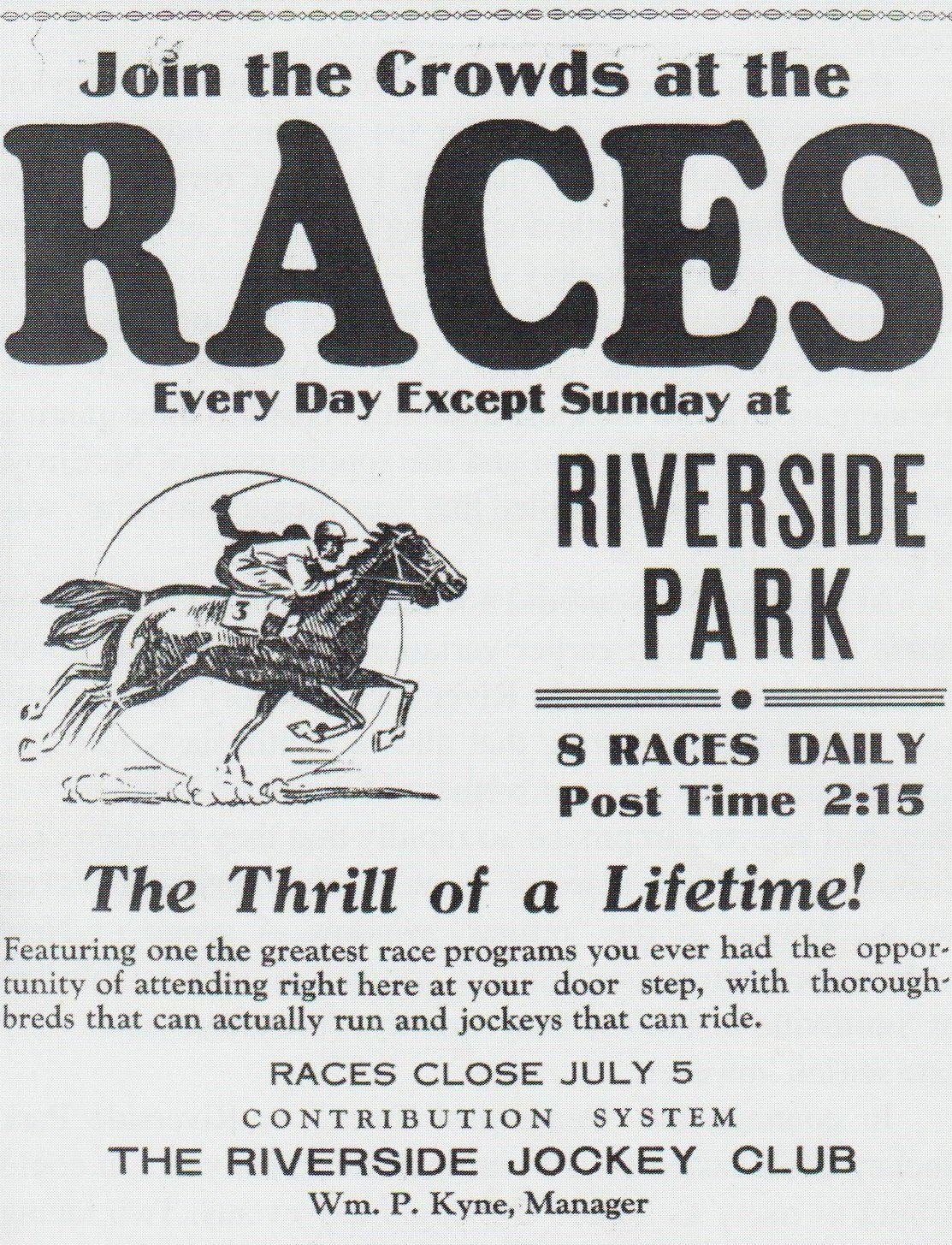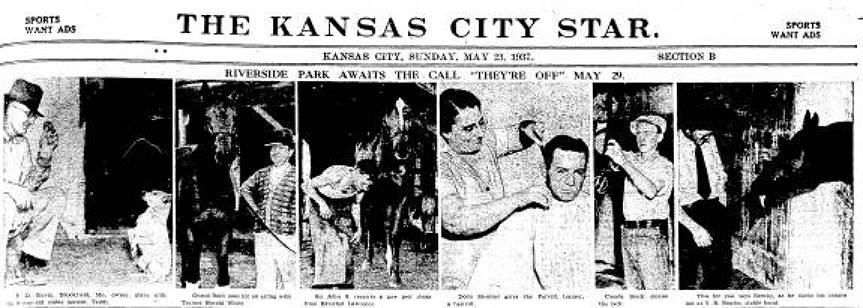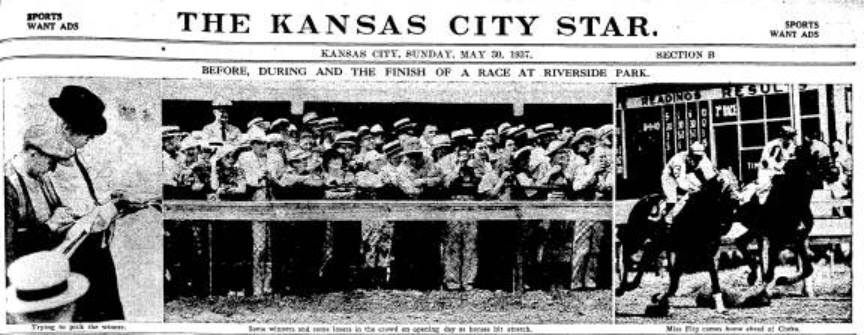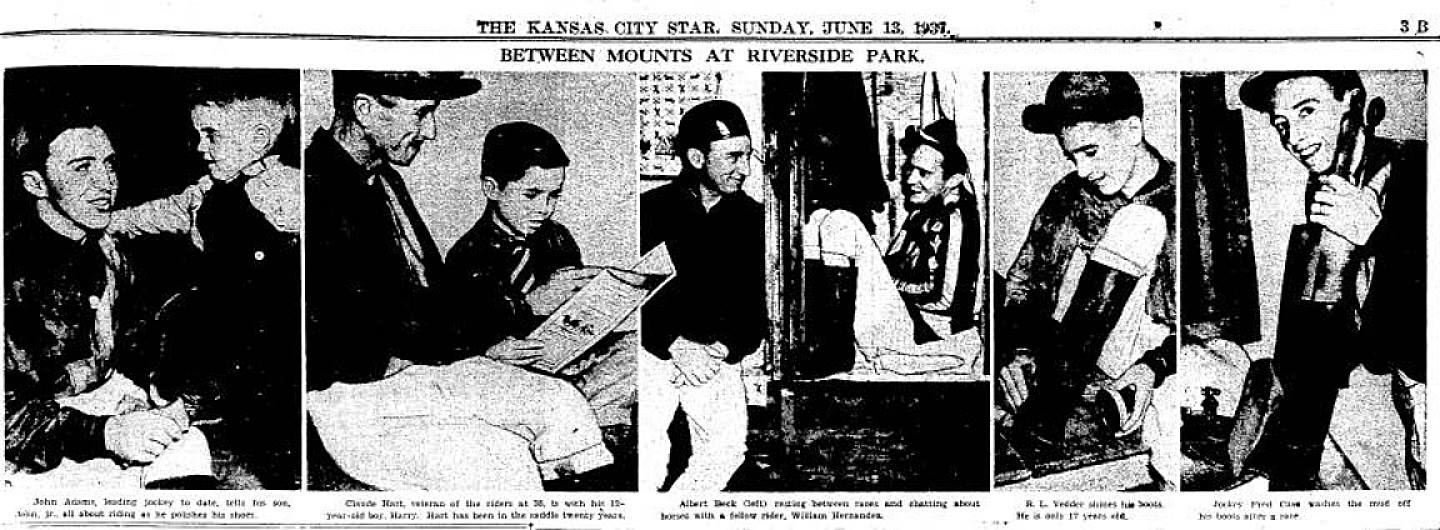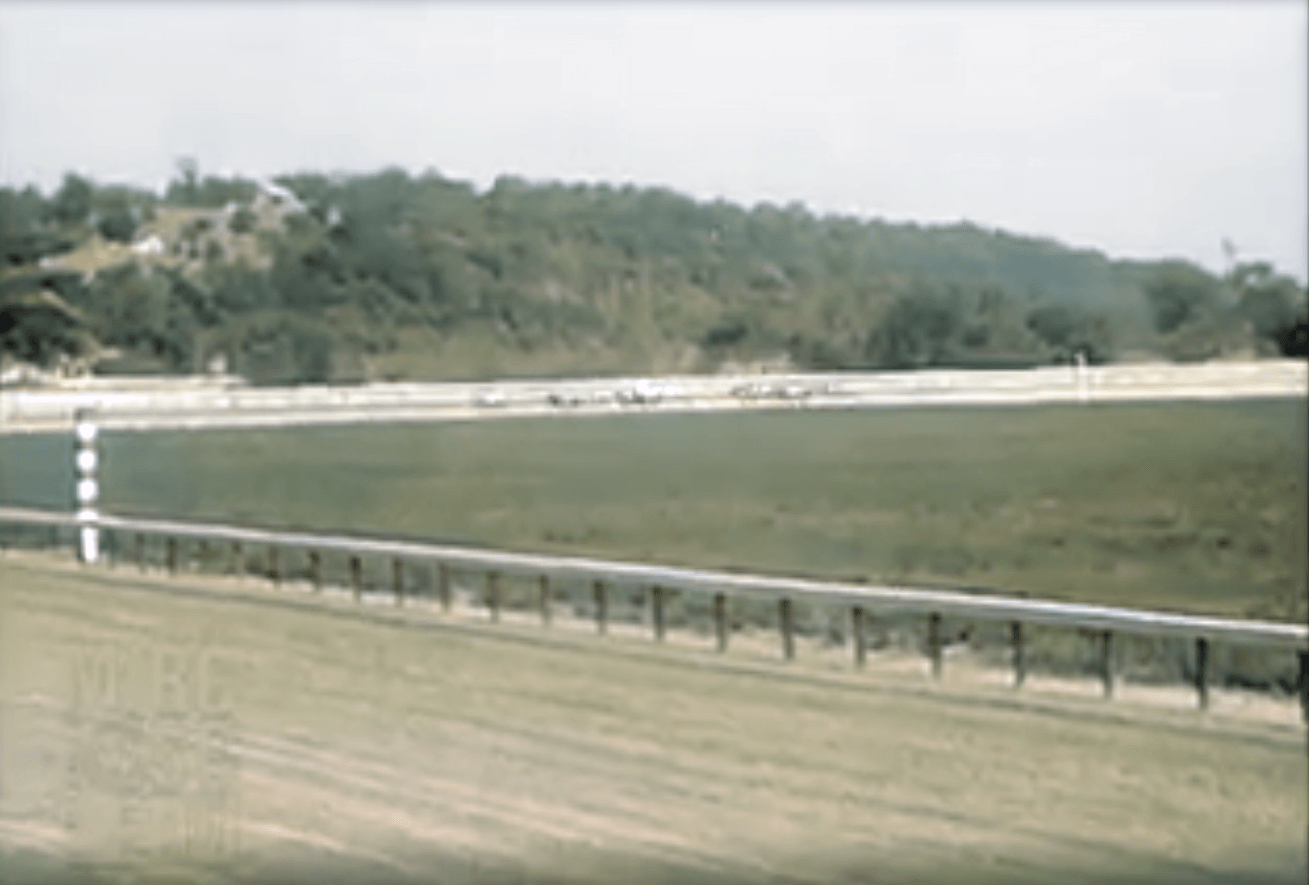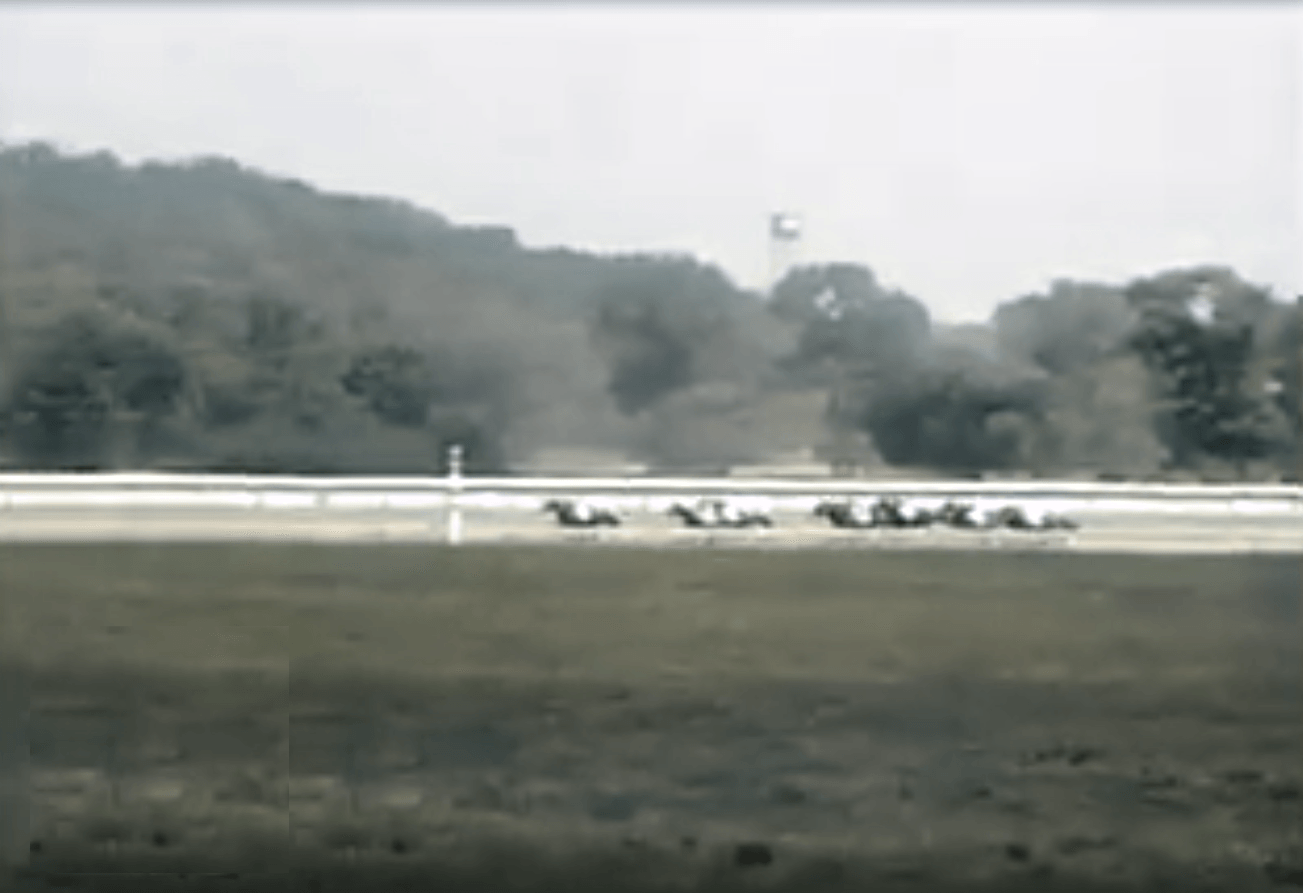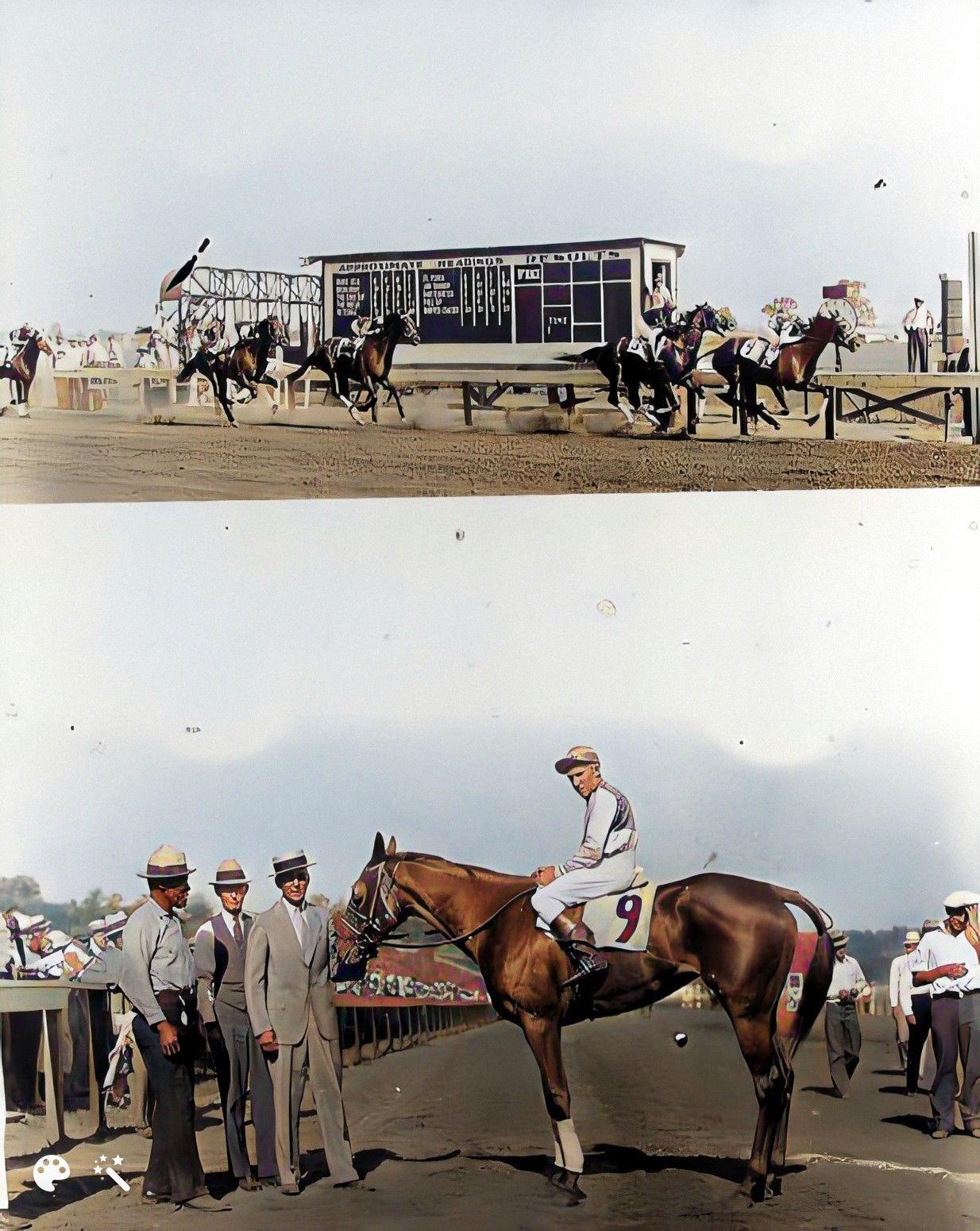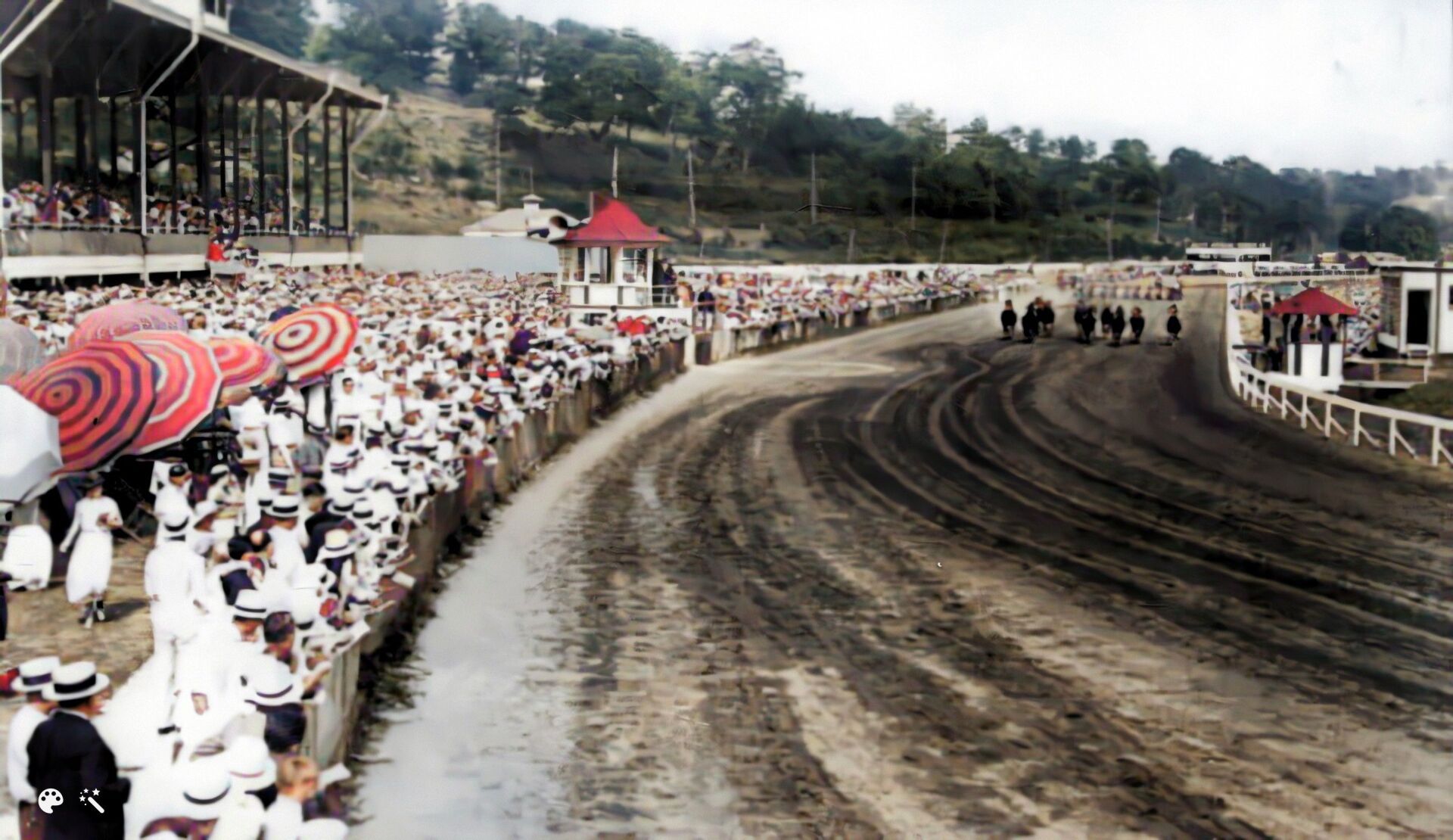1928-1937
RIVERSIDE PARK, aka RIVERSIDE DOWNS, RIVERSIDE JOCKEY CLUB
[See the video page for more]
Tom Pendergast, infamous political boss of Kansas City during the 1930s, had close ties to Riverside. One of Pendergast's passions was gambling and especially horse racing. He helped return horse racing to Kansas City during the 1930s when a court ruling allowed a limited form of "donation" gambling. In 1928, he and a Kansas City group organized the Riverside Park, taking over the grounds previously used by a dog track. The park was generally known as Pendergast's track, although his name did not appear on the legal papers. However, the names of his business associates and close friends were prominent in the list and the Pendergast association stuck.
The first horse track was a part of the old greyhound track that had bee owned by the Fairview Kennel Club. It was just inside the Clay county line and had been expanded from 1/4 to 1/2 mile. That was the Riverside Park track from 28' to 32'.
In 1933 Pendergast moved it inside Riverside and expanded the track to 1 mile. This would be it's last move and it lasted from 1933 to 1937.
Riverside Park, also sometimes known as the Jockey Club or Riverside Downs, was very successful, growing into a large establishment with many windows for "contributions" and "refunds." With exciting thoroughbred racing almost all week, at its peak the track drew crowds of nearly 20,000 in a single day. These crowds were a major factor in Pendergast's push for the widening of the highway from a two-lane to a four-lane and the building of the Fairfax Bridge to bring over the Kansas money.
There were two seasons per year for racing; 30 days in the spring and 30 days in the fall at the rate of eight races per day. The track achieved national notoriety in movies and had public appearances by Harry Truman among various others during its years of operation.
The park was comprised of about 30 buildings. West of the track was the clubhouse where Pendergast's friends and other elite visitors would sit on the second floor. From there they could see the entire racetrack. North of the clubhouse stood the huge grandstands which surrounded three-fourths of the track.
Built mostly of wood, these bleachers held several thousand people and resembled those at the state fair grounds. Just before one race season, a fire destroyed the bleachers. But within hours, Pendergast had bulldozers scooping up the debris. He brought in floodlights and a 24-hour work crew. Before opening day, new grandstands were complete.
On a normal race day, jockeys were up at 6 a.m. exercising the horses and checking the charts to see what horses they would be riding that afternoon. Jockeys would draw their riding numbers and do their required routines until the 1 p.m. weigh-in. A jockey might have ridden five to eight mounts a day, a grueling schedule requiring physical training and constant dieting, plus a thorough knowledge of horses and how to ride them.
The track's livelihood lasted only until 1937, when a new wave of anti-gambling sentiment swept the area and brought laws which outlawed even the "donation" gambling. At the time of Pendergast's downfall in 1939 (due to taxes and colin cancer), the District Attorney noted that in 1935 Pendergast's horserace bets and losses had forced him to seek income outside his normal resources.
Little evidence of the graceful Riverside Park still remains today; several Riverside businesses utilized various structures originally built for the track. To this day, a building south of the new Riverside city maintenance center sports some unusual poles atop the building - flag poles that once graced the club house for the old Riverside jockey club.
Confessions of a Jockey & Riverside resident.
Vern Davis of Riverside doesn't have to read about Tom Pendergast or thoroughbred racing in Kansas City. He lived it. Davis was raised in Brookfield, Mo. and spent most of his time riding horses. By the age of 13, he was competing in the "bushes" - local events at county fairs and other venues. With his light weight of only 105 pounds, he was a perfect Jockey. "I was horse crazy. I was small and that's how I got started." Not surprisingly, Davis quickly gravitated to what became Missouri's finest track, Riverside Park. "I came to Riverside the year it opened," he recalled. "I was just a kid and it was the big time, even though it was not a recognized track. They didn't have betting. They had donations. If you won, you went to the window and got a 'refund.'" The track held up to eight races each day so a rider could stay very busy.
The Interurban provided easy access for anyone from Kansas City. The station was literally across the street from the entrance to the track. "It was really 'the place' to be," Davis recalled. "There was a restaurant right there in the club house. Sandwiches and everything was available in the grandstand. People would come out and make a day of it." The quality of the track was evident by the thoroughbreds shipped in to compete. Davis had been riding under contract to another stable when Riverside opened. The owner brought him to the new facility and sold his contract to a large stable at Riverside. He rode at Riverside for all of its brief life. "My last year or so I worked with Tom Pendergast," Davis recalled. "He was the best man in the world. He liked all of the stable hands and all of the riders. He was a really good man to us. He treated me awfully good."
Davis managed to keep his 103-104 pounds until he was 40 years old. He also managed to sustain a close-knit family life for what was often a vagabond lifestyle. "I had my wife and two kids in a trailer traveling all over the U.S.," he recalled. "We'd go from Chicago to New Orleans to Florida. My first winter of racing was even in Cuba." Davis and his wife, Berneice, eventually had four sons and today have 14 grandchildren and 17 great-grandchildren. He admits that his growing family was a reason to retire, along with his growing waistline. "Berneice liked the tracks but it was rough," he agreed. "That was one thing that helped me get off the track. I was a family man. I wanted to stay together."
Davis still had time for a couple more careers. He broke horses for several years for Herbert Wolfe, of Wolfe Brothers clothing fame, and eventually held a 30-year career with Kansas City Power and Light. He also served as a Riverside Marshal and remained active in the Riverside community affairs for years. Now 93 he says, "I've lived a long time," he recalls. "But I can still remember that track. You should have seen it with all those people. It was something alright."
